1938 - 1945
Secret Mission
In 1938, the scientific discovery of nuclear fission in Germany inspires teams of European and US scientists to pursue a nuclear chain reaction that can produce large amounts of energy. But with the rise of World War II the following year, US physicists fear the discovery may be weaponized, and they implore President Franklin Roosevelt to mobilize support for the rapid research efforts taking place. After the 1941 attack on Pearl Harbor and US entry into the war, a secret government project is created to build a nuclear fission bomb and end a brutal war. Central to this ambitious war effort is an agricultural valley in East Tennessee that will change forever.
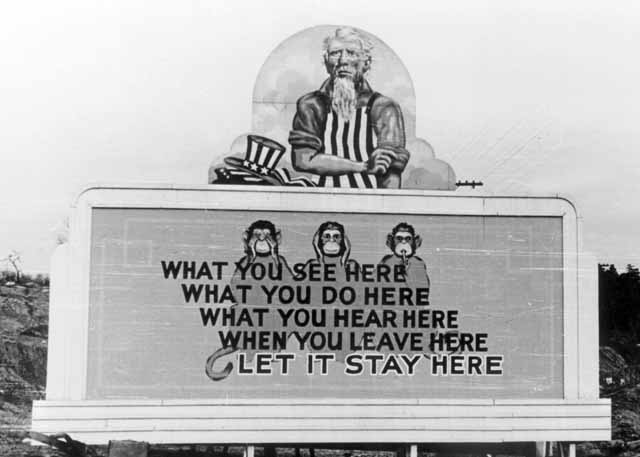
1939
Einstein's letter
At the urging of fellow physicists Leo Szilard, Edward Teller, and Eugene Wigner (future ORNL research director), Albert Einstein writes to President Franklin Roosevelt in August warning of the possible development by Germany of "extremely powerful bombs of a new type" and advising the US to accelerate research on nuclear chain reactions.
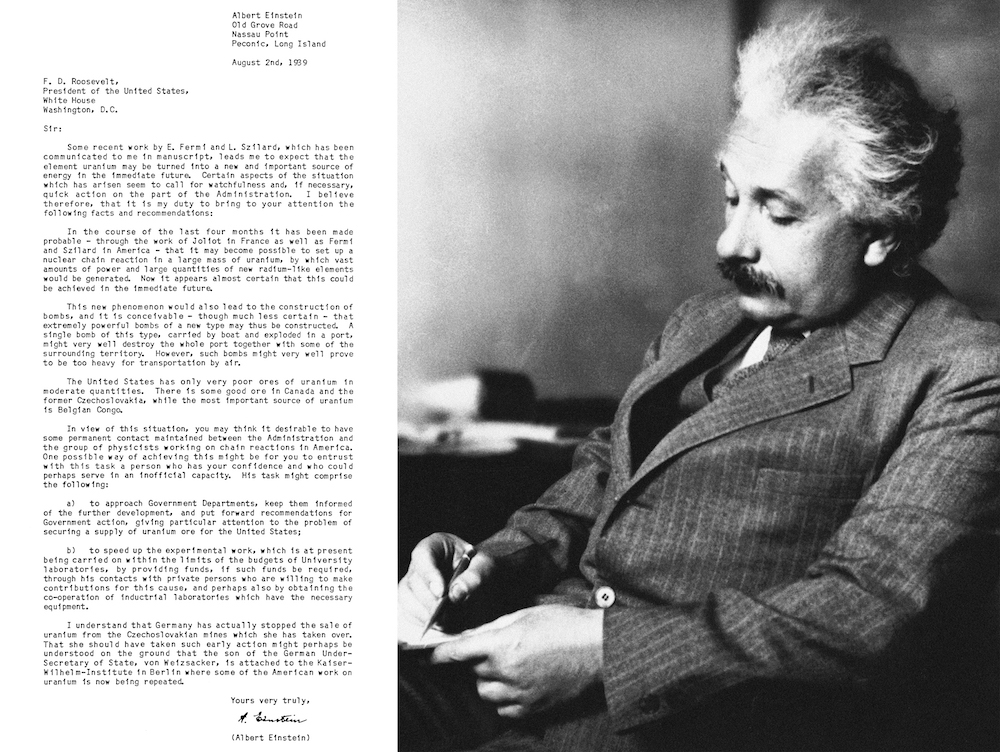
1942
Manhattan meets East Tennessee
The Army Corps of Engineers forms the Manhattan Engineer District—known as the Manhattan Project—to manage the construction of plants for producing fissionable materials. By September, General Leslie Groves takes charge and makes the decision to buy 59,000 acres of land in East Tennessee that will come to be known as Oak Ridge and house the K-25 and Y-12 sites to separate uranium and the X-10 site to demonstrate plutonium production and separation.
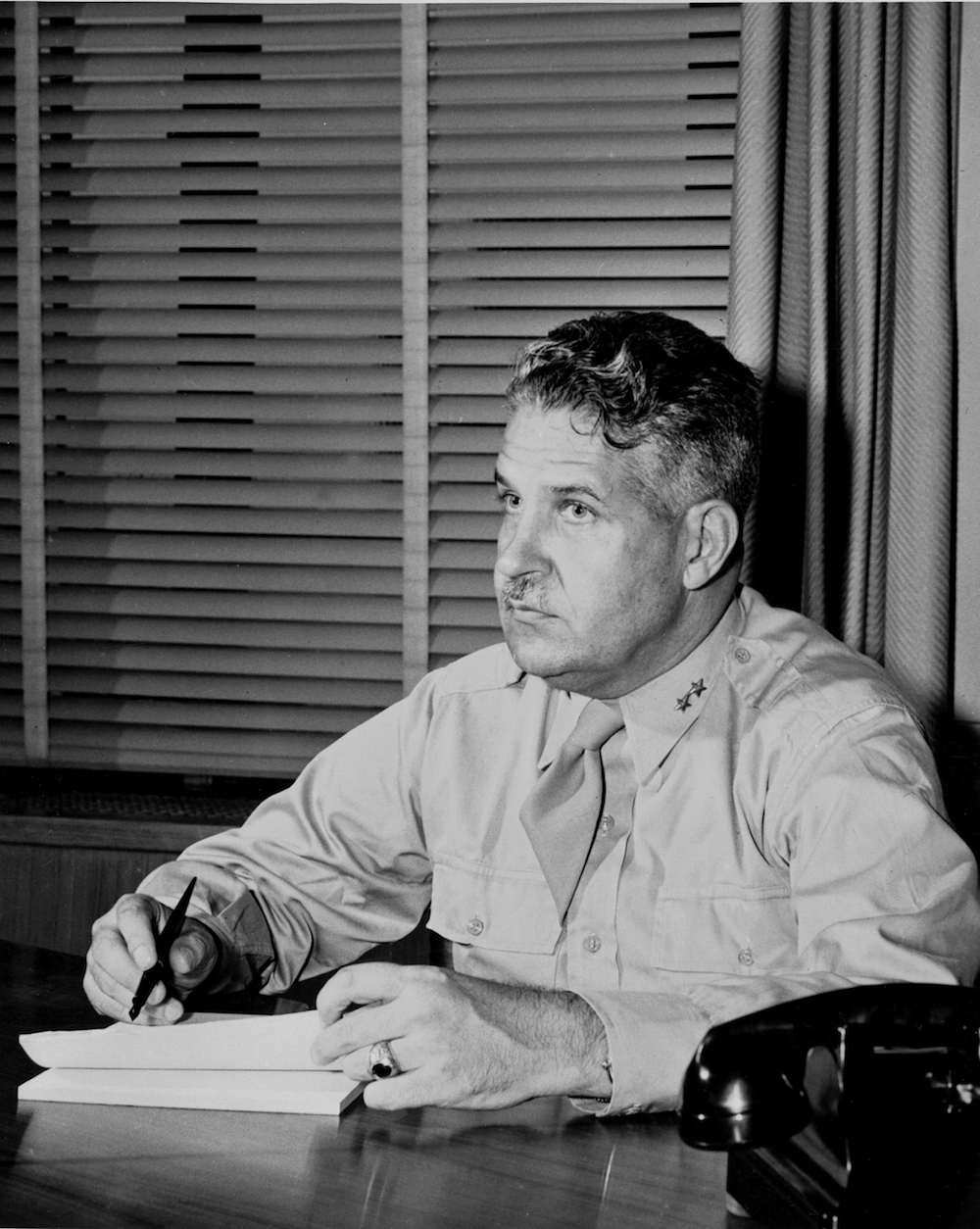
1943
Under Construction
General Leslie Groves directs DuPont to mobilize construction and support personnel to build a facility in Oak Ridge that includes an air-cooled graphite reactor and a plutonium-separation pilot plant. The purpose of the facility is to demonstrate plutonium production and separation, and Groves directs the University of Chicago Metallurgical Laboratory to supply the managers and scientists to operate it. On February 2, groundbreaking takes place at the X-10 site that is known today as Oak Ridge National Laboratory or ORNL.

1943
First operating nuclear reactor
In the early morning hours of November 4, Louis Slotin wakes Nobel laureates Arthur Compton and Enrico Fermi. They race in the dark to the Graphite Reactor and witness it going critical at 5:00 a.m., converting uranium into plutonium. The world's first operational nuclear reactor, the Graphite Reactor serves as a plutonium production pilot plant during World War II. It operates until November 1963, pioneering the production of radioisotopes, studies of radiation damage in materials, and development of neutron diffraction as a research tool.
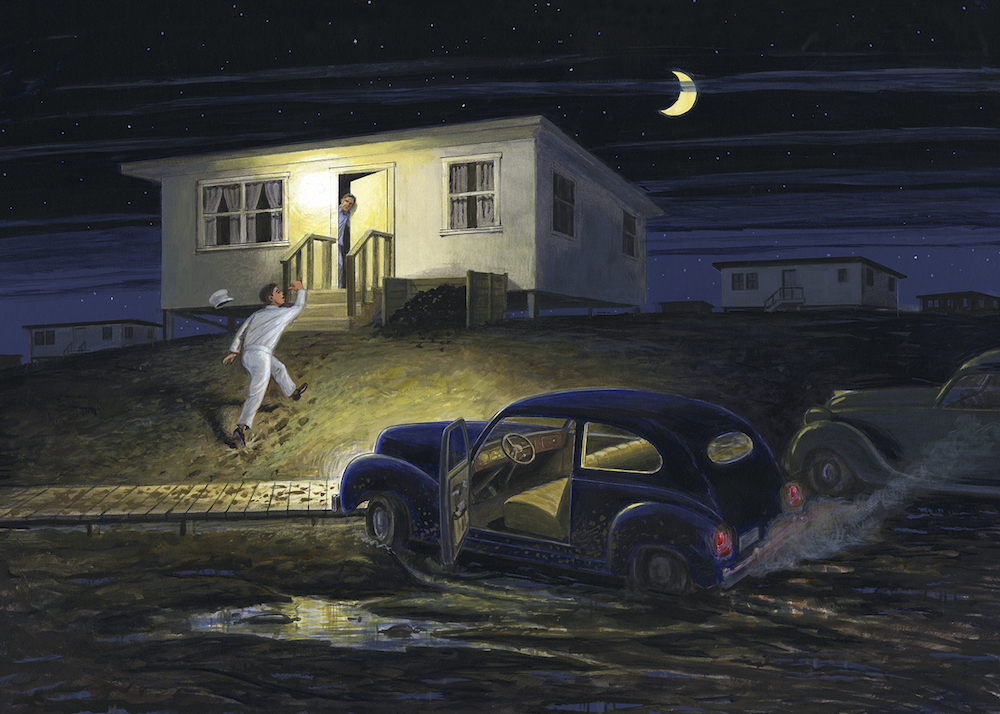
1944
Pressurized water reactor
Following experiments at the University of Chicago Metallurgical Laboratory and ORNL, some of which include the use of water lattices, Alvin Weinberg writes to research director Richard Doan on September 18 to suggest high-pressure water as both a coolant and a moderator for a power reactor. Many of the techniques devised during the experiments are applied broadly, and the pressurized water reactor concept becomes the standard for naval propulsion and for most commercial nuclear power plants.
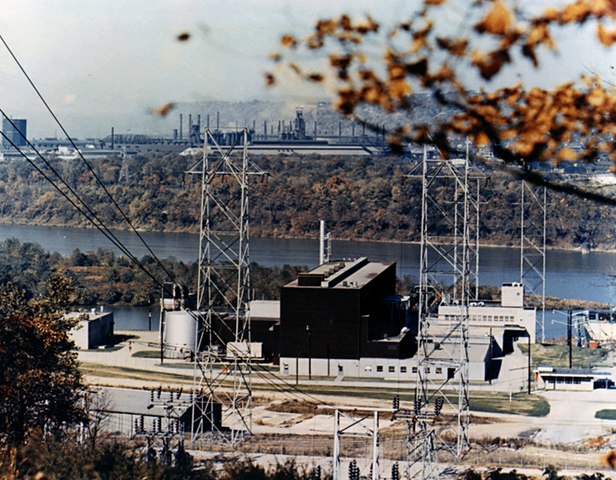
1944
First observation of Bragg reflections via neutron diffraction
Research at the Graphite Reactor led by Ernest Wollan results in observation of the first Bragg reflections of single crystals using neutron diffraction. Subsequent work by Wollan and Clifford Shull, who joins Wollan's group at ORNL in 1946, lays the foundation for widespread application of neutron diffraction as an important research tool.
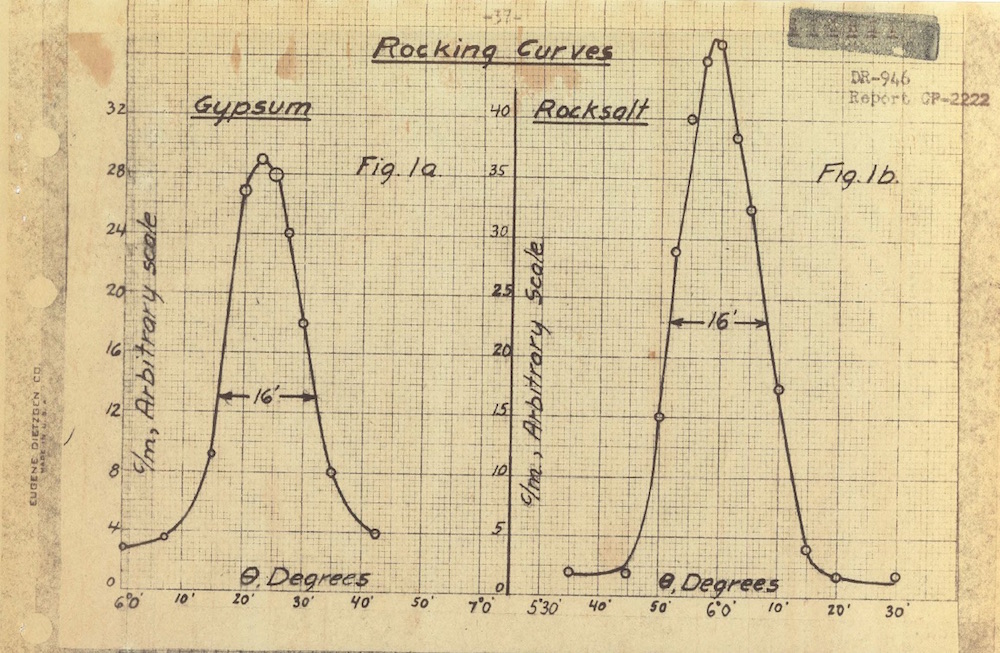
1945
Promethium discovery: Element 61
While working at the Graphite Reactor, Jacob Marinsky and Lawrence Glendenin produce the rare-earth element 61, promethium. They do so through uranium fission and by bombarding neodymium with neutrons from fissioning uranium in the reactor. Promethium-147 is later used in nuclear-powered batteries for instruments in guided missiles.
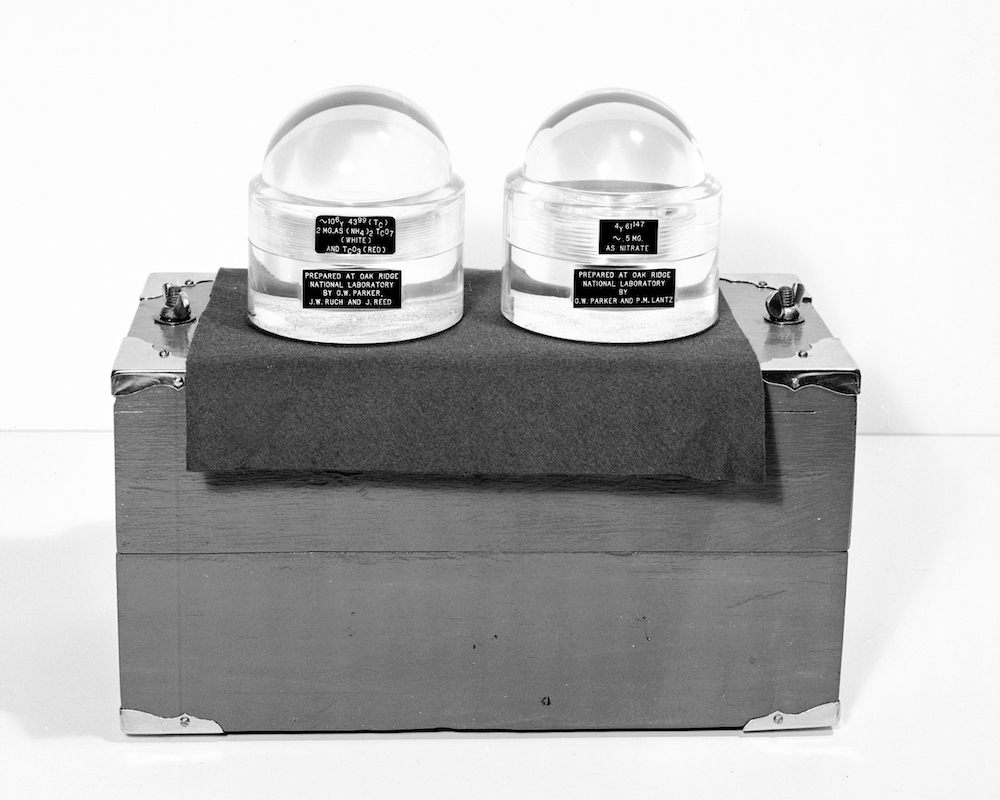
1945
World War II Ends
Oak Ridgers celebrate the end of World War II, which followed the detonation of the world’s first nuclear weapons over two Japanese cities: “Little Boy” at Hiroshima and “Fat Man” at Nagasaki. The X-10 facilities served as a pilot plant for the massive plutonium production complex built at Hanford, Washington, which supplied the plutonium used in the “Fat Man” bomb.
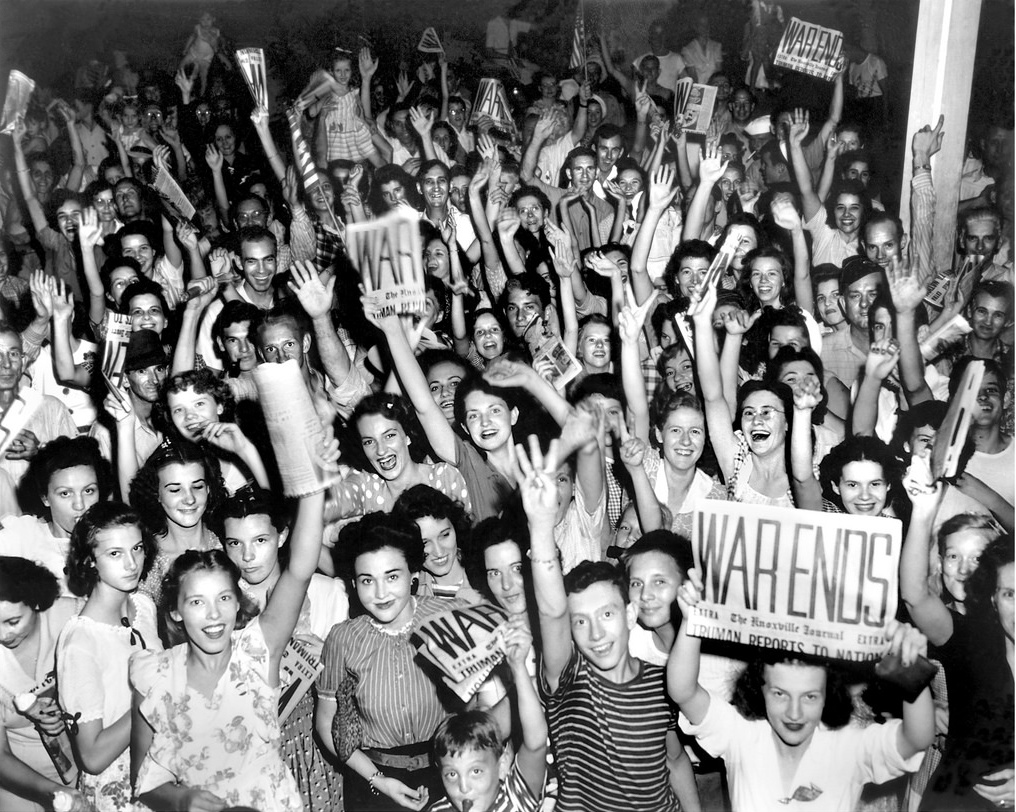
1945 -1961
Peacetime laboratory
With its mission complete, the Manhattan Project dissolves and the US government establishes the Atomic Energy Commission to develop and control nuclear energy for military and civilian applications. ORNL investigates peaceful ways to use wartime facilities like the Graphite Reactor, which is made available to university researchers. Teams of scientists begin work, seeking to use nuclear energy to pioneer medical therapies, study the nature of matter, and power homes. Construction of new research reactors to enable exploration of the potential of nuclear power for generating electricity soon leads to important discoveries in materials, chemical, and nuclear sciences.
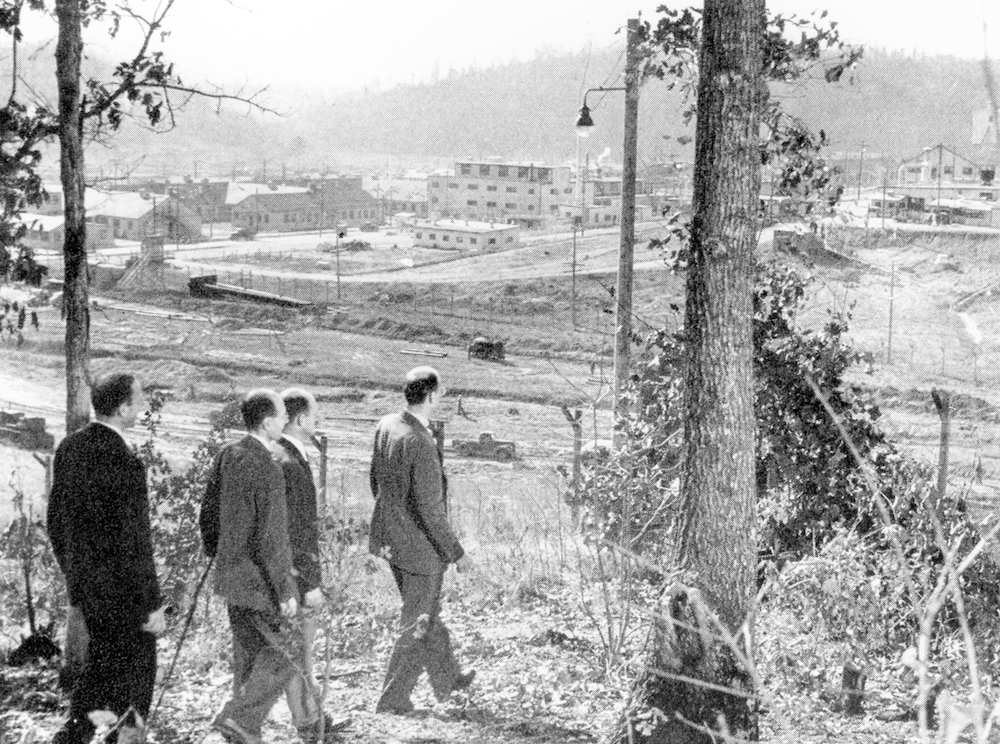
1946
Eugene Wigner
Chemical engineer and physicist Eugene Wigner serves as director for research and development at ORNL from 1946 to 1949, helping develop research reactors, establish nuclear science training, and coordinate scientific research with universities in the South. Also during his tenure at ORNL, Wigner leads design of the Materials Test Reactor that is built in Idaho and operational in 1952. His fuel element design is used in subsequent reactors throughout the world. Wigner is awarded half of the 1963 Nobel Prize in Physics for "his contributions to the theory of the atomic nucleus and the elementary particles, particularly through the discovery and application of fundamental symmetry principles."
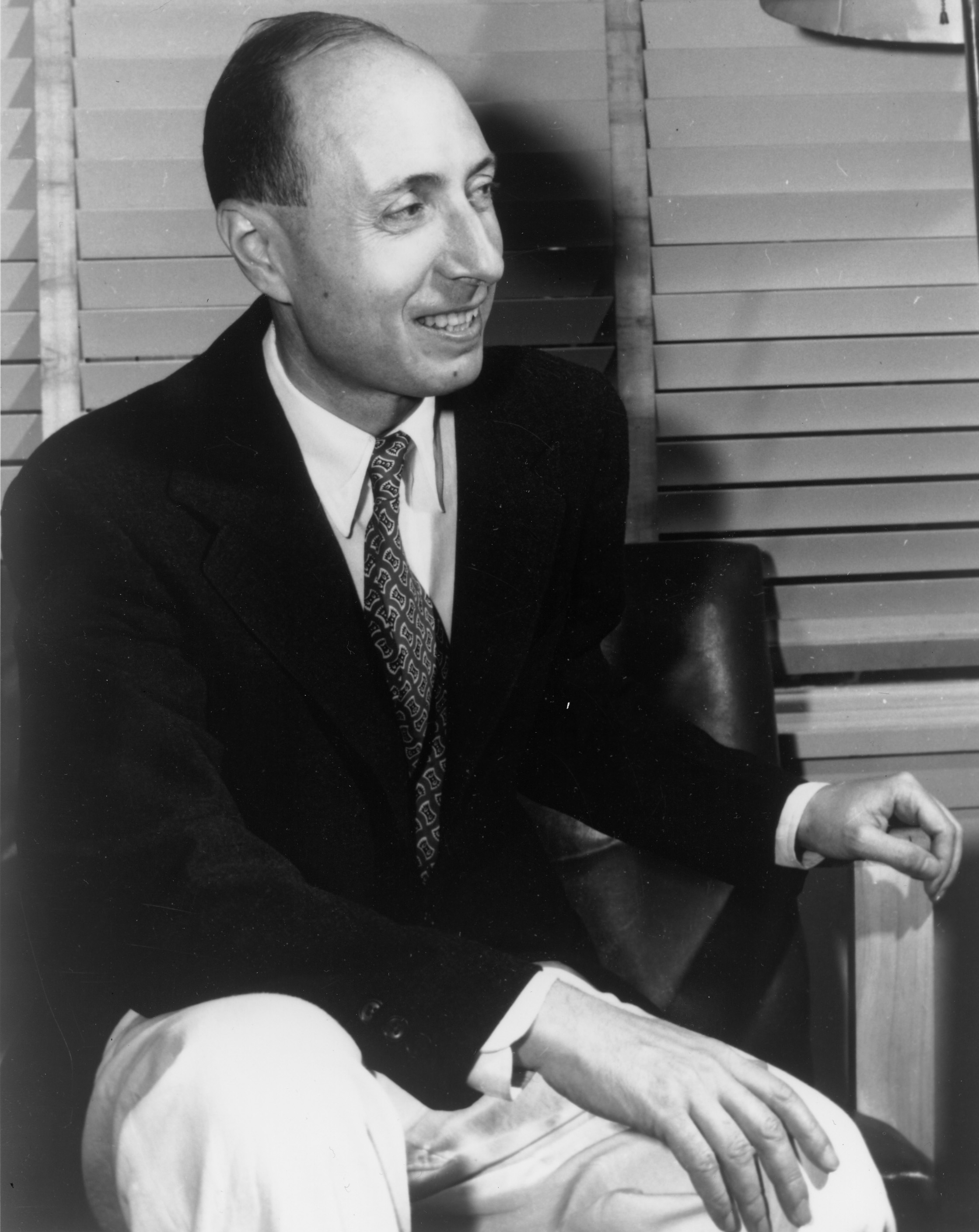
1946
Radiation protection and effects
ORNL elevates research efforts to protect people from exposure to unsafe levels of radiation, focusing on radiation tolerance, radiation protection services and training, and the development of new methods to measure radiation exposure. At the same time, concerns about health effects of radiation from reactors, atomic weapons testing, and radioactive elements that enter the body spur the development of a broad biological research program.
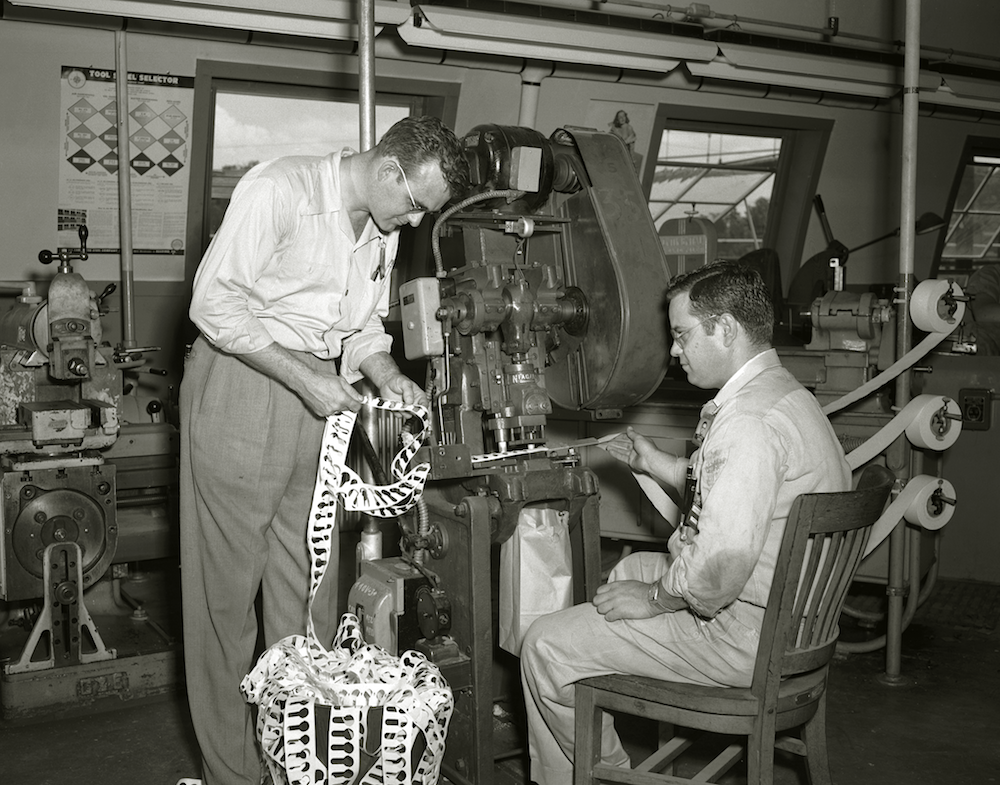
1946
First shipment of radioisotopes
The first official shipment of a radioisotope produced at a nuclear reactor, carbon-14, is produced at the Graphite Reactor and shipped to Barnard Free Skin and Cancer Hospital in St. Louis in August 1946. During the program’s first year, more than 1,000 shipments of 60 different radioisotopes are used for cancer treatment and as tracers for academic, industrial, and agricultural research. Thousands of radioisotope shipments from the Graphite Reactor will occur between 1946 and 1963.
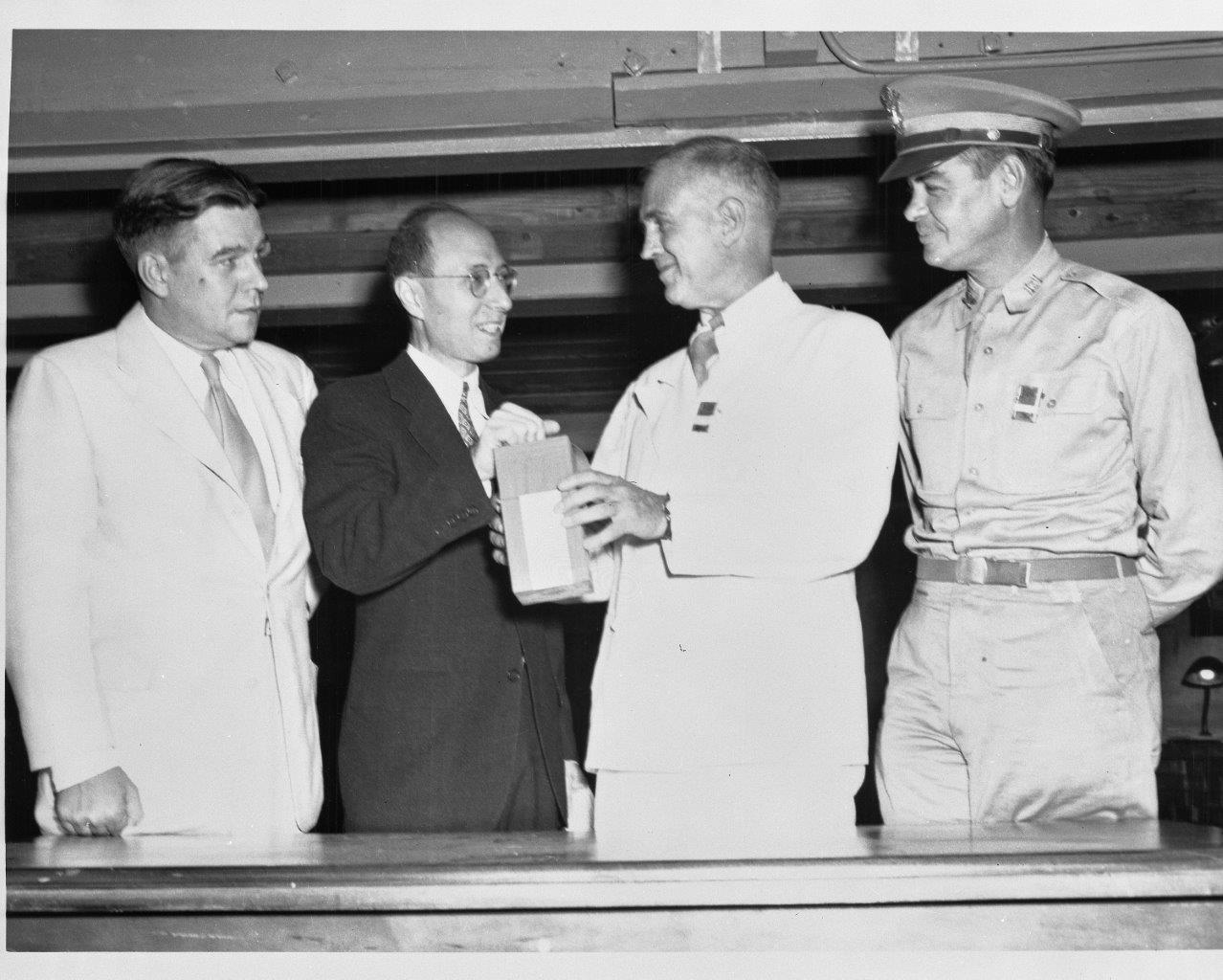
1946
Nuclear training for America's best and brightest
ORNL operates Clinton Training School from 1946 to 1947, providing nuclear science and technology training for the military, academia, and industry. US Navy Captain Hyman Rickover, a graduate of the program, will oversee the Navy's nuclear program beginning in 1950 and work with ORNL that year to reestablish the school as Oak Ridge School of Reactor Technology (ORSORT). Before closing in 1965, ORSORT turns out 100 students per year, many of whom become leaders in the nuclear industry.
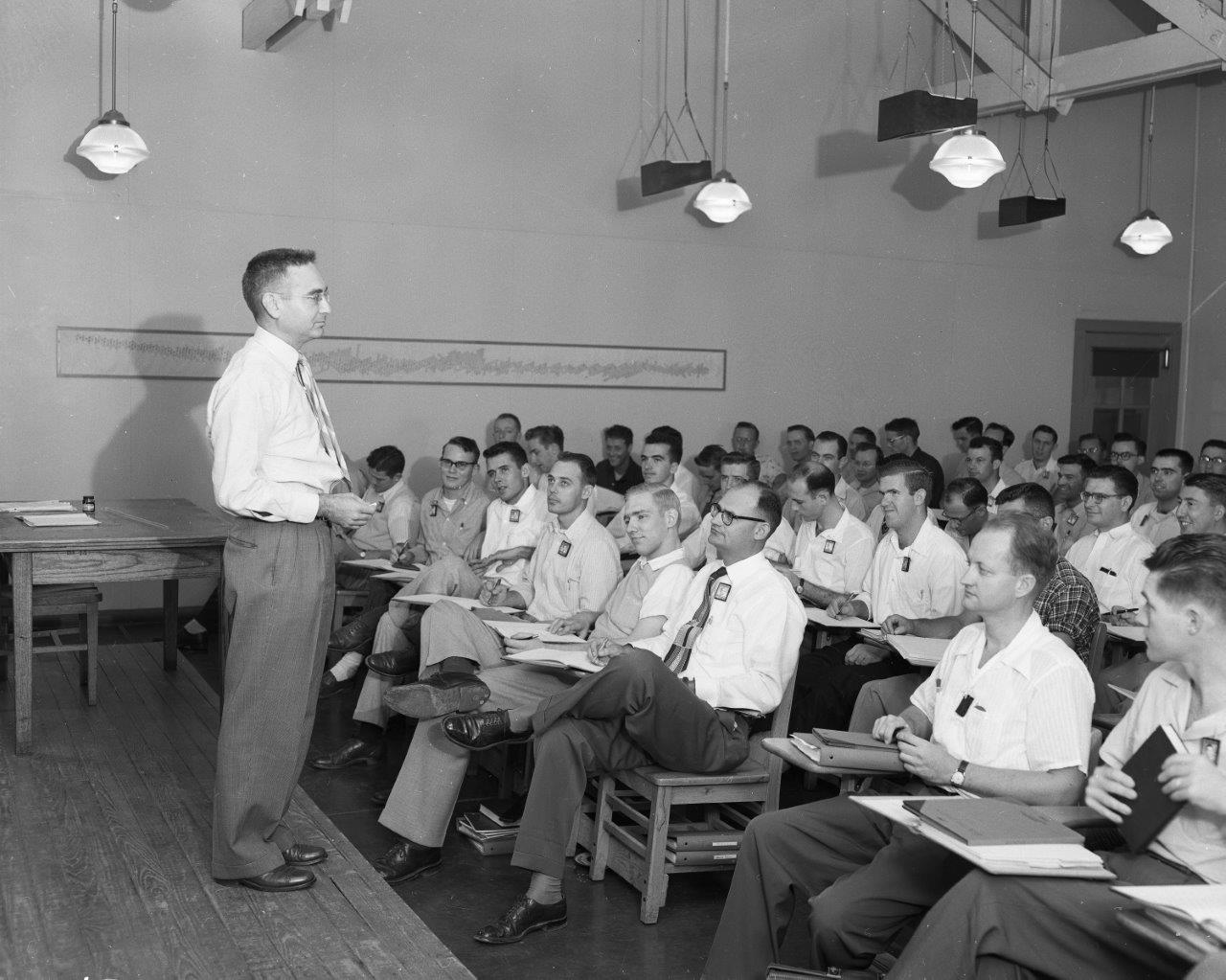
1946
Pioneering neutron science
Ernest Wollan and Clifford Shull begin a systematic investigation of neutron diffraction in 1946, and their exploration of the structure and characteristics of materials using neutron scattering becomes a foundation for conducting materials science. Among their achievements, they produce the first neutron diffraction pattern of a sodium chloride crystal and of polycrystalline manganese oxide, and they also make the first neutron radiograph.
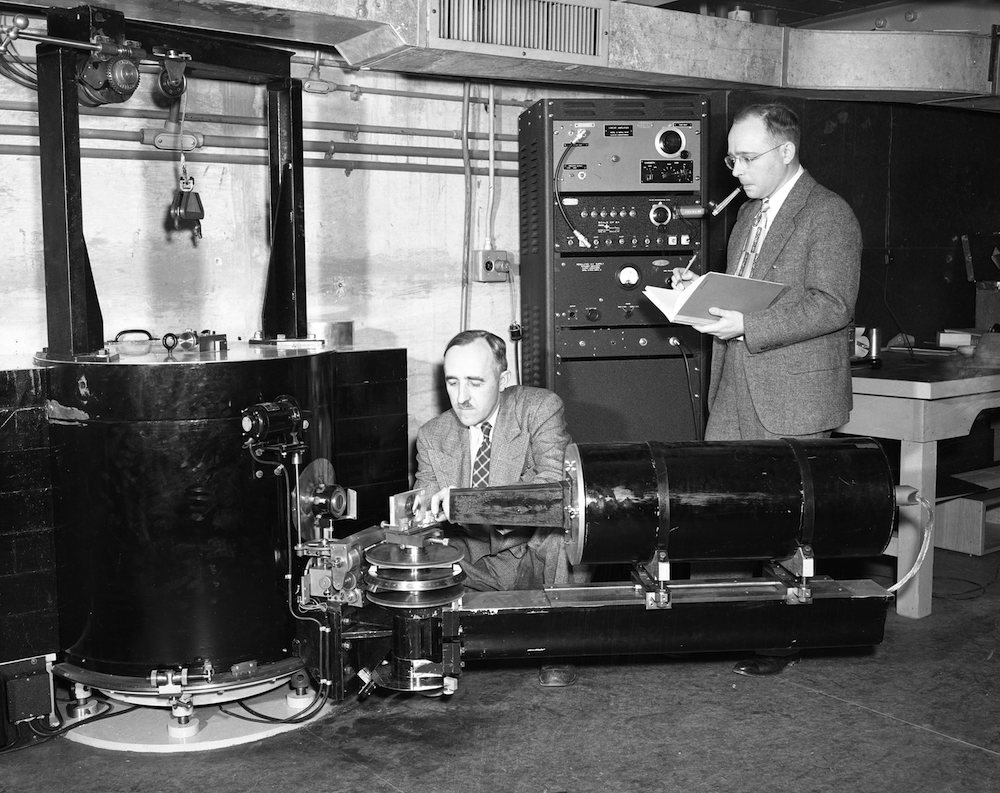
1946
Nuclear-powered aircraft
The US Army Air Force starts the Nuclear Energy for the Propulsion of Aircraft project. The Aircraft Nuclear Propulsion (ANP) program is a follow-on in 1951. ORNL supports both with responsibilities including the Aircraft Reactor Experiment as well as research into shielding, heat transfer, metallurgy and materials, and radiation damage. Before being canceled in 1961, ANP drives ORNL to design and construct multiple nuclear reactors, adopt high-speed digital computers, and acquire particle accelerators for nuclear physics.
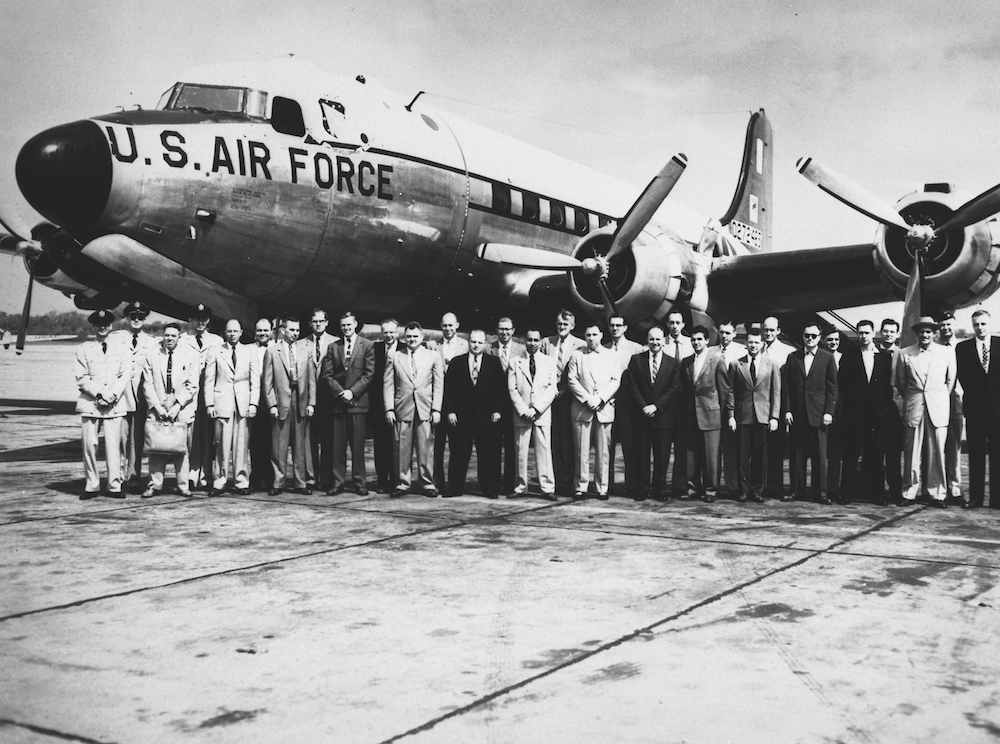
1947
Computing expertise takes shape
To support the lab’s nuclear-powered aircraft research, a Mathematics and Computing Science Section forms within the Physics Division with an early focus on radiation shielding research. ORNL also obtains its first computer, a matrix multiplier to solve linear equations. It’s known as SPEC–special purpose electronic computer.
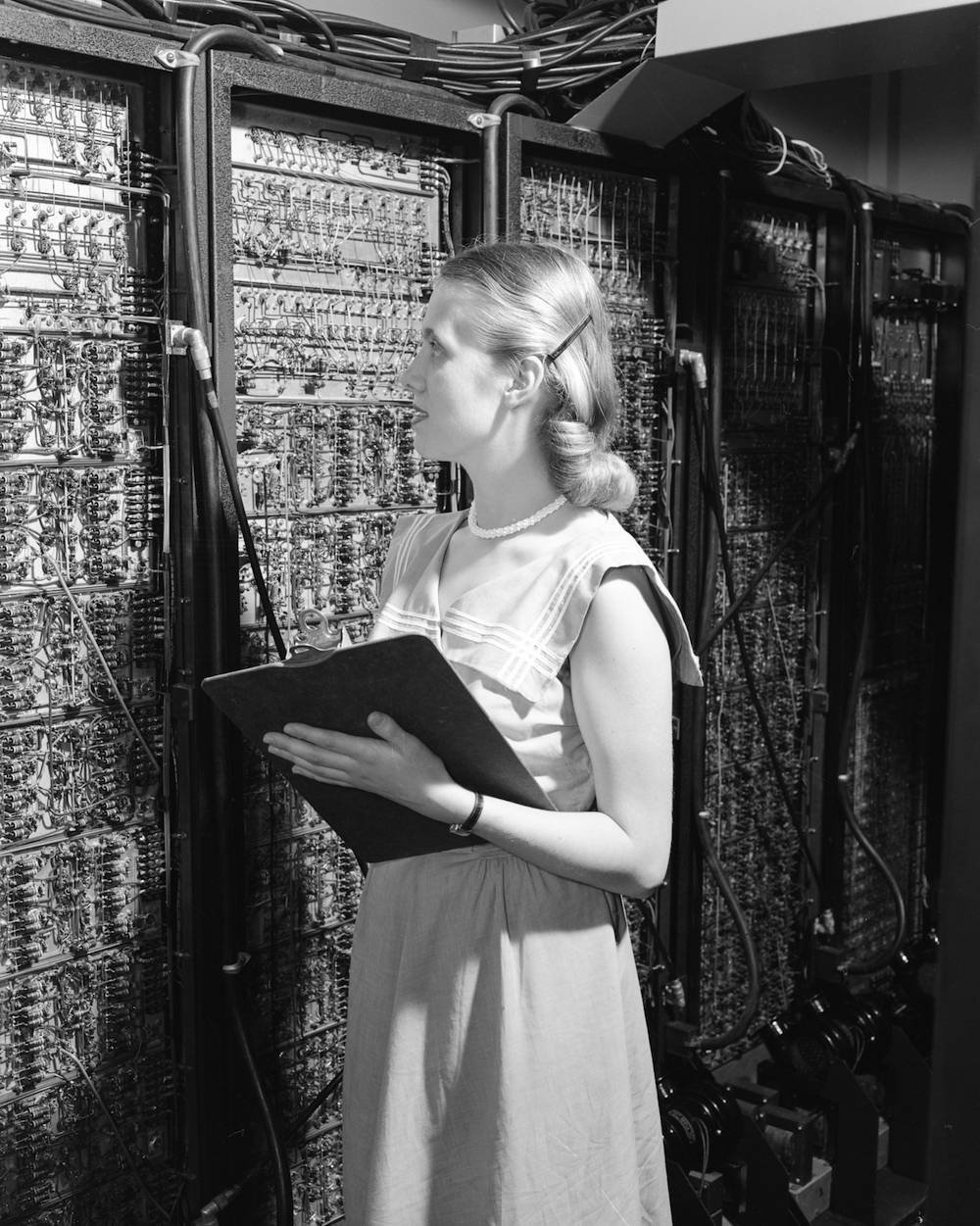
1948
First nuclear power as electricity
A Graphite Reactor experiment in August results in the first nuclear power produced in the world as electricity. A crew of operators and engineers inserts an aluminum can of uranium fuel slugs into a side hole of the reactor connected to a water supply. The resulting steam drives a small steam engine generator which, in turn, generates a small amount of energy required to light a flashlight bulb.

1949
Alvin Weinberg
Biophysicist Alvin Weinberg succeeds Eugene Wigner as director for research and development in 1949. He serves as laboratory director from 1955 to 1973, the longest tenure of any director. Championing ORNL’s post-war role in reactor development and the peaceful use of atomic energy, Weinberg also leads the lab through diversification into non-nuclear areas of research and development. A scientific adviser to presidents, Weinberg is also responsible for the national institution of centers to capture, organize, and disseminate scientific knowledge and information.
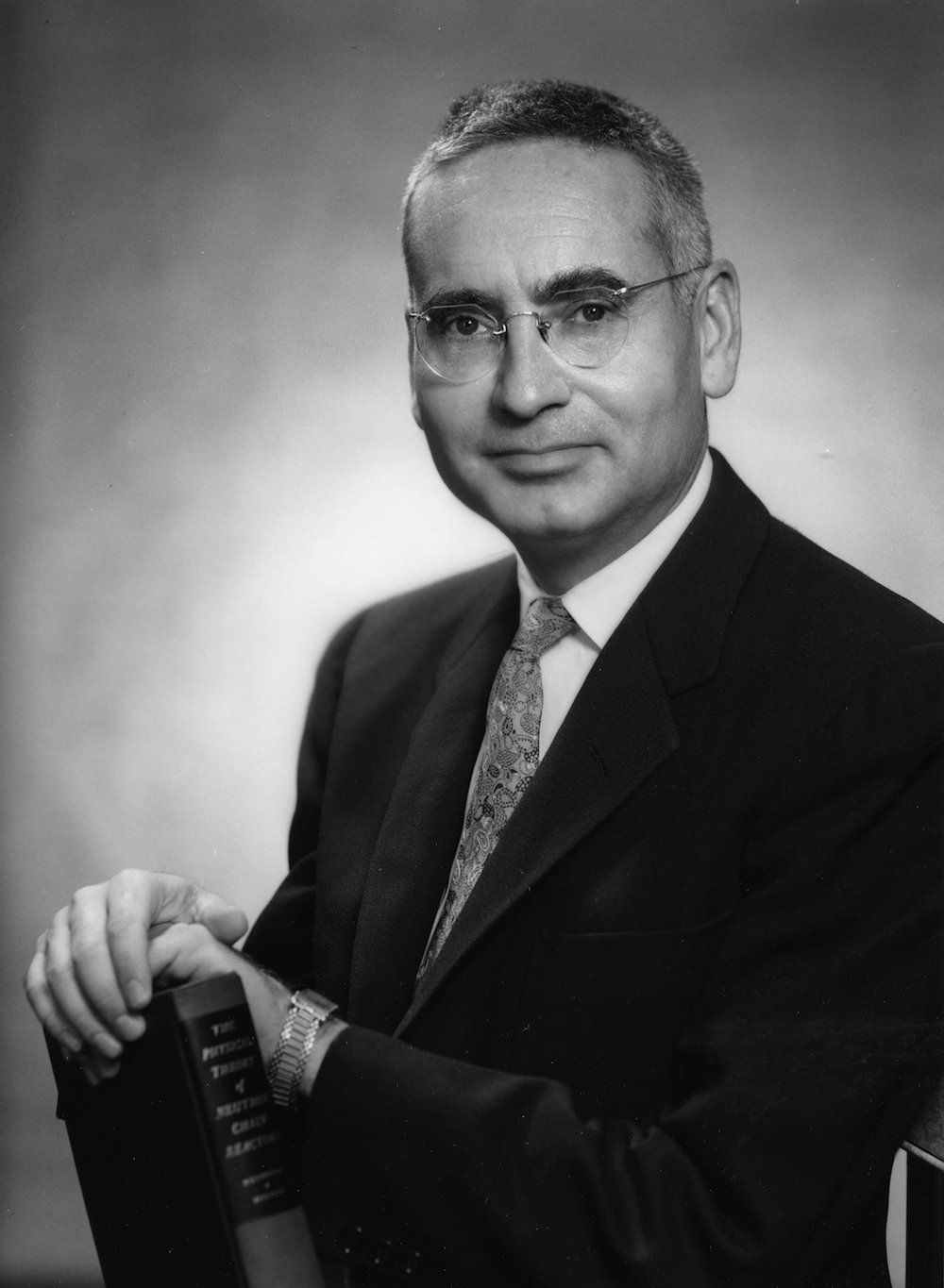
1949
Nuclear reprocessing technique with global impact
Plutonium and Uranium Extraction—or PUREX—process used to extract and refine nuclear material for use in nuclear reactors and weapons is developed. It becomes the basis for nuclear reprocessing techniques used worldwide.
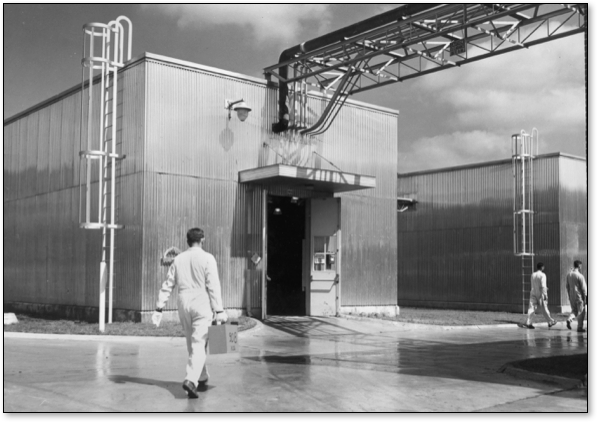
1949
First analytical separation of DNA and RNA
Researchers develop analytical separation of the components of nucleic acids (DNA and RNA) based on principles developed during the Manhattan Project. This technology is basic to the subsequent explosive growth of DNA and RNA biochemistry and molecular genetics
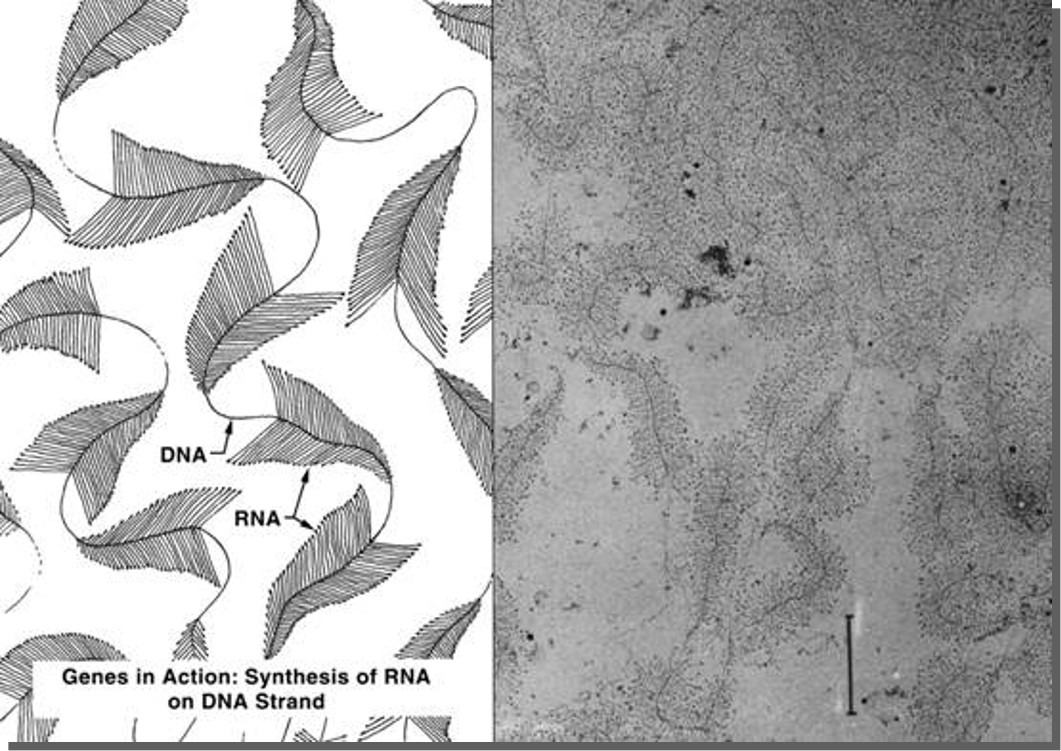
1950
Low-Intensity Test Reactor
The Low-Intensity Test Reactor (LITR) experiments establish the feasibility of water-cooled reactors and become one of the design prototypes for commercial nuclear power plants. At LITR, the blue Cerenkov glow of a nuclear reaction underwater is photographed for the first time in 1950. Cerenkov radiation is important to medical imaging, spent fuel rod evaluation, and other means of detection and tracking. LITR operates from 1950 to 1968.
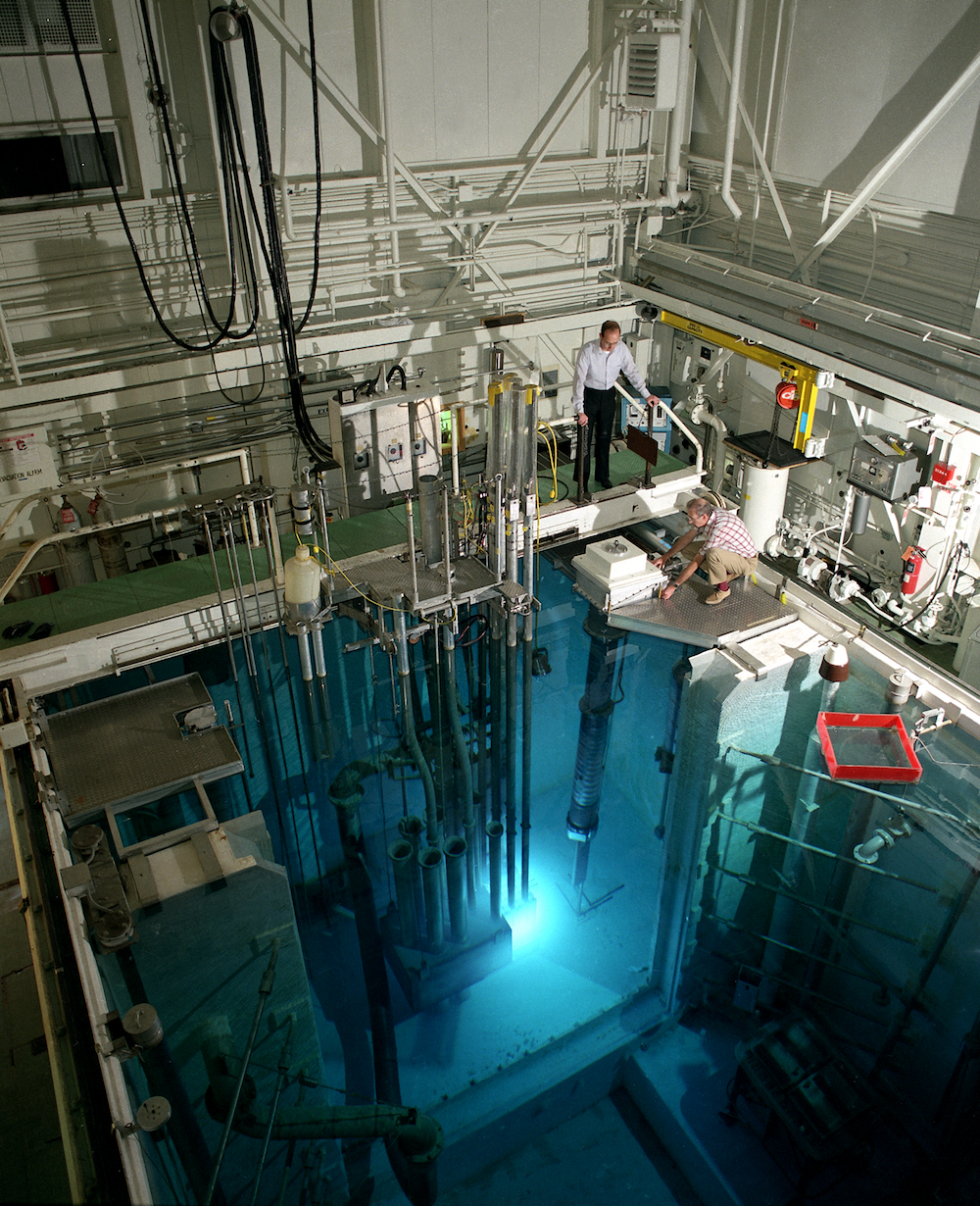
1950
Bulk Shielding Reactor
Pioneering research on naval nuclear reactors leads to the 1950 startup of the Bulk Shielding Reactor, a "swimming pool" reactor primarily used for radiation shielding and materials irradiation effects studies that operates at 2 megawatts until 1991. Because "swimming pool" reactors are less expensive and less complex to operate than other models, they become a favorite for small research facilities and universities, and dozens are built around the world.

1950
First proof of neutron decay
Arthur Snell and Frances Pleasonton measure the half-life of neutrons to provide the first experimental proof that a neutron decays into a proton, electron, and electron antineutrino.
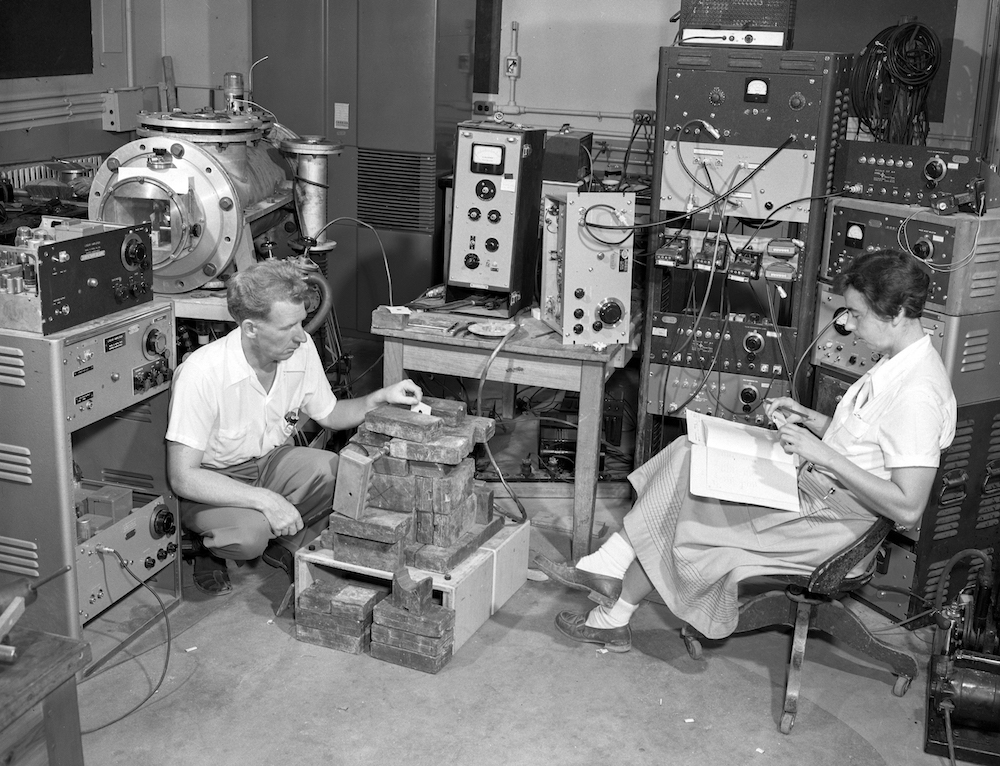
1951
Nickel-63 isotope
ORNL begins production of the nickel-63 isotope that is now used in airport detectors to prevent terrorism. Today, ORNL is the only known producer of this isotope.

1951
Magnetic structure of crystal discovery
Clifford Shull, Wilbur Strauser, and Ernest Wollan use neutrons to reveal the magnetic structure of manganese oxide, providing the first direct evidence of the antiferromagnetism predicted by Louis Néel. In an antiferromagnetic material, the spins of neighboring atoms in a crystalline lattice point in opposite directions. This property has been exploited to deliver advanced technologies for processing and storing information. The experiment is also instrumental in leading to the concept of broken symmetry that subsequently found widespread application in many areas of physics ranging from materials to cosmology.
1952
Doris Scott, nurse and presidential appointee
President Harry Truman selects ORNL nurse Doris Scott to serve on the Industrial Health Section of the President’s Commission for Health. The committee’s purpose is to inventory and study national health needs and related education.

1952
Universal prenatal guidelines
Based on results of studies with mice, Liane and Bill Russell—a husband-and-wife research team—inform the medical community that the prenatal stage at which radiation is introduced strongly influences the amount and type of damage to the human embryo and fetus. They make specific recommendations on avoiding risks to human pregnancies from diagnostic X-rays that are then adopted worldwide.
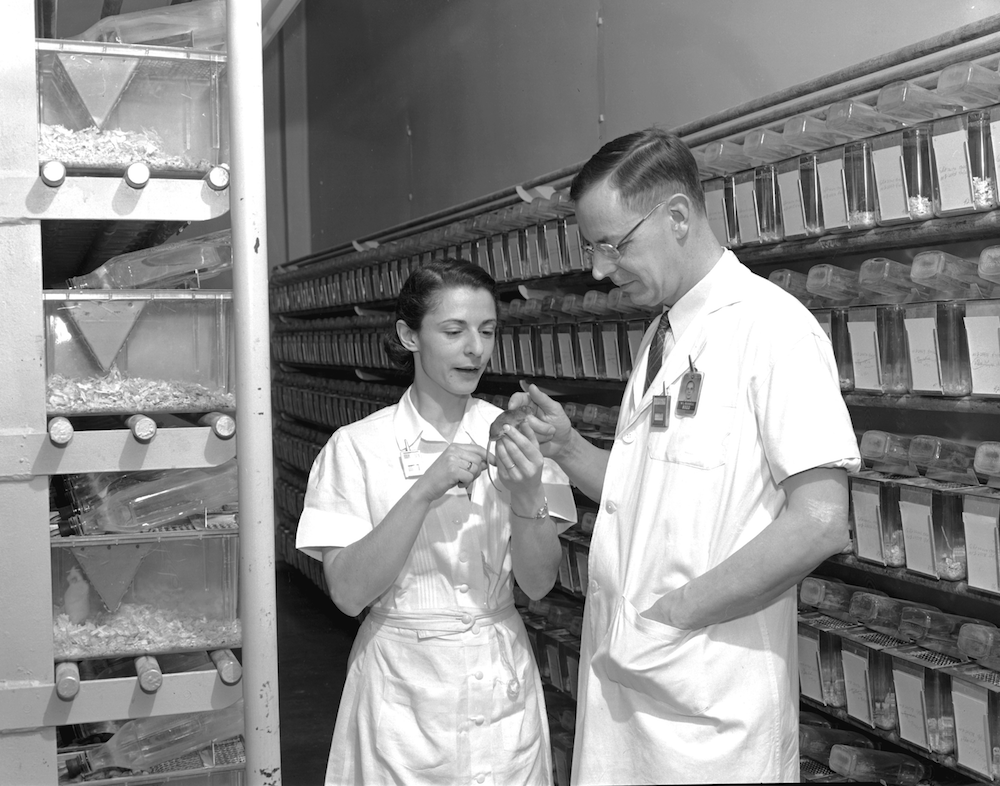
1952
First nuclear-generated electricity to the grid
The Homogeneous Reactor Experiment (HRE) goes critical on April 15. It is a small reactor that operates at a maximum 1.6 megawatts and drives a small steam turbine generator. HRE ceases operations in 1954 and is followed by the second-generation Homogeneous Reactor Test (HRT) that operates up to 5 megawatts from December 1957 until April 1961.

1954
First nuclear-powered submarine
US Navy Captain Hyman Rickover, a graduate of the Clinton Training School, approaches ORNL in 1947 to assist in development of the USS Nautilus, the Navy's first nuclear-powered submarine; it is built using Alvin Weinberg's pressurized-water reactor concept and launches on January 21, 1954. Pressurized-water reactors become the standard for naval propulsion. Rickover later becomes known as the "father” of the nuclear navy, serving as its director from 1950 to 1981.

1954
ORACLE, world's most powerful computer
The Oak Ridge Automatic Computer and Logical Engine (ORACLE) is the fastest and largest data storage computer on the planet at the time, with a peak rate of 14 kiloflops (1,000 floating-point operations per second). It has an original storage capacity of 1,024 words of 40 bits each and contains a magnetic-tape auxiliary memory.
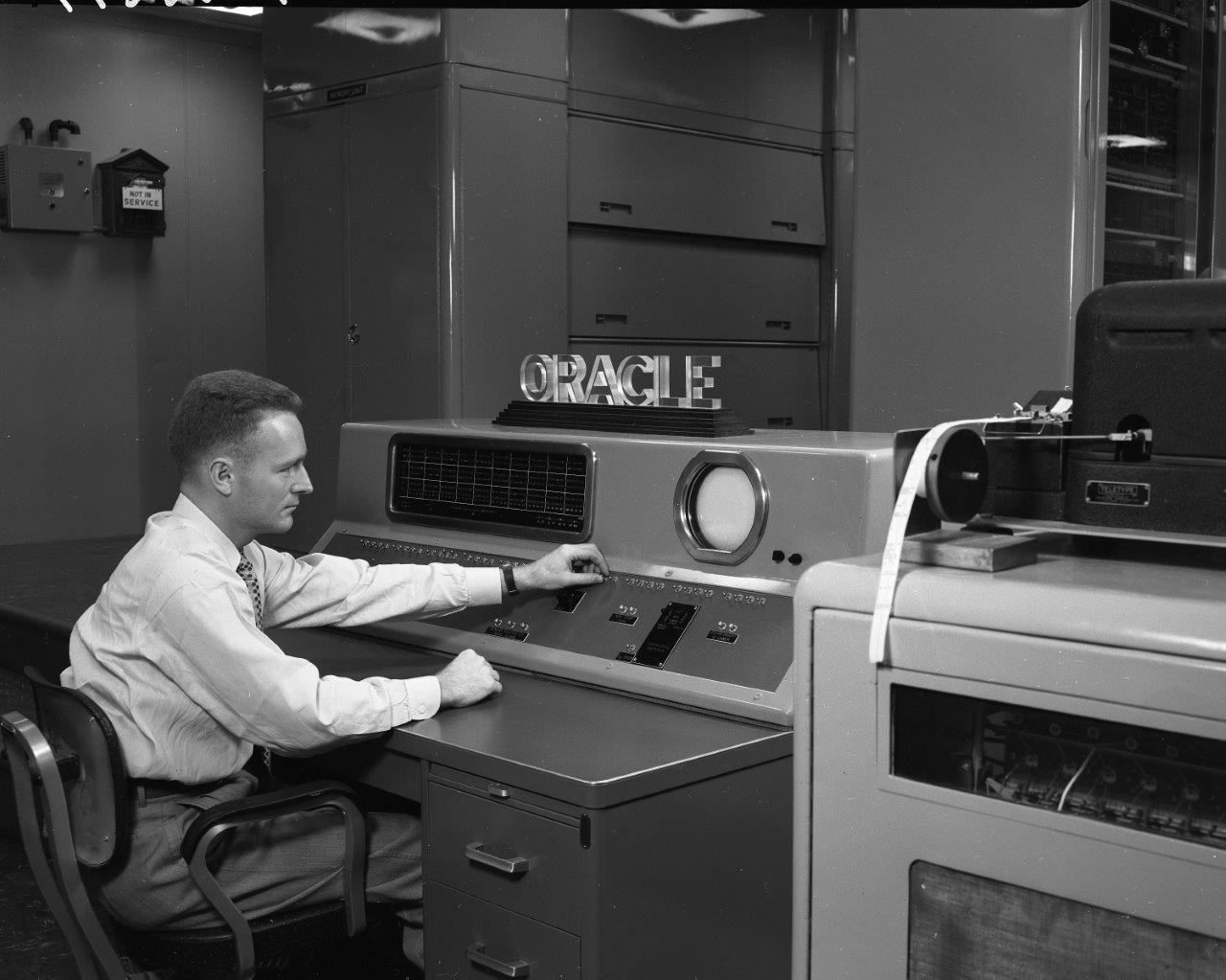
1954
Aircraft Reactor Experiment
The Aircraft Reactor Experiment (ARE), a molten salt reactor design with a beryllium oxide reflector, begins operation as part of the Aircraft Nuclear Propulsion program. Though it operates only during November 3–12, 1954, ARE leads to the development of several reactors, including the Molten Salt Reactor Experiment.
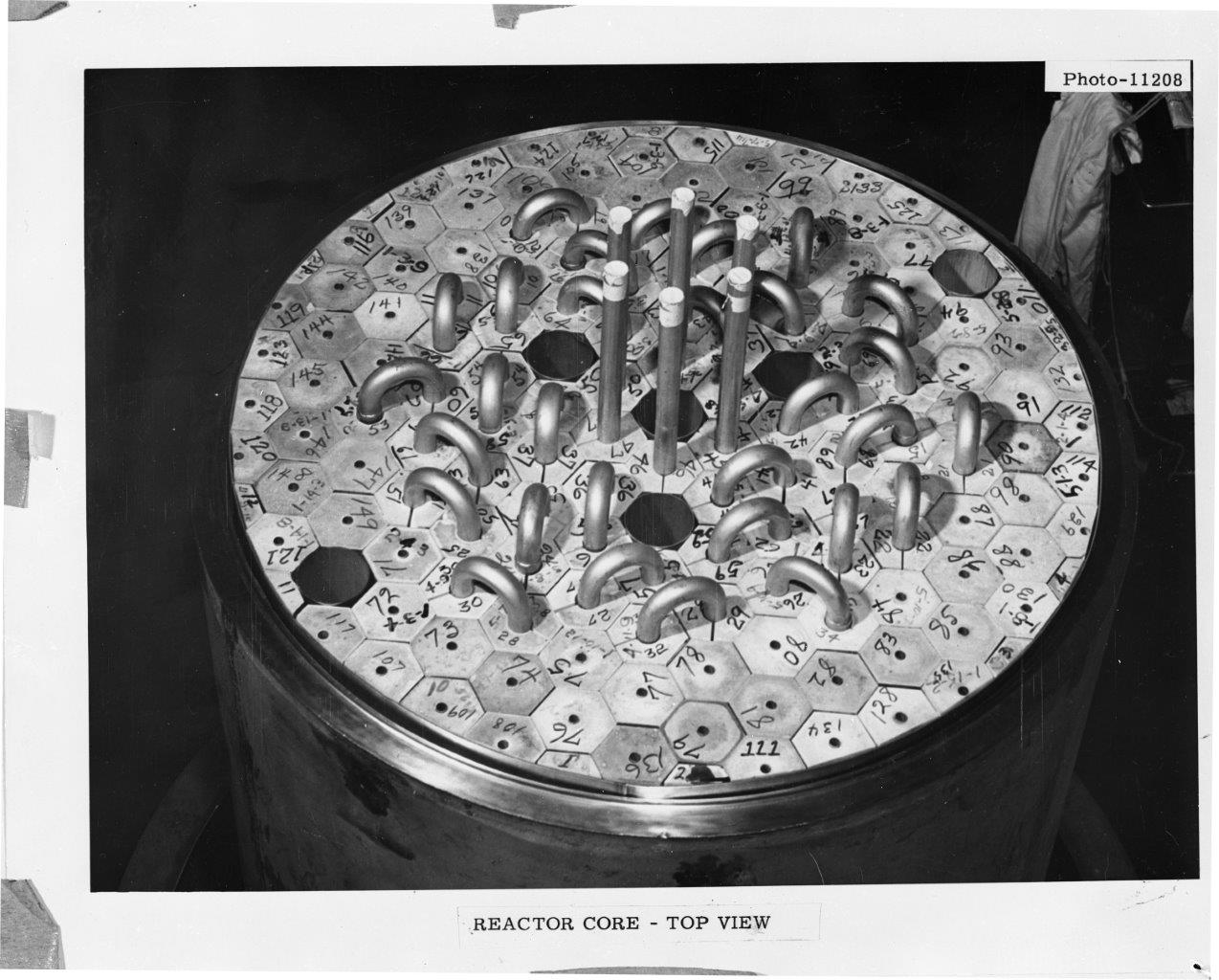
1954
Ecology studies
An ecology program is established to study the effects of radiation on forest insects and the biological uptake of fission products in the laboratory. In late 1955, the program is redirected to a field research effort oriented toward radioactive waste disposal and contamination problems in the context of ecological science. Ecology work expands into what is now recognized as environmental studies.
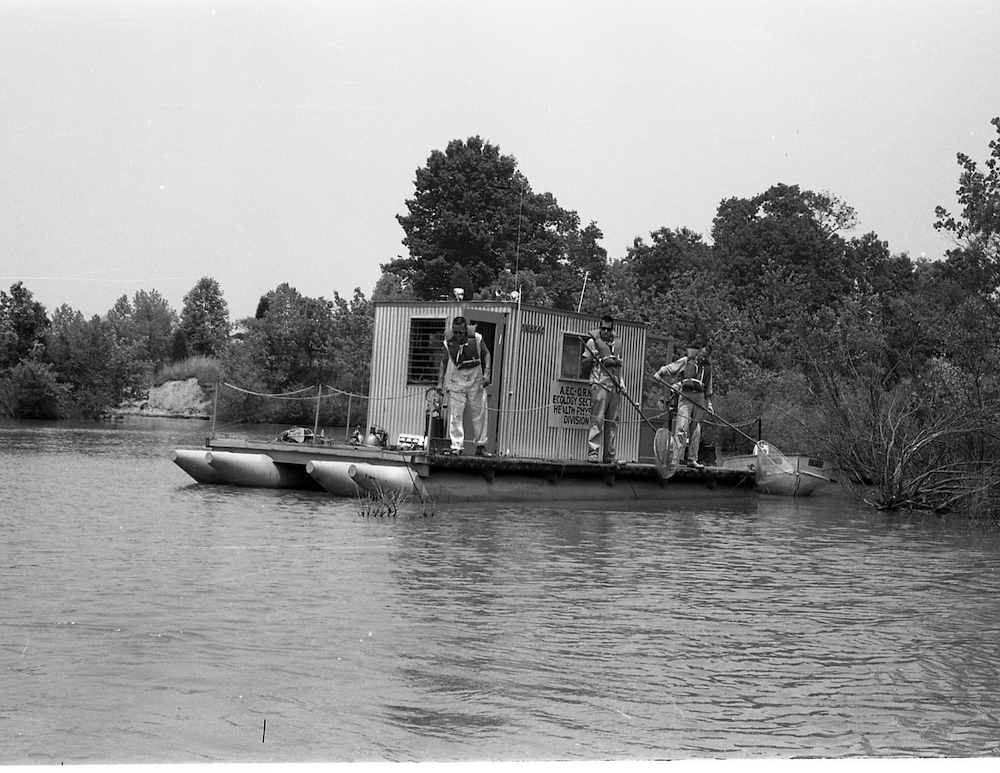
1954
Tower Shielding Reactors
Operational from 1954 to 1958, Tower Shielding Reactor (TSR) 1 is a reactor core in a vessel hoisted in the air and supported by four towers to study aircraft reactor shielding materials and configurations. Operational in 1958, the more compact TSR 2 also is contained in a vessel hoisted in the air. Although aircraft reactor work ceases in 1961, TSR 2 is useful to other studies and operates at up to 2 megawatts until 1992.
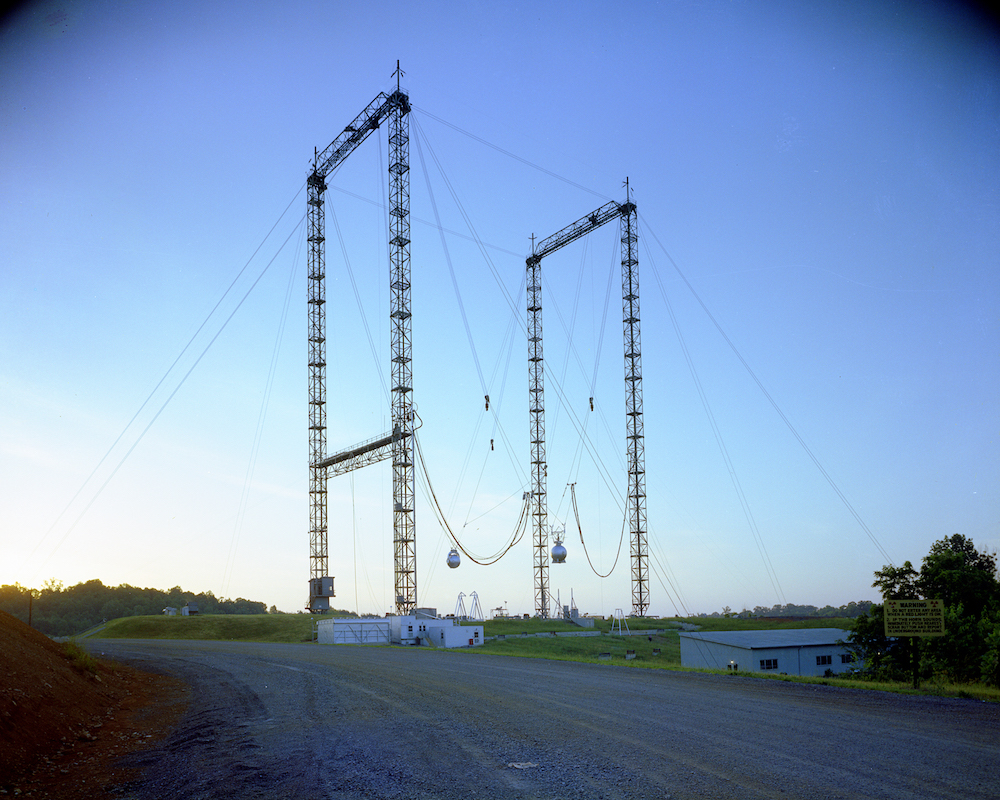
1955
Geneva Reactor
ORNL constructs the Geneva Reactor for the first International Conference on the Peaceful Uses of Atomic Energy. It becomes the prototype for future "swimming pool" reactors fueled with low-enriched uranium. President Eisenhower inspects it during the conference, and US television networks air highlights. After the conference, the reactor is sold to the Swiss government, moved to Würenlingen, and named SAPHIR for its blue glow. It operates until 1994.

1955
Eleanor Roosevelt
Former First Lady Eleanor Roosevelt visits ORNL and other locations in 1955 as a guest of the Oak Ridge Chapter of the American Association of University Women.
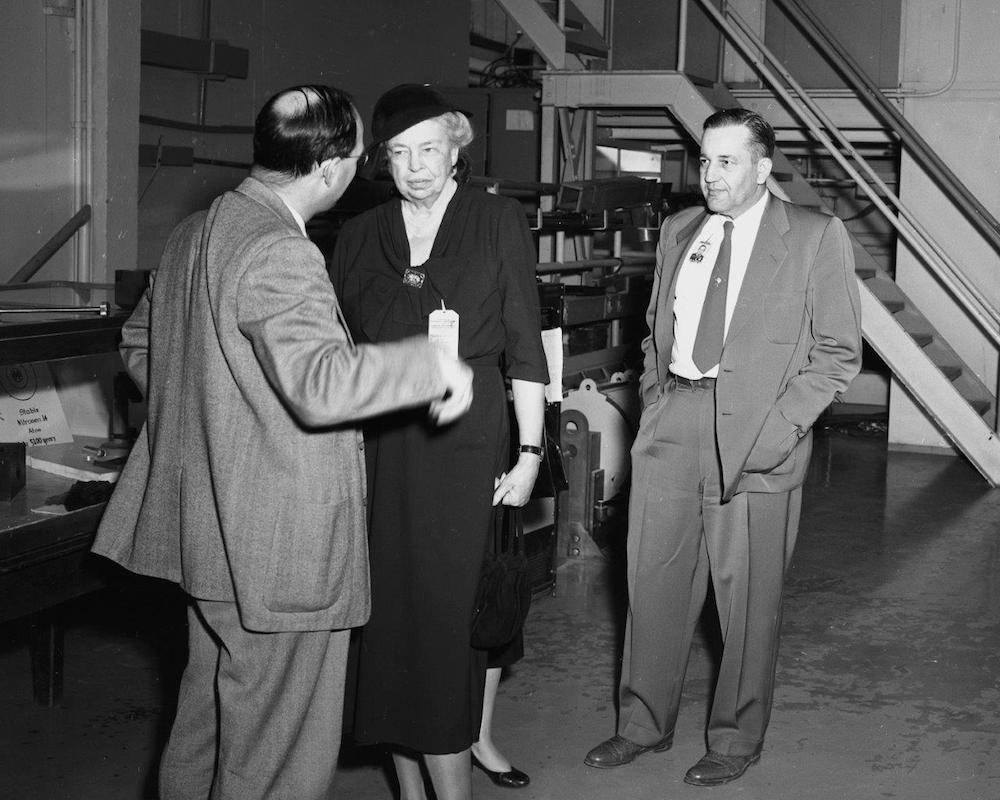
1956
Messenger RNA discovery
Elliot Volkin and Larry Astrachan discover messenger RNA, which "reads" DNA's genetic code and becomes a template for mass-producing proteins.
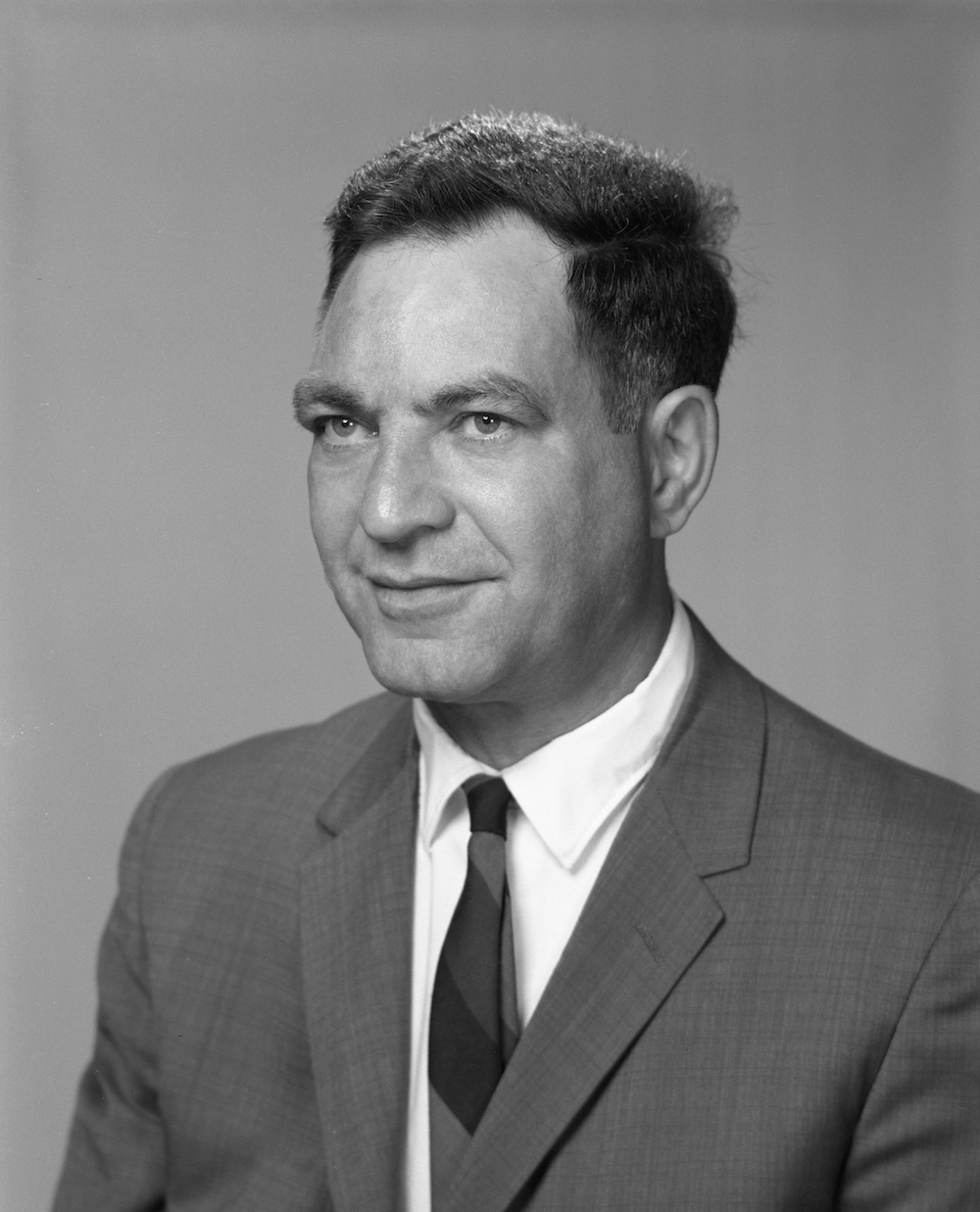
1956
Genetic effects of radiation
A National Academy of Sciences Committee uses ORNL-generated mouse data to formulate projections for the genetic effects of radiation in humans. National and international organizations rely on ORNL data for recommendations of human radiation exposure limits.
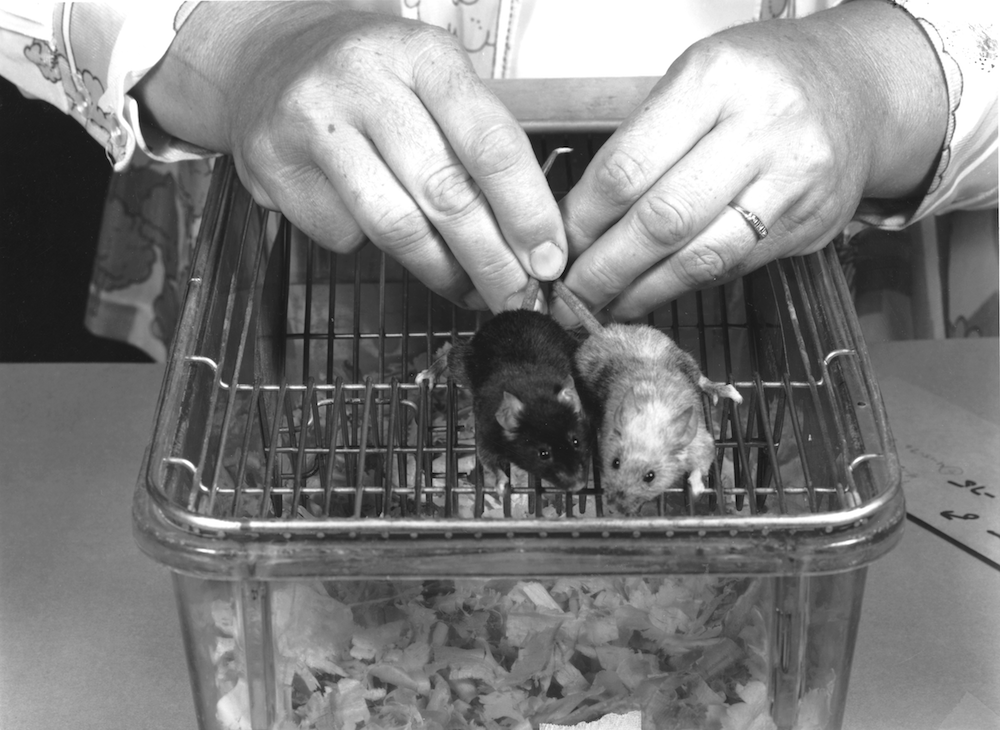
1957
Surface plasmon discovery
Rufus Ritchie discovers the surface plasmon, a collective mode of coherent electron oscillations that exist at the interface of two materials. Surface plasmons become a significant part of condensed matter physics and are used for surface plasmon resonance to measure nanometer changes in material properties. Ritchie is nominated for the Nobel Prize in Physics for his theoretical work on surface plasmonics.
1957
Army Package Power Reactor
An ORNL-developed conceptual design for a compact pressurized-water Army Package Power Reactor that can be transported to remote locations where other fuel is not readily available is constructed at Fort Belvoir in Virginia and goes critical in April 1957. The Army goes on to build eight other compact reactors of various designs.
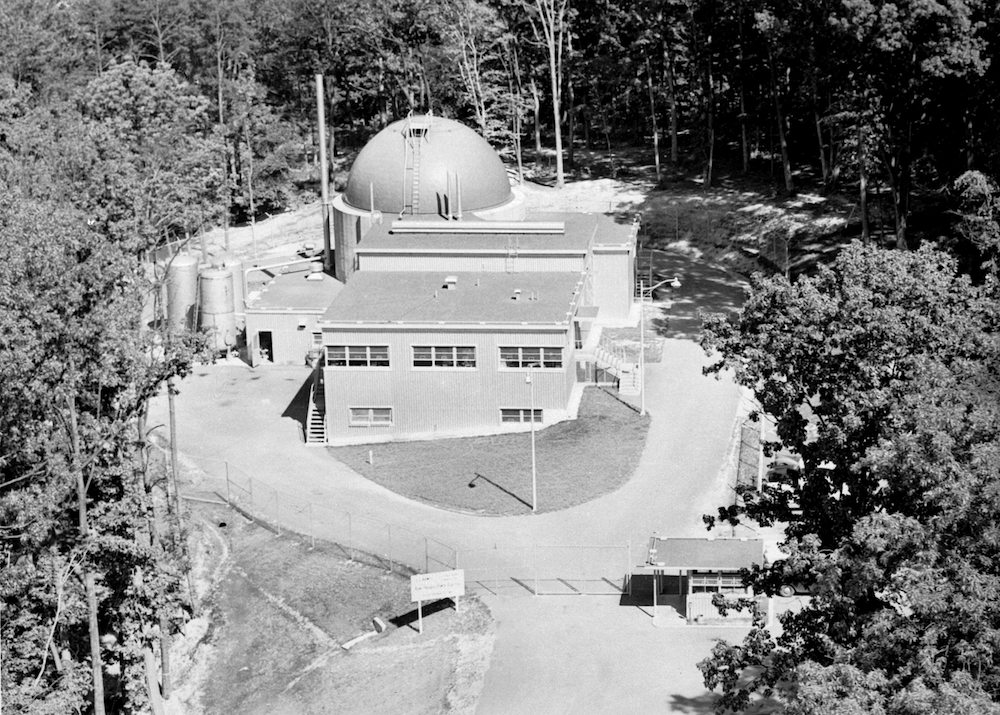
1958
Experiments in fusion
ORNL displays two full-scale working models of its Direct Current Experiment, a magnetic mirror fusion device, at the 1958 United Nations Conference on Peaceful Uses of Atomic Energy. Afterward, multiple nations draw on the laboratory's experience and build similar machines that are fundamental tools for fusion research.
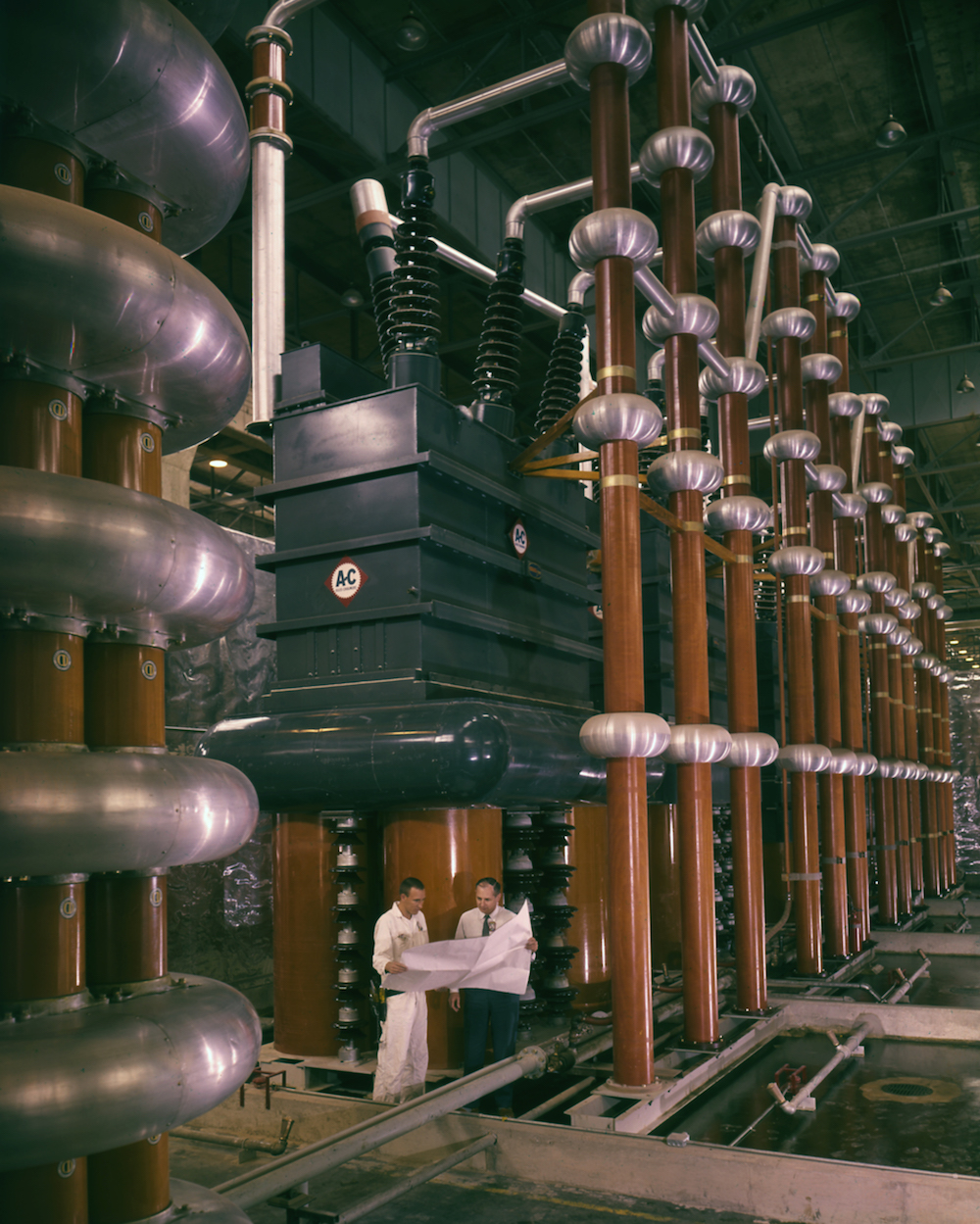
1959
Y chromosome discovery
Liane Russell and colleagues discover that maleness in a mouse depends on the presence of the Y chromosome and is unrelated to the number of X chromosomes. She reveals the next year that only one of the two X chromosomes of a mammalian female is active.
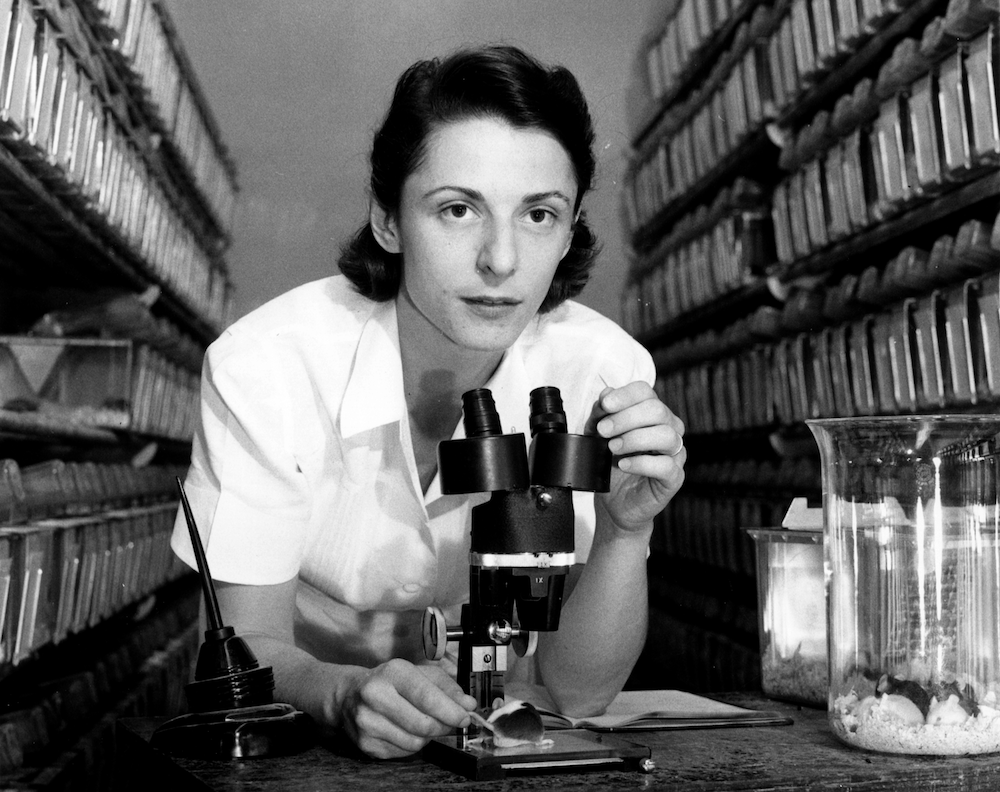
1959
John F. Kennedy and Jackie Kennedy
In February 1959, Senator John F. Kennedy and his wife Jackie visit the Oak Ridge Research Reactor, the major world supplier of radioisotopes. Operational from 1958 to 1987, its other research uses include neutron scattering, investigating metals and ceramics behaviors under radiation, and testing materials for reactor fuel elements and fusion devices.
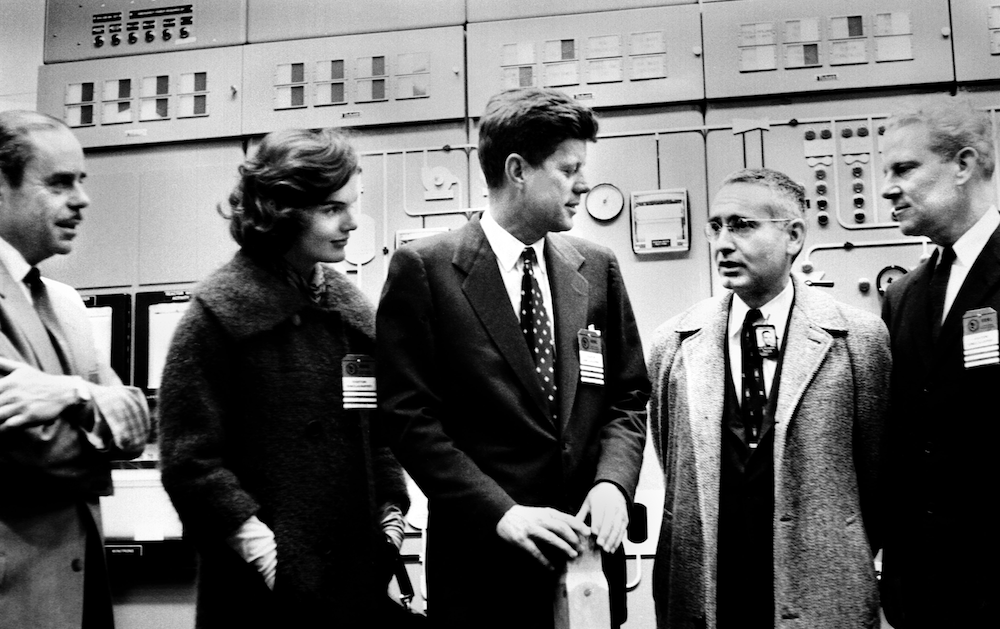
1959
Nuclear-powered N.S. Savannah
ORNL participates in the power plant design for the N.S. Savannah. Launched on July 21, 1959, the 21,000-ton ship, propelled by a pressurized-water reactor, demonstrates the feasibility of commercial ships propelled by nuclear energy.
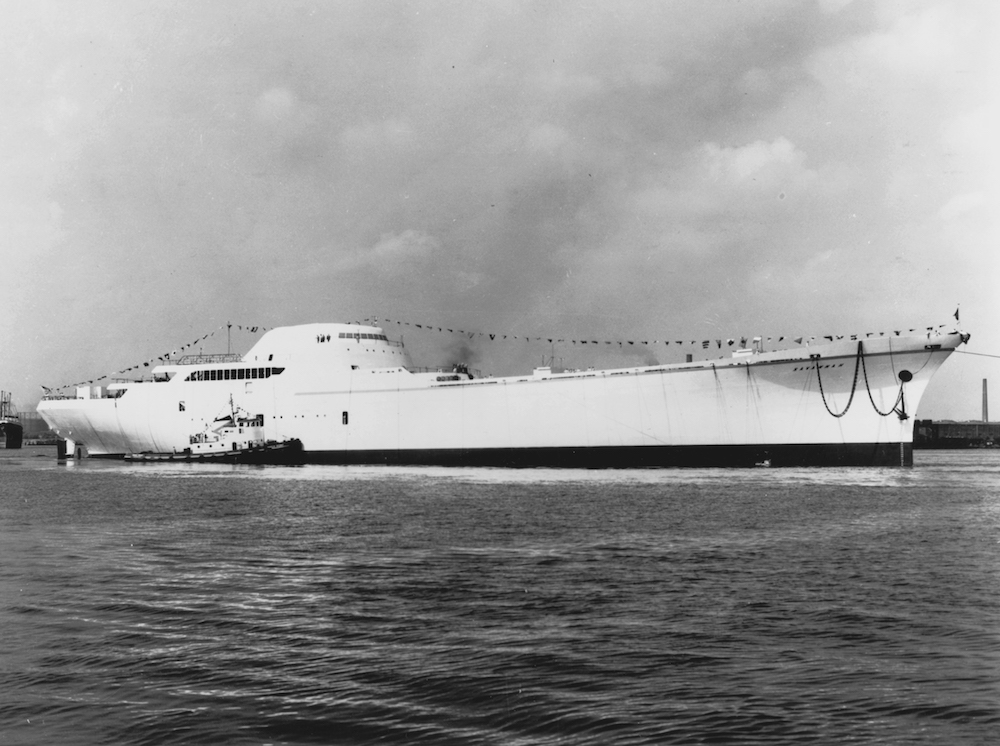
1960
INOR-8 alloy
INOR-8, a nickel-molybdenum-chromium-iron alloy that resists aging and corrosion caused by exposure to hot fluoride salts, is developed to contain fuel used in the Molten Salt Reactor Experiment and all its components, including the air blast heat exchangers pictured at left. Patented in 1960, INOR-8 becomes the first ORNL-developed alloy to be commercialized and has been available as Hastelloy N since 1965.
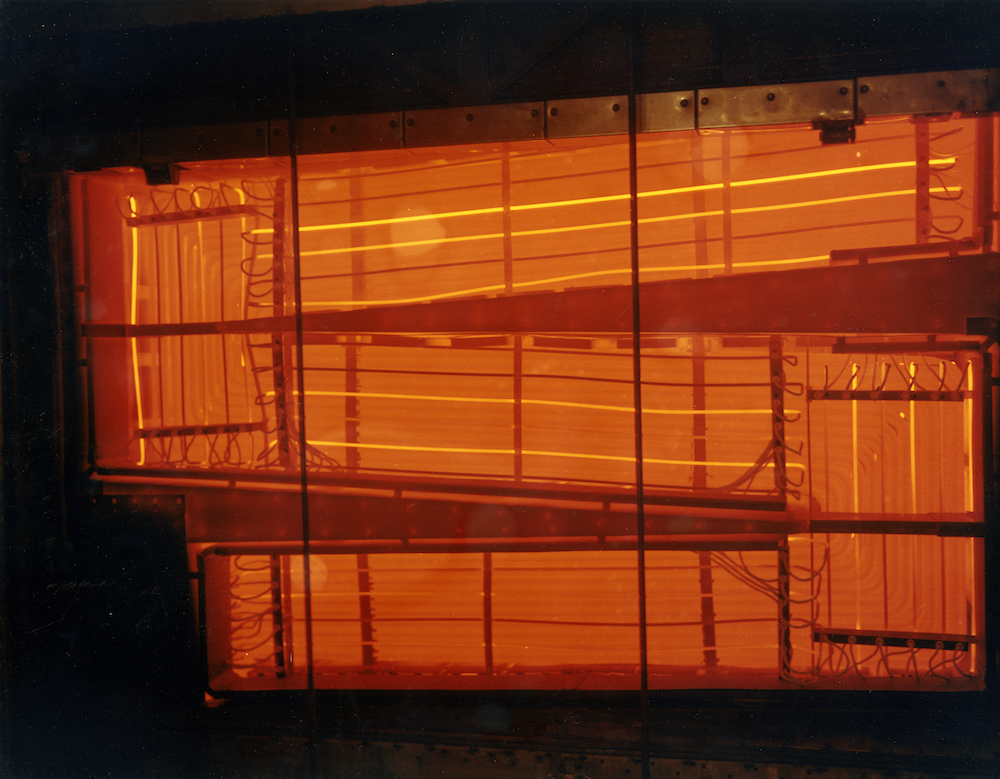
1960
Pocket screamer
P.R. Bell and Casimir Borkowski develop the pocket screamer that is supplied as needed to laboratory personnel working with reactors and hot cells. A compact personal radiation monitor, the pocket screamer is worn and it chirps and flashes at a speed proportional to gamma dosage rate.
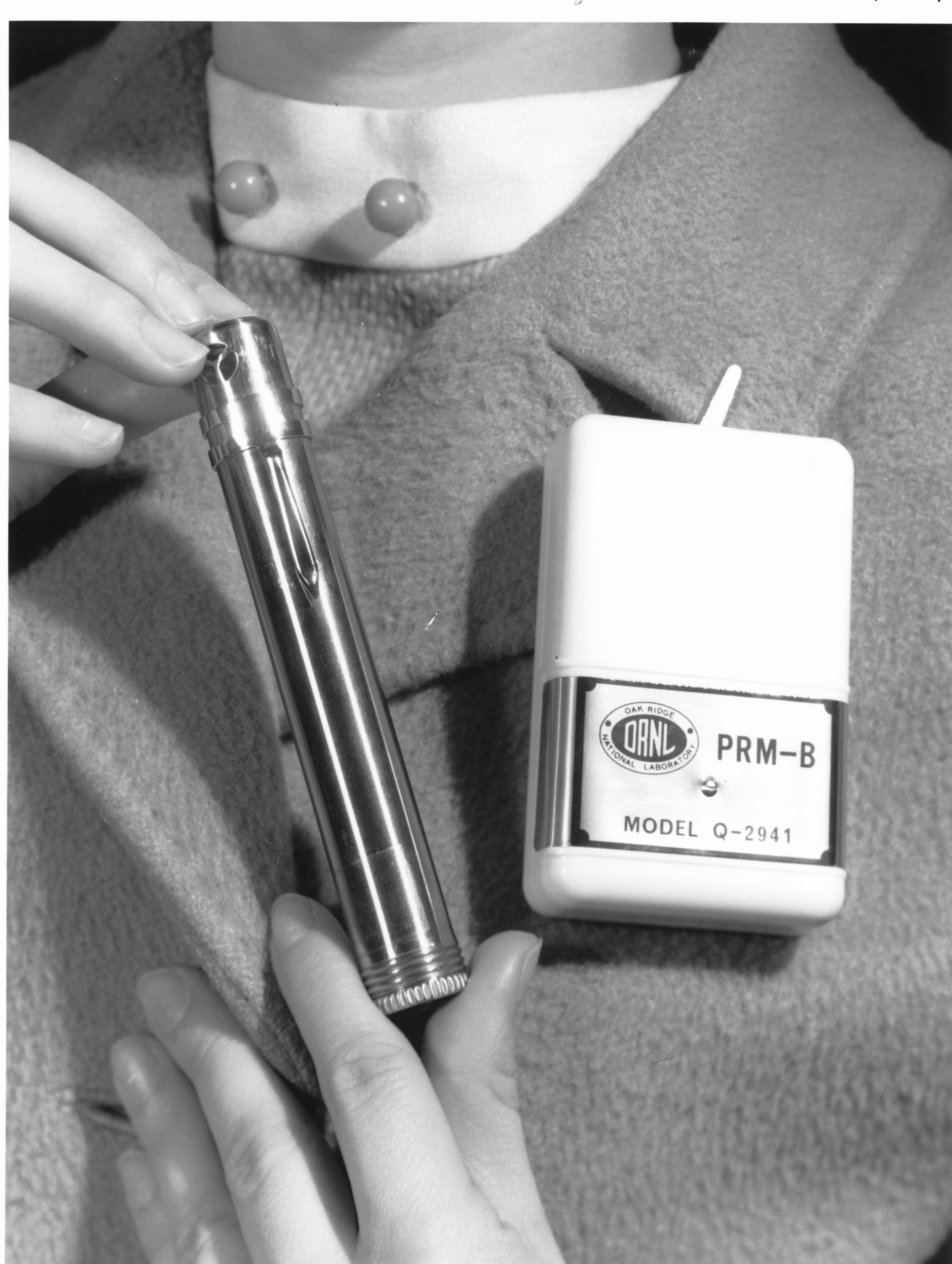
1961–1979
Solving New Problems
As the nuclear industry becomes more industrialized, ORNL enters a time of change and begins to diversify its research portfolio beyond nuclear science. Researchers find new ways to apply the physical sciences stemming from reactor development and nuclear research to solving the challenges of rising energy demand and conservation. Research in the ecological and biological sciences grows. Environmental movements, an oil crisis, formation of the Department of Energy, and new policies drive ORNL to study non-nuclear energy sources and innovative ways to reduce energy consumption and improve efficiencies.
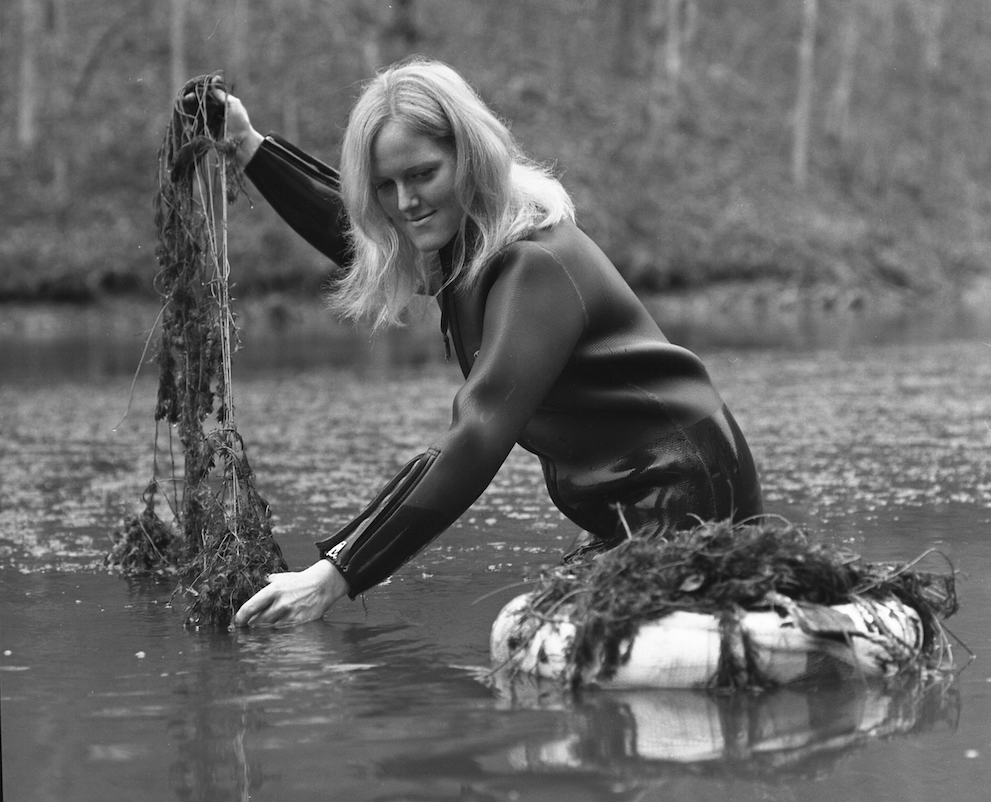
1961
Technique for improved silicon
ORNL scientists at the Bulk Shielding Reactor devise a neutron transmutation doping (NTD) method in 1961 for uniformly distributing phosphorus ions in silicon. This method will result in the annual worldwide production of more than 100 tons of NTD silicon for use in electronic components.
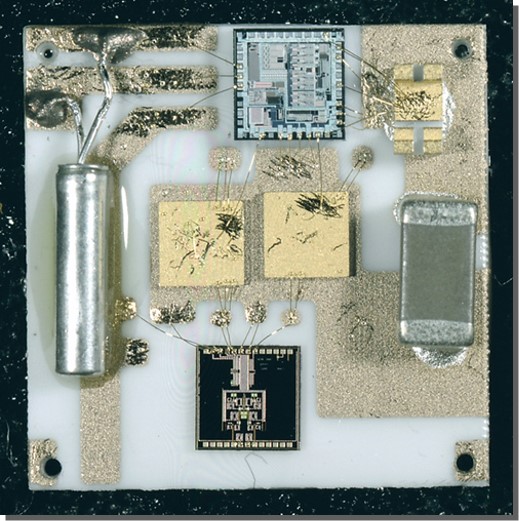
1961
Centrifuges for safer vaccines
A team led by Norman Anderson demonstrates that rapidly spinning centrifuge technology previously developed to produce enriched uranium for nuclear reactor fuel can purify vaccines by removing foreign proteins that can cause side effects in immunized patients. By 1967, commercial zonal centrifuges based on the ORNL invention produce safer vaccines for millions of people.
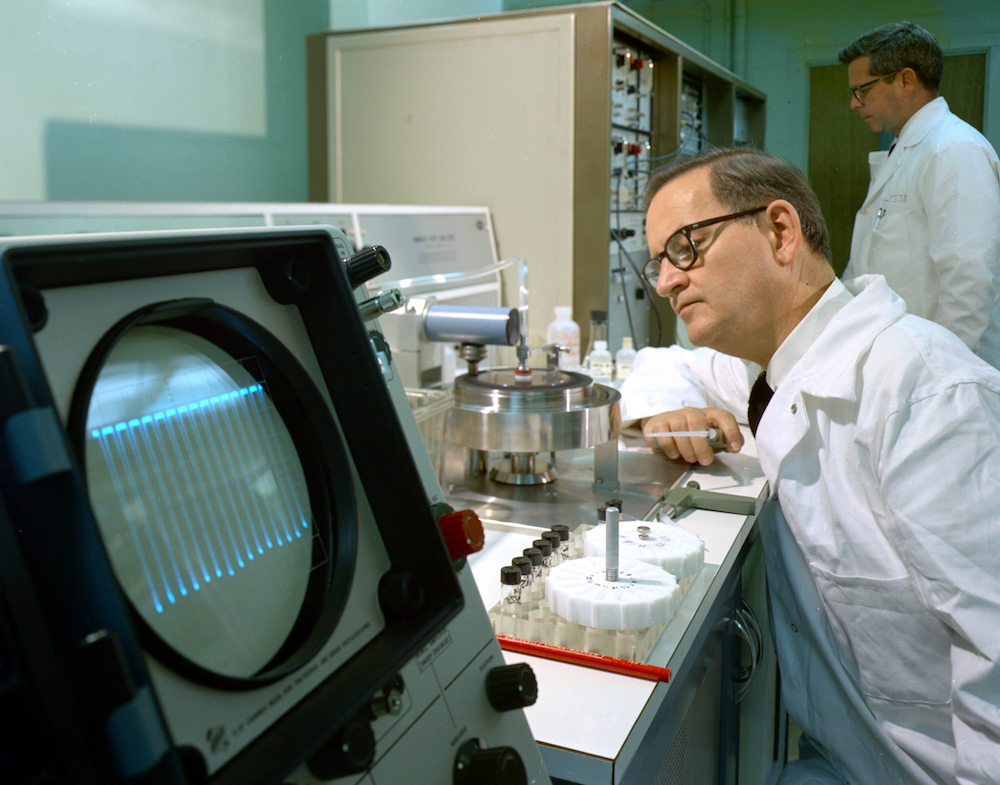
1962
Ion channeling discovery
While researching radiation damage in crystalline materials, ORNL researchers run computer simulations that reveal the ion channeling effect. The discovery leads to ion implantation science and advancements in semiconductor materials. For example, in the 1970s the combination of ion implantation doping and laser annealing is applied to prepare silicon for solar cell fabrication. It also spurs studies that lead to the development of rapid thermal annealing, a process widely used in the semiconductor industry.
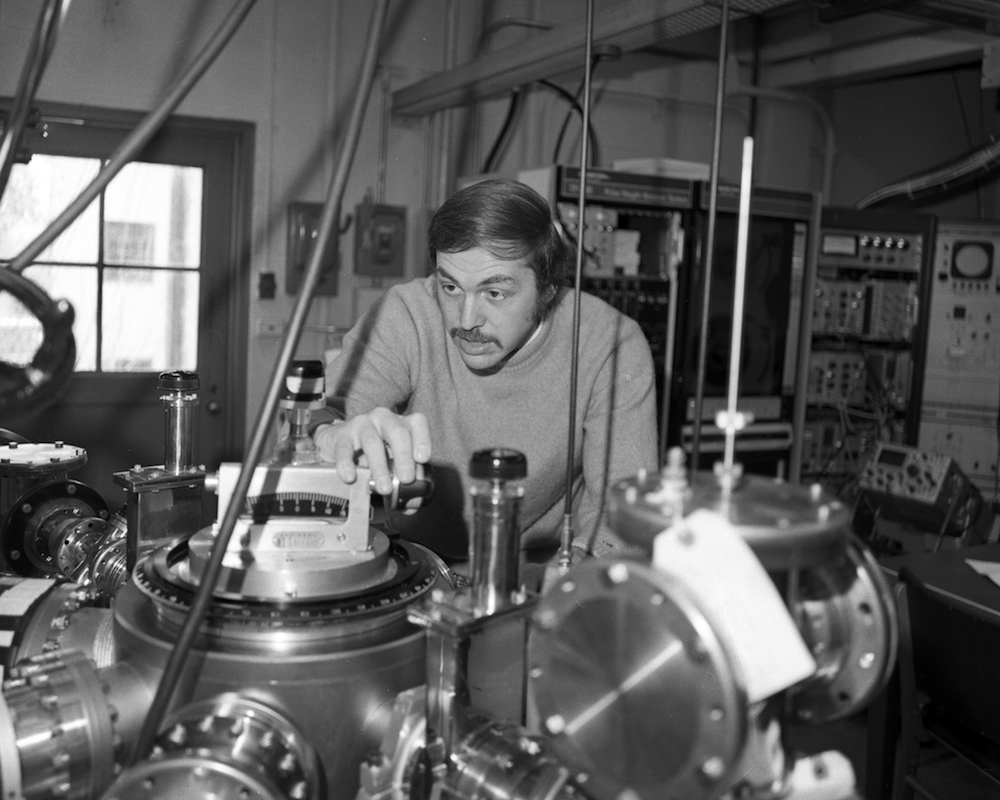
1963
Health Physics Research Reactor
Operational from 1963 to 1987, the Health Physics Research Reactor is used for dosimeter development, training in radiation dosimetry and nuclear engineering, simulation of human-body exposure, radiobiology studies with plants and animals, simulation of nuclear weapon and accident spectra, and testing of radiation alarms. The dosimetry and human-body experiments are particularly valuable in the setting of radiation exposure limits.
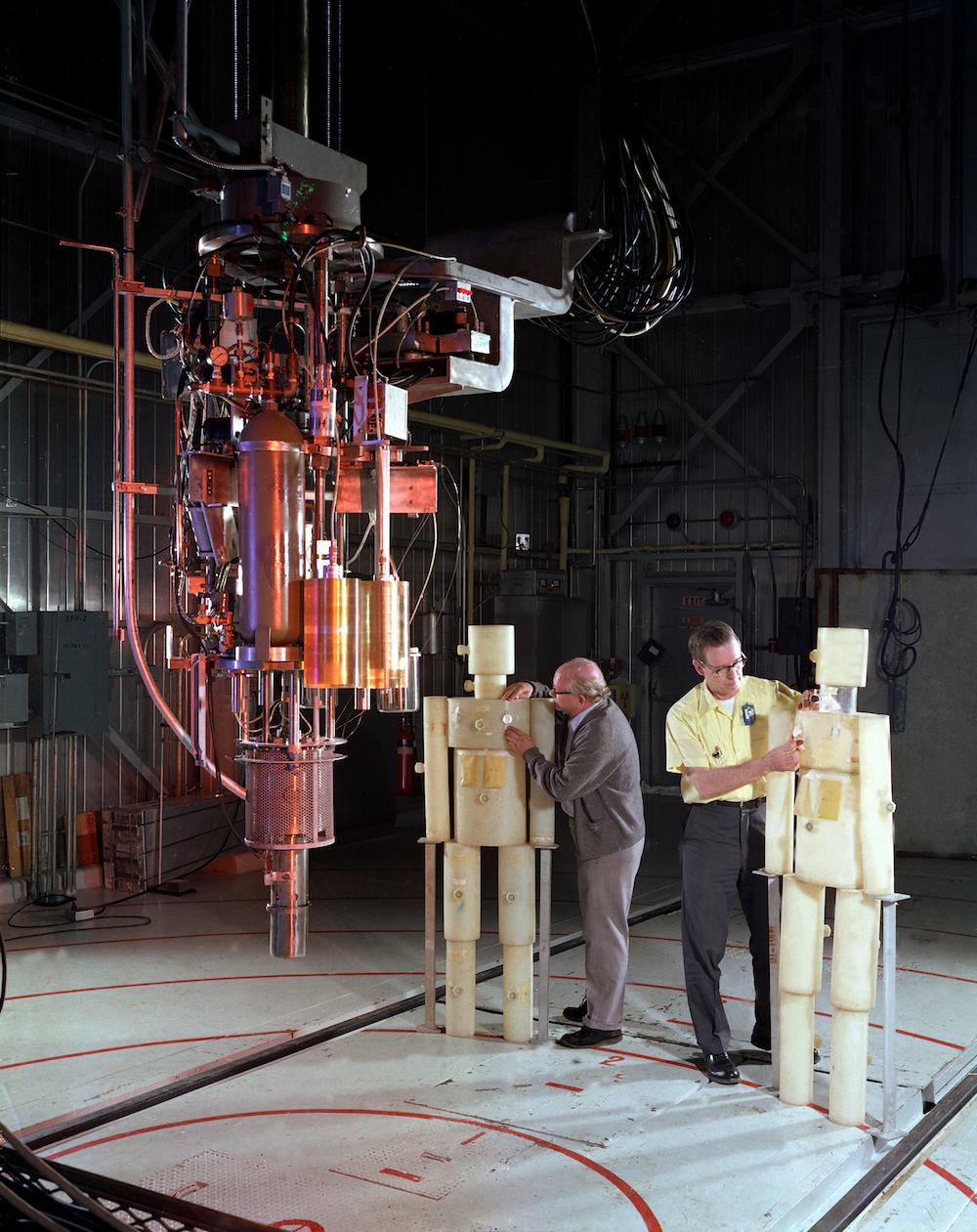
1964
Civil defense
ORNL researchers discover the biochemical mechanisms by which DNA is repaired after being damaged by environmental insult or intrinsic thermal reactions. Dysfunction of this DNA repair system is the basis of the human genetic disease xeroderma pigmentosum, in which patients are at risk for skin cancer when exposed to ultraviolet radiation from sunlight.
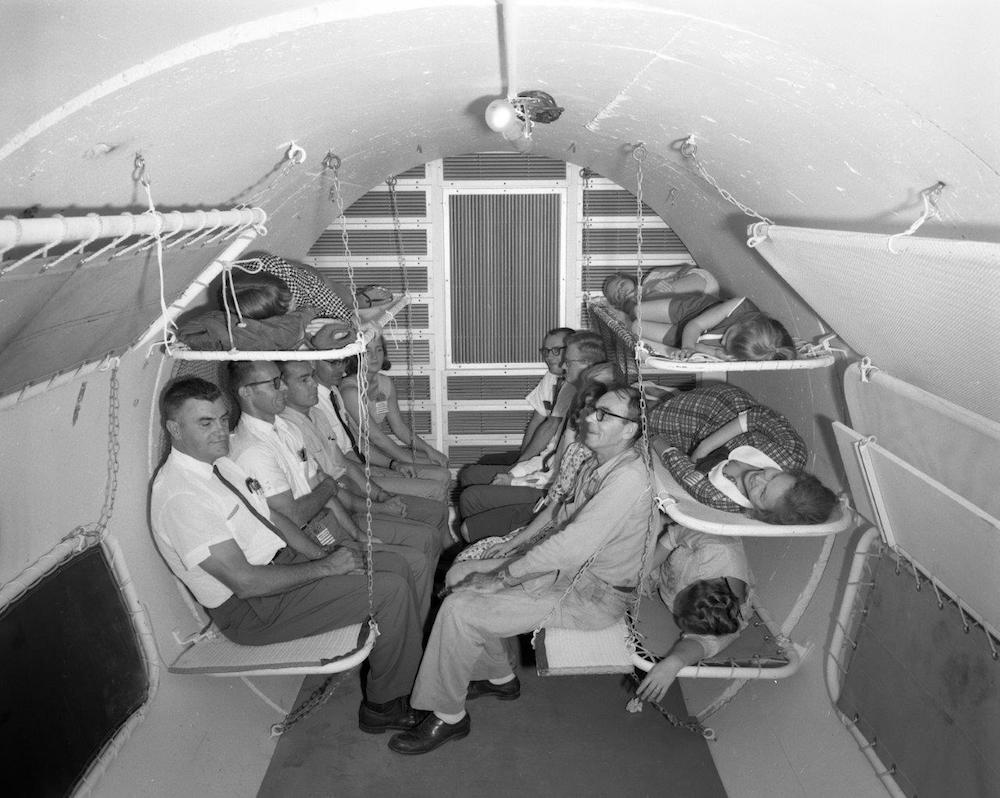
1965
Desalination technologies
Desalination technologies
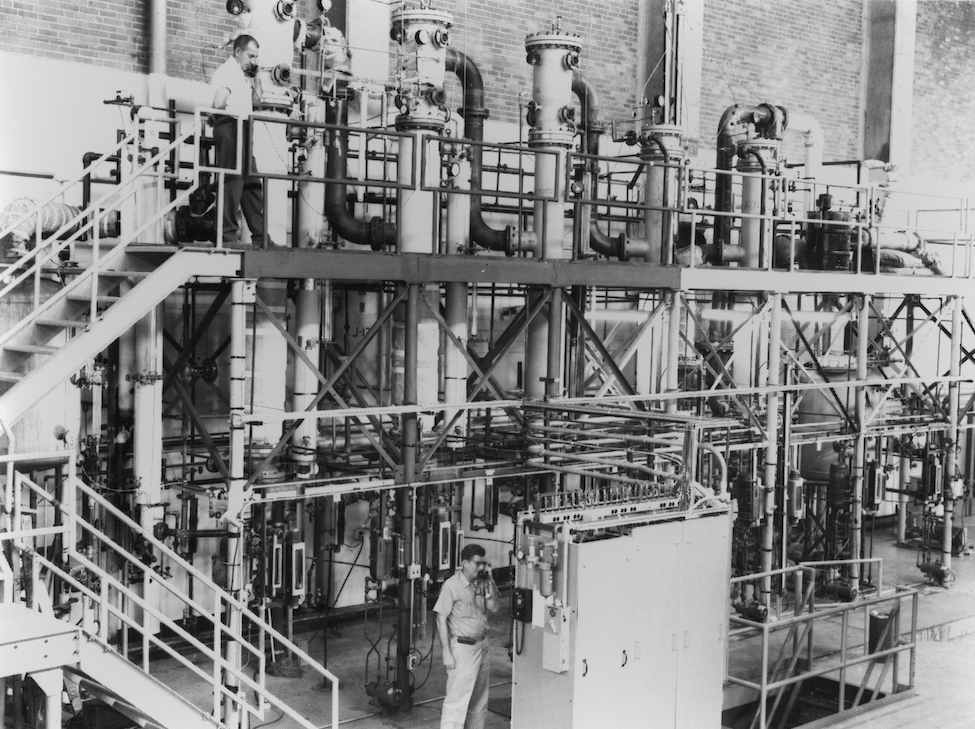
1965
Molten Salt Reactor Experiment
With the Aircraft Reactor Experiment showing the feasibility of molten salt fuel, the Atomic Energy Commission funds the Molten Salt Reactor Experiment (MSRE) to demonstrate key elements needed for a civilian power reactor. The MSRE goes critical using uranium-235 on June 1. On October 2, 1968, MSRE becomes the first reactor to operate using uranium-233. Although the reactor shuts down in December 1969, renewed interest in the technology resurfaces over 40 years later.
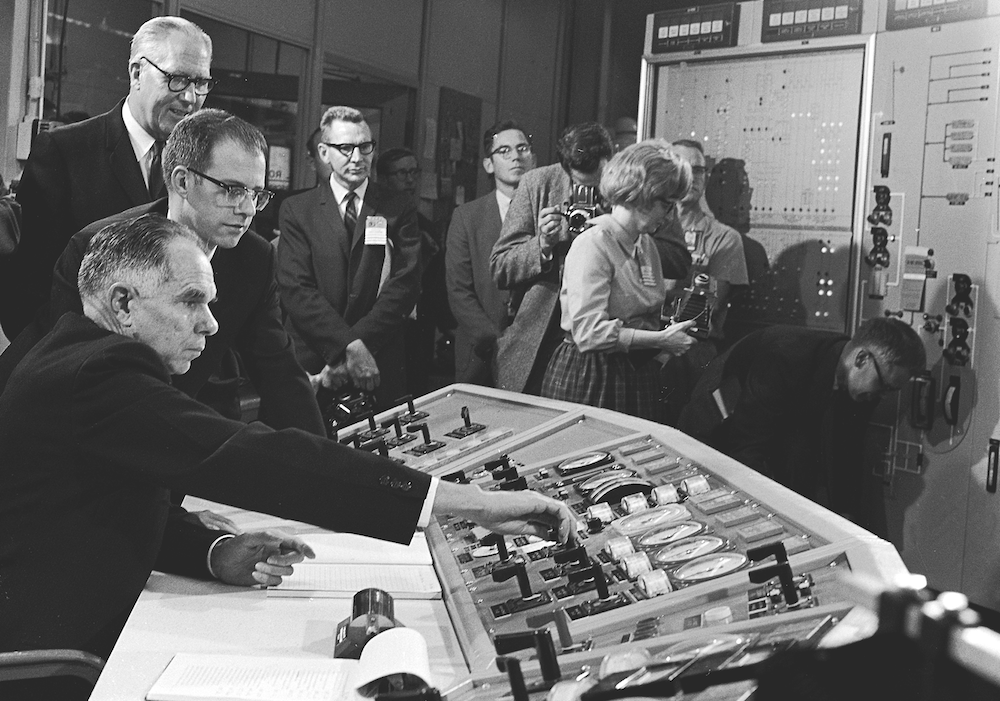
1965
High Flux Isotope Reactor
The High Flux Isotope Reactor (HFIR) achieves criticality in August 1965. HFIR is designed to produce super heavy elements such as californium, and its intense neutron beams also are applied to materials studies. HFIR becomes a user facility when the National Center for Small-Angle Scattering Research opens in 1980, and continues to operate today, providing one of the highest steady-state neutron fluxes of any research reactor in the world.
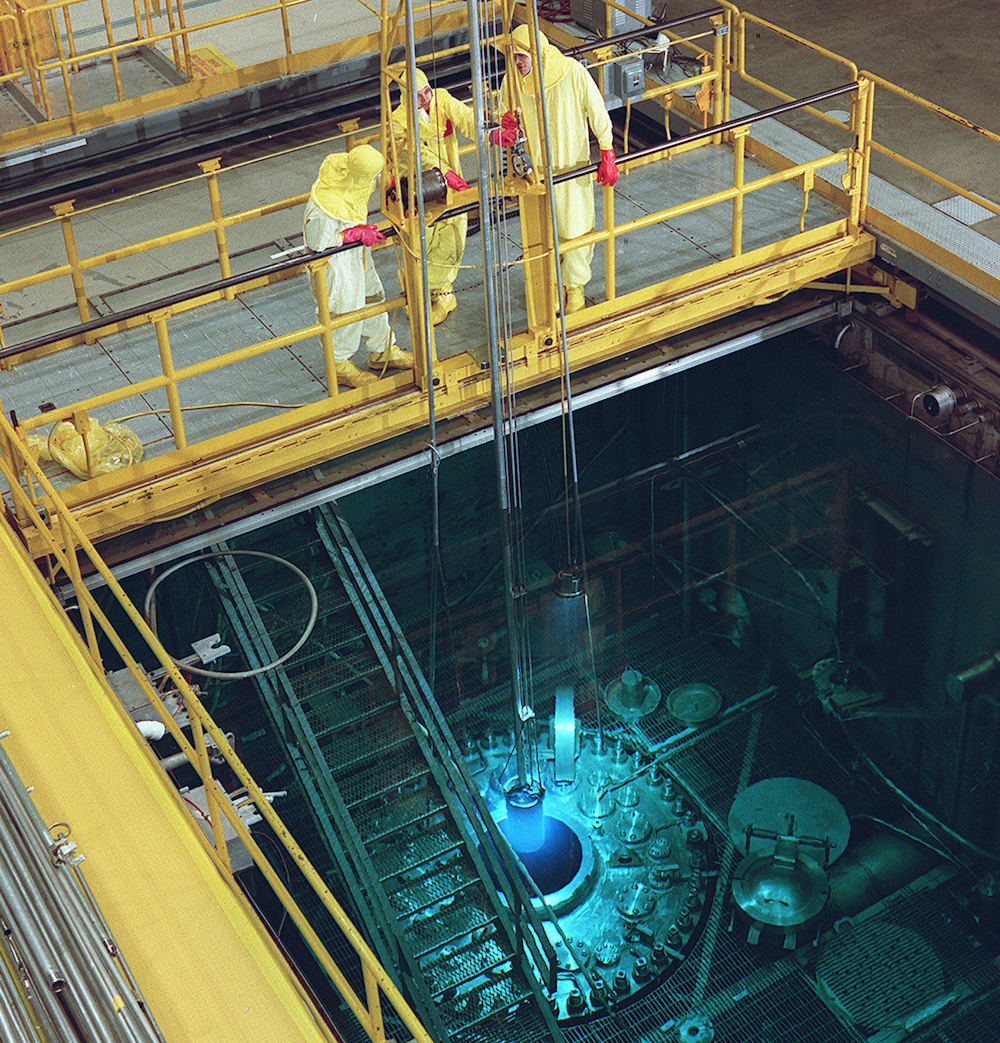
1965
Groundbreaking 3D visualization technique
ORNL researcher develops the Oak Ridge Thermal Ellipsoid Plot (ORTEP) computer program that produces accurate three-dimensional line drawings of complex crystal structures in a fraction of the time required to draw the figures by hand. With multiple releases since its introduction, the program continues to be a valuable resource to scientists at ORNL and throughout the world by making crystal structure illustrations readily available for publications and improving how audiences visualize the atomic world.
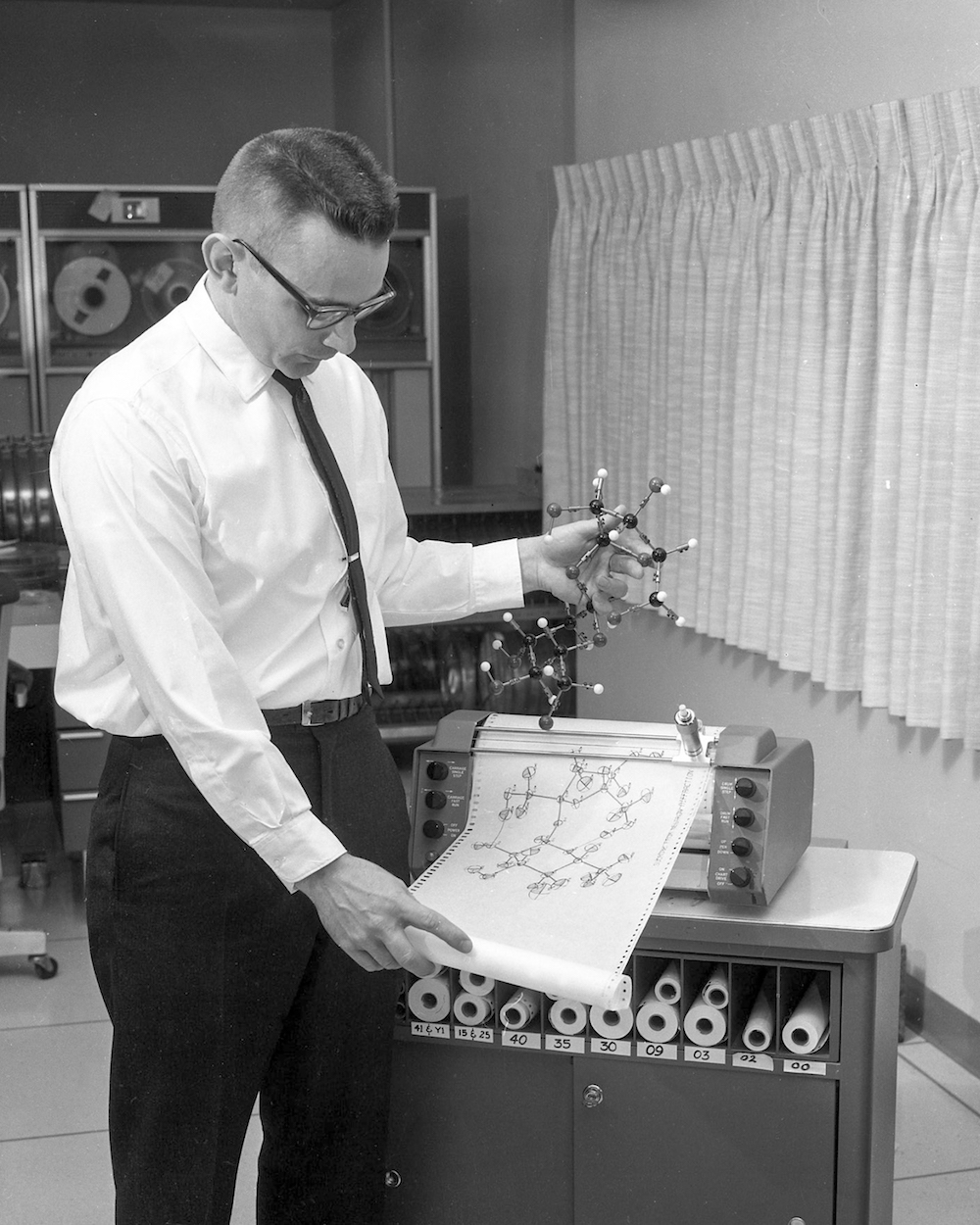
1966
Nuclear criticality safety code
ORNL develops the KENO Monte Carlo code for use in nuclear criticality safety assessments and provides benchmark data against which the computer code calculations can be checked. This technology leads to future significant code enhancements and additional validation, including simulating the pin powers of the AP1000 nuclear reactor.
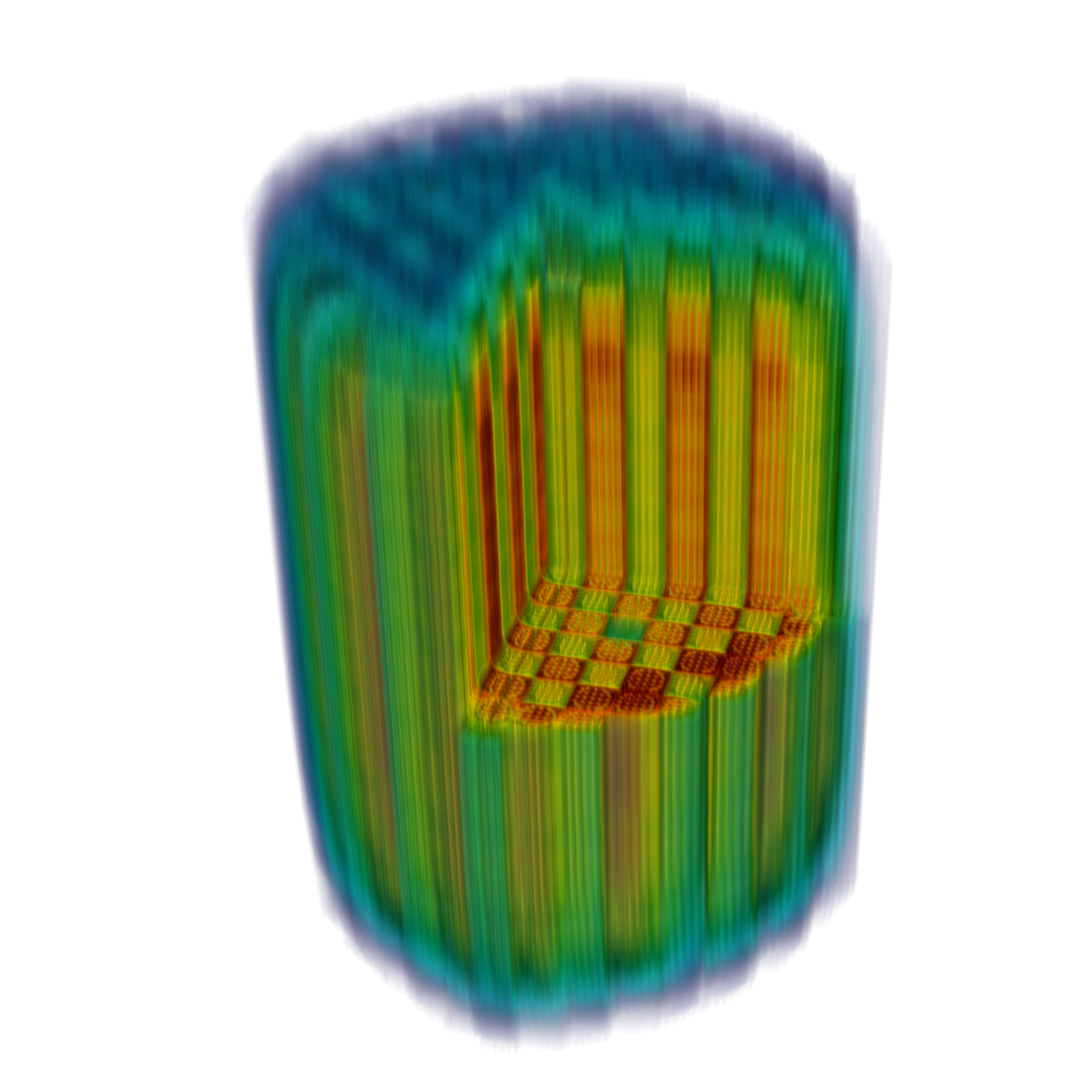
1967
Environment in focus
ORNL launches a series of multidisciplinary seminars that address environmental issues and the general role of science in the formation of public policy. These seminars help shape the laboratory's direction in environmental studies and Director Alvin Weinberg's formation of a National Environmental Concept Committee that conceives of the need for national environmental laboratories.
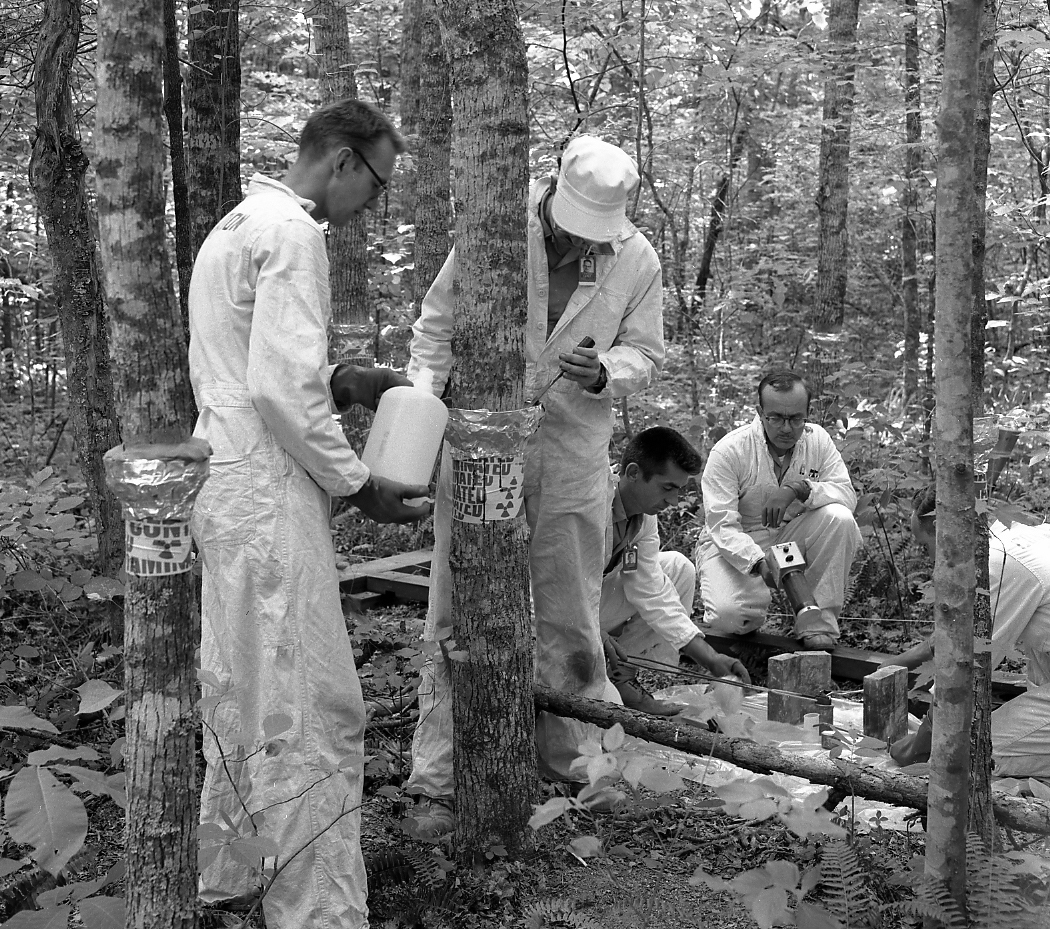
1969
Moon Exploration Support
ORNL expertise supports man's first walk on the Moon in a variety of ways. Researchers help design a lunar rock scoop for Apollo 11 astronauts as well as a vacuum-sealed box for housing rock samples collected on the Moon in July 1969. Afterward, an ORNL team analyzes the rocks and publishes the results in the "Moon Issue" of <em>Science</em> in 1970. As part of their study, the team members assayed lunar samples for uranium, thorium, and other indicators of the rock's age.
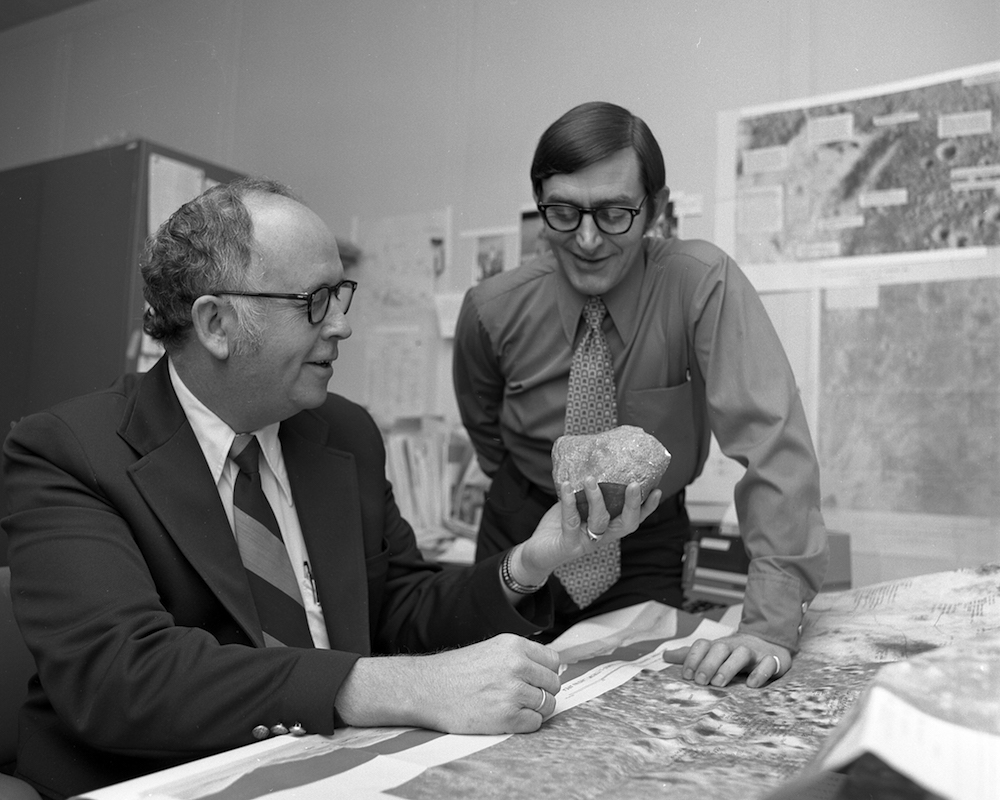
1970
Energy conservation
The National Science Foundation funds ORNL studies that examine ways to reduce energy demand by promoting energy conservation. Researchers emphasize the importance of better home insulation and conclude that increasing the efficiency of transportation and home appliances could significantly lower levels of energy consumption. Other conservation efforts include work to reduce energy used by industry and energy used for sewage treatment.

1971
Aquatic Ecology Laboratory
The Aquatic Ecology Laboratory is established to study data on the effects of water temperature on fish. Leading up to the opening, research led by ORNL's Chuck Coutant concerning the effects of heated water discharged from power plant cooling systems on fish and other aquatic life is reflected in the Clean Water Act of 1970 and the Environmental Protection Agency's implementation document.
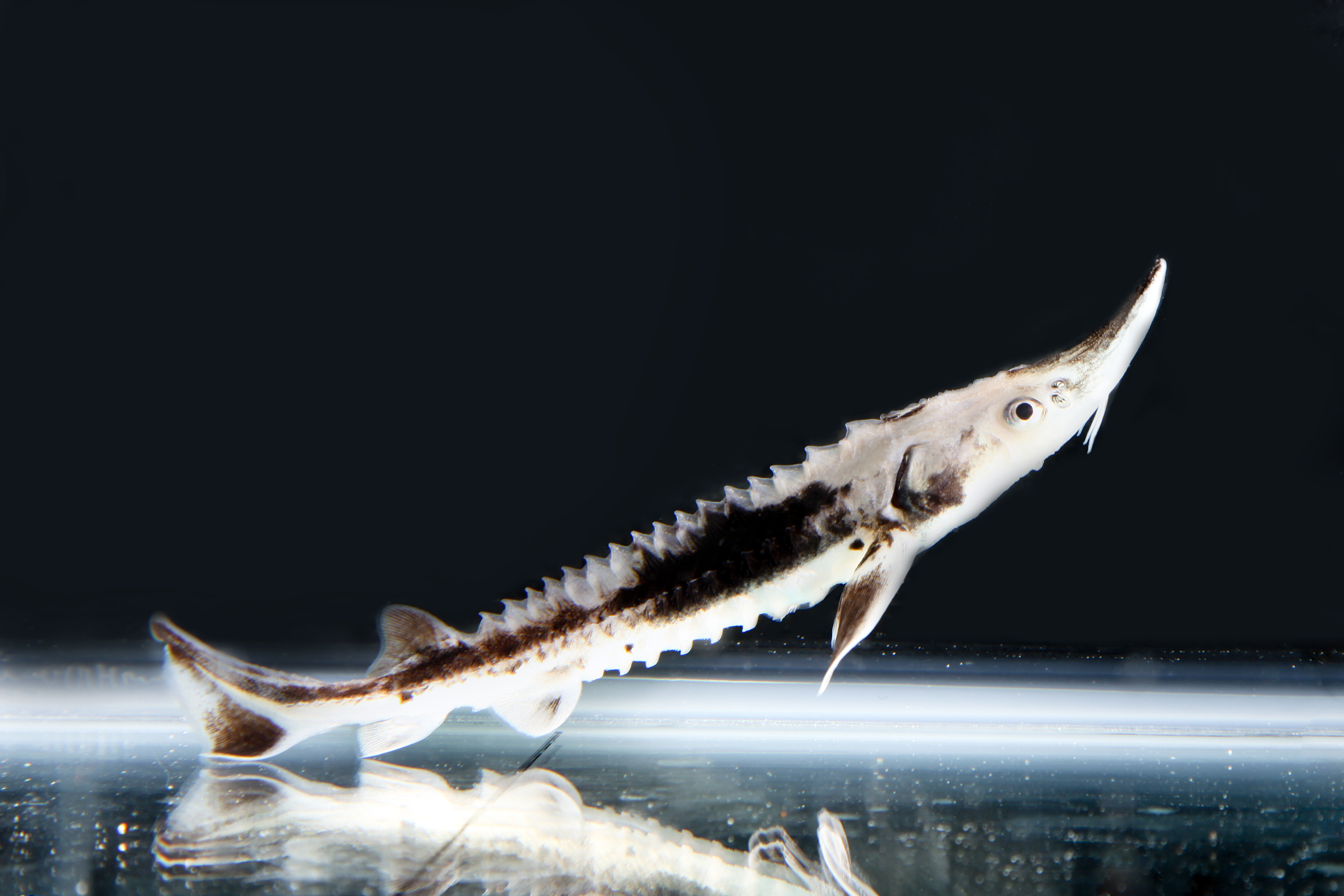
1971
ORMAK, experimental fusion tokamak
In the laboratory’s pursuit of fusion energy, its first tokamak, ORMAK, begins operations in 1971. ORMAK eventually achieves a plasma temperature of 20 million degrees, approaching record temperatures that are needed for self-sustaining fusion reactions.
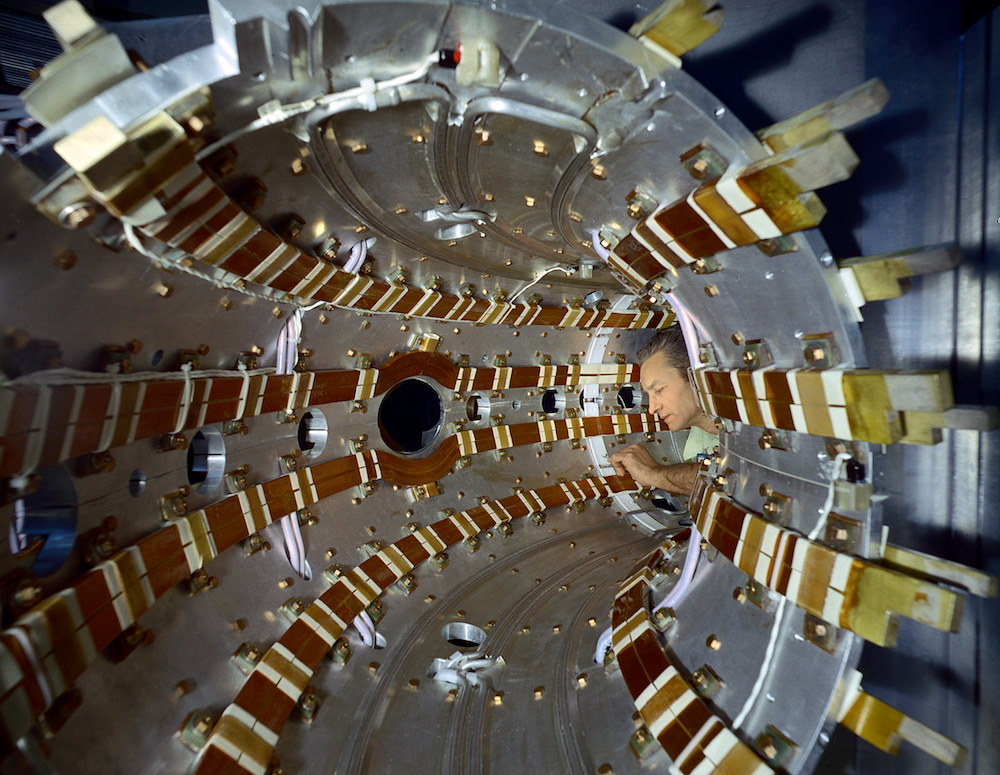
1972
Surrogate reproduction demonstrated
Researchers freeze, thaw, and implant mouse embryos in surrogate mothers that give birth to healthy mouse pups. The technique is featured on the cover of Science magazine and adopted by the cattle industry for multiplying the reproductive potential of prize cattle.
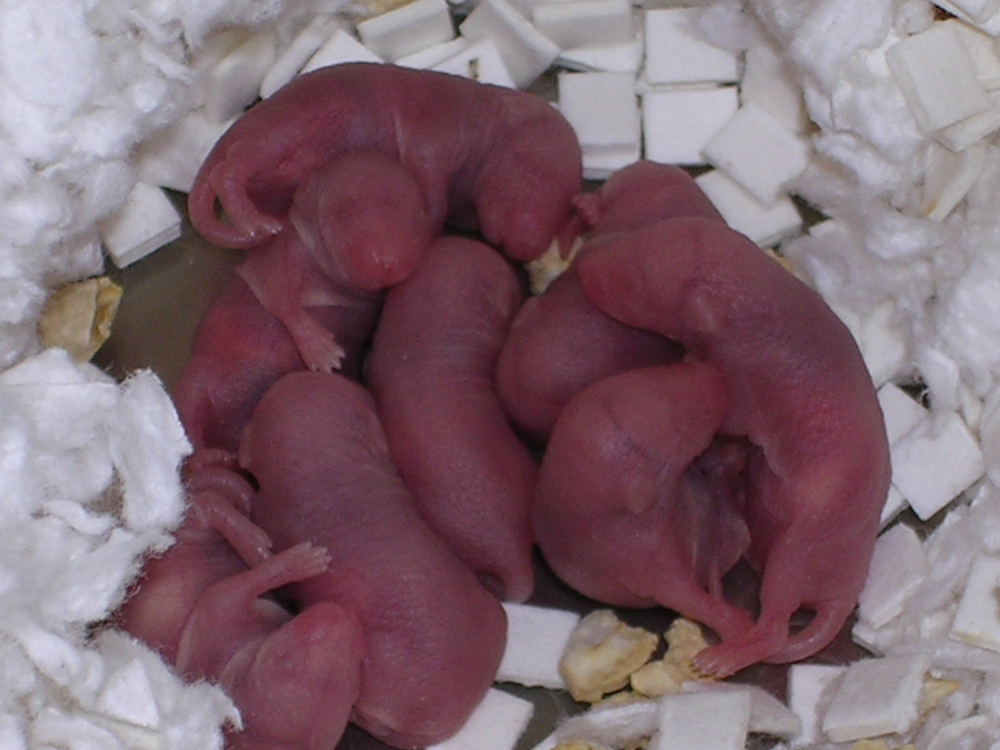
1974
Nucleosome discovery
University of Tennessee/ORNL researchers Ada and Donald Olins discover the nucleosome by electron microscopy and propose its structure. The nucleosome is fundamental to chromosome structure and function as the subunit for packaging DNA within chromosomes and the cell nucleus. The Olins propose that these particles have a dyad axis (like DNA) and pairs of the basic proteins (histones), which is later confirmed.
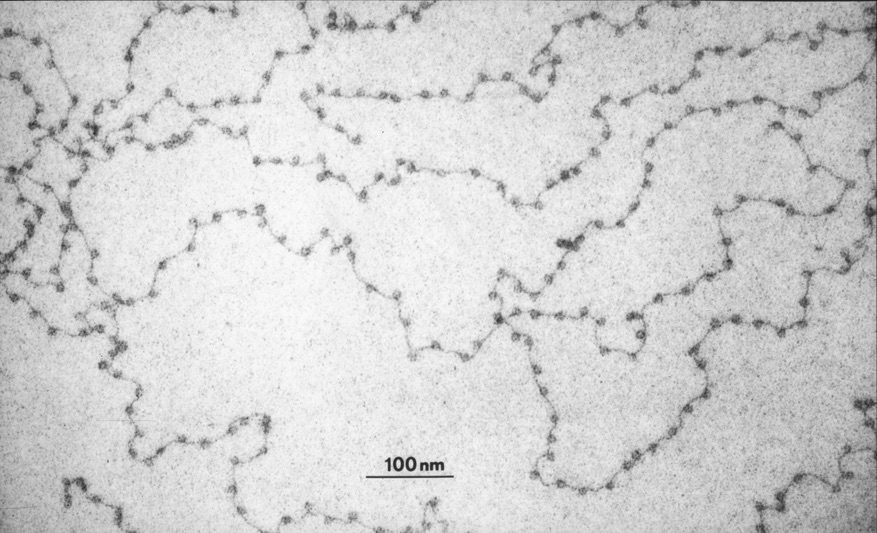
1974
Non-nuclear energy research and applications
ORNL adds fossil fuel and energy conservation programs to its nuclear fission and fusion energy missions. It aligns energy research and conservation to broad questions of social and environmental impacts and puts new focus on research related to buildings, appliances, transportation, advanced materials, and analysis of energy issues.
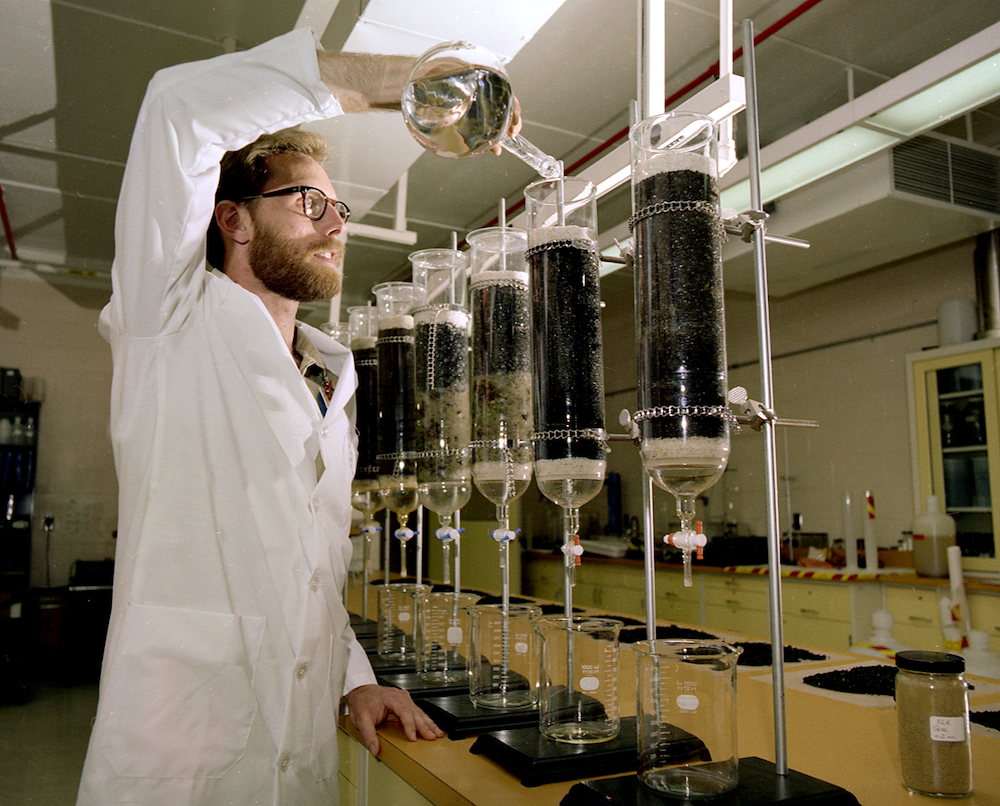
1975
Heart-imaging agent
Researchers develop a radioactive imaging agent for medical scanning diagnosis of heart disease that can be used to detect how much heart muscle is alive after a heart attack and predict whether bypass surgery or balloon angioplasty will restore blood flow.

1976
Ensuring nuclear nonproliferation
A high-sensitivity isotope ratio mass spectrometer designed and built at ORNL is delivered to the International Atomic Energy Agency. The tool is used to measure thousands of samples of uranium and plutonium from around the world to verify compliance with the Treaty on the Nonproliferation of Nuclear Weapons that became effective in 1970.
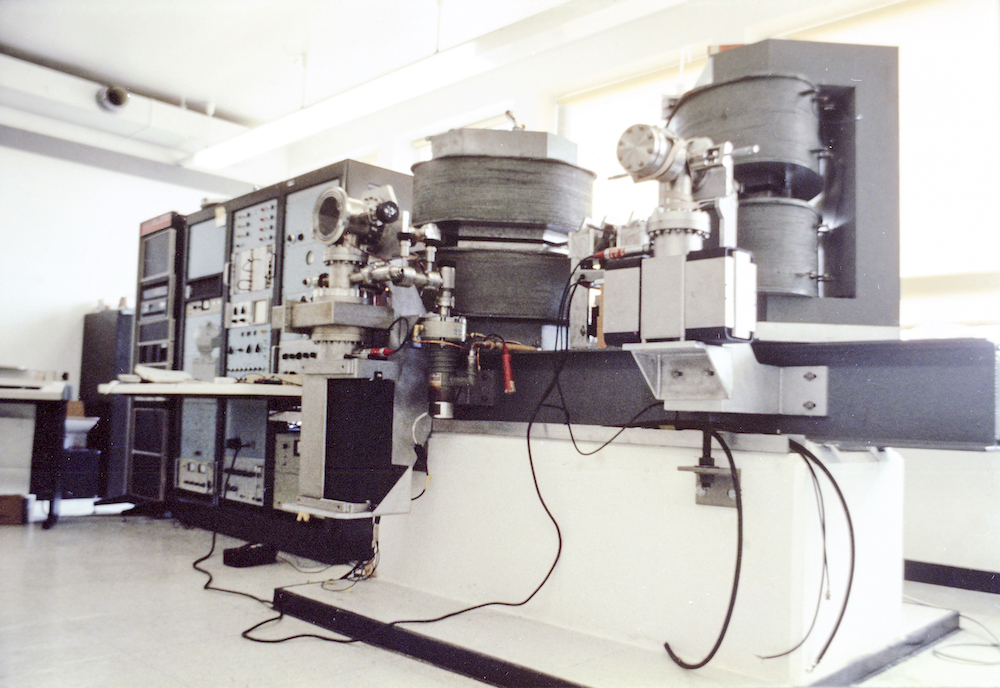
1977
Equipping NASA spacecraft
In 1961, ORNL researchers begin developing radioisotope heat sources to power satellites. In 1975 they introduce an iridium alloy needed to clad spheres of plutonium-238 oxide fuel in the Voyager 1 and 2 spacecraft that launch in 1977. Another ORNL material aboard is thermal insulation consisting of bonded mattes of carbon fiber to maintain the fuel cladding in a preferred temperature range. Both ORNL materials are deployed aboard other NASA spacecraft, including Galileo and Cassini.

1978
Jimmy Carter
On May 22, 1978, President Jimmy Carter tells an audience of staff that ORNL will play a key role in the future of energy research. Less than one year prior to his visit, President Carter signs into law the Department of Energy Organization Act, forming the Department of Energy and consolidating energy policy and more than 30 energy functions. Carter shares a unique connection to ORNL through his prior work on a Navy submarine as a nuclear engineer under the supervision of Admiral Hyman Rickover, graduate of ORNL's Clinton Training School.
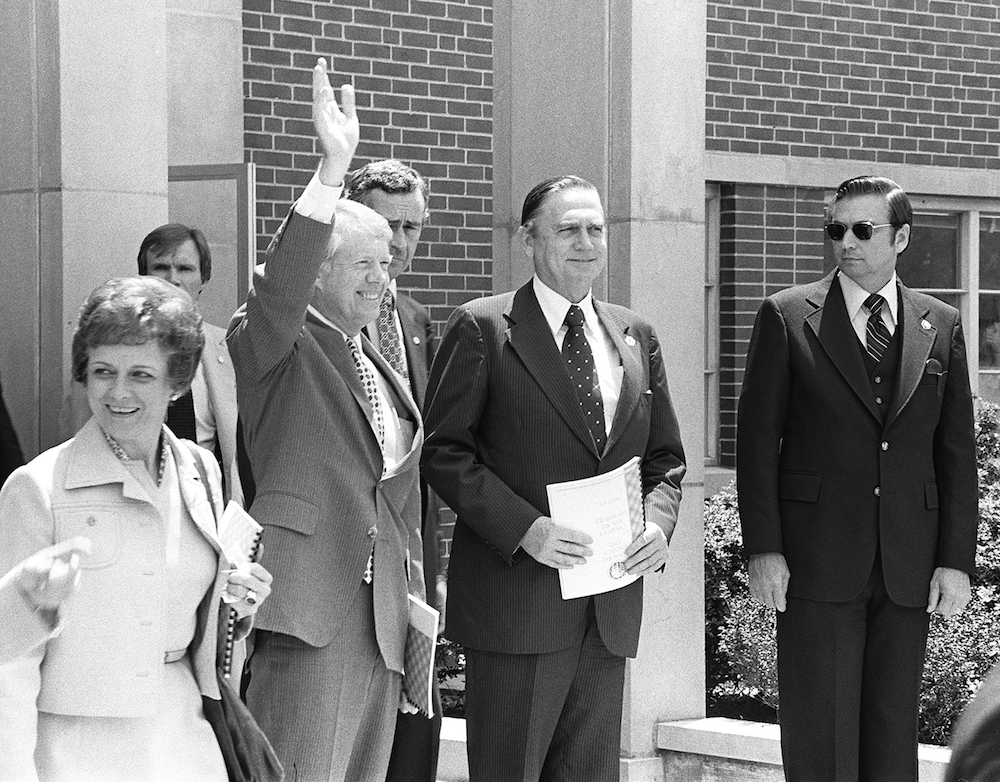
1979
Three Mile Island accident support
ORNL helps the Nuclear Regulatory Commission ascertain the causes and consequences of the Three Mile Island nuclear power plant accident that occurred March 28, 1979. ORNL helps develop the Sequence Coding and Search System, which captures information on nuclear plant operations and is used for numerous safety studies, regulatory actions, and risk assessments. ORNL also develops accident models, prompting design improvements and regulatory guides for digital instrumentation and control systems in nuclear plants.
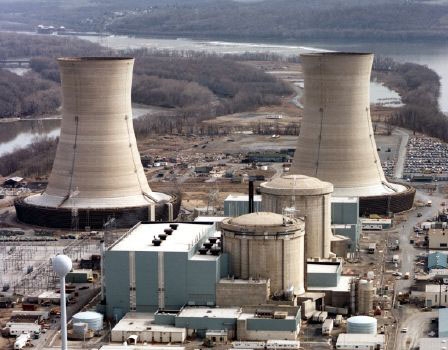
1979
Robotics for radioactive work
ORNL researchers devise remotely controlled dexterous servomanipulators to conduct work in radioactive zones too hazardous for humans. ORNL's robotics activities are applied to nuclear fuel processing, military-field munitions handling, fusion reactors, and environmental cleanup projects.
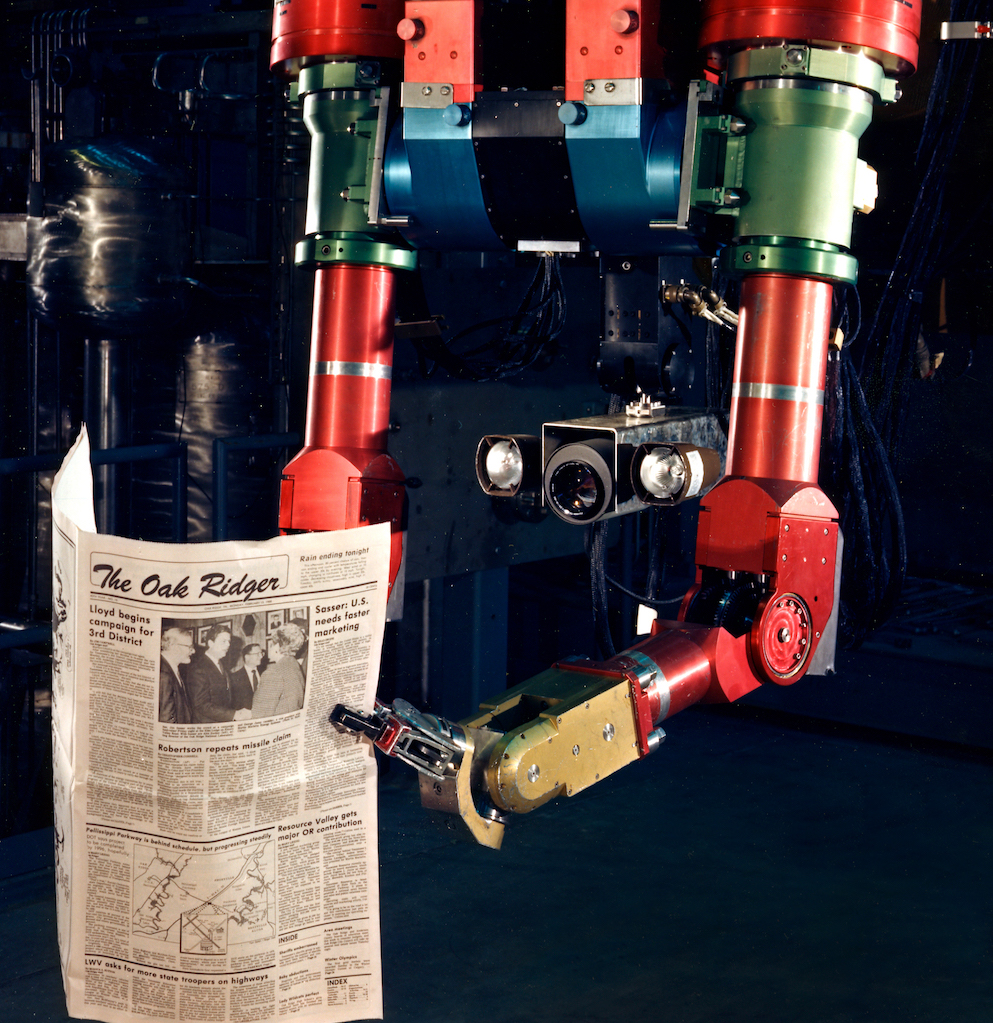
1979
Supermutagen discovery
Bill Russell leads the research team that identifies ethylnitrosourea (ENU) as a "supermutagen" that is the most effective chemical in inducing mutations in mice. Subsequently, ENU is used widely as the gold-standard reagent for the discovery and cloning of genes associated with human diseases.
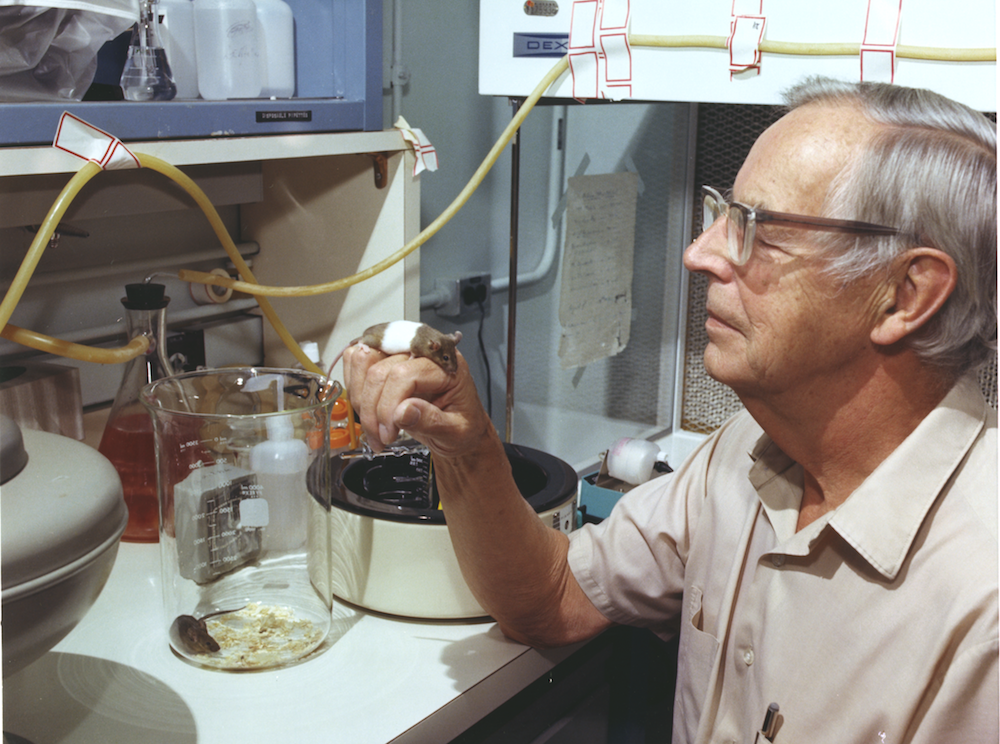
1979
Chrome-moly steel
Researchers investigate the properties of 120 laboratory melts and determine the recommended composition and heat treatment of a chrome-moly steel that has better tolerance of design stresses with no loss of ductility, higher resistance to thermal stress, immunity to stress corrosion cracking in chloride-bearing water, and resistance to radiation-induced swelling. Chrome-moly steel is used in electric utility boilers and oil refinery furnaces worldwide.
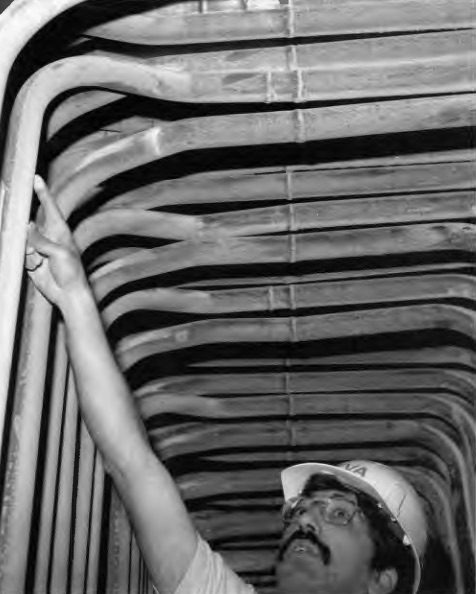
1980-1999
Partners in Science
As the Cold War cools down and America sifts through the implications of the Three Mile Island accident, ORNL strengthens its dedication to nuclear nonproliferation, nuclear safety, and security efforts around the world. The laboratory also focuses on transforming scientific discoveries into useful technologies that can be deployed in the marketplace. Partnerships between the national laboratories and private industry enable rapid strides in solving transportation and building efficiency problems, and successive generations of ever-more powerful supercomputers accelerate research and development.
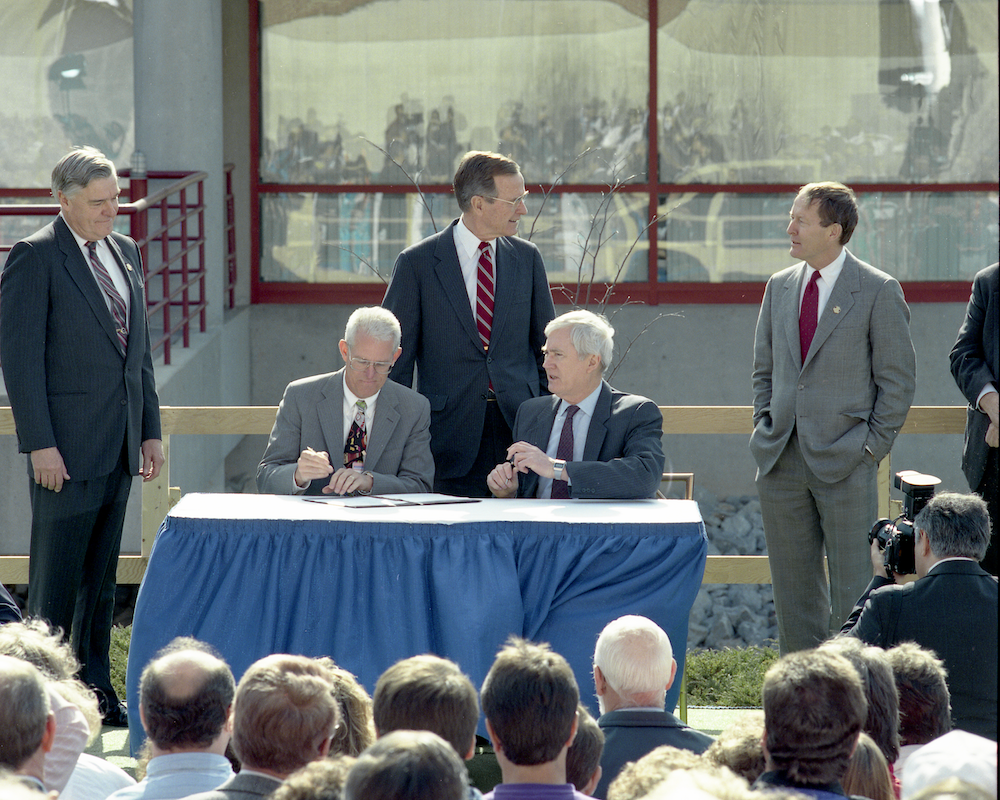
1980
Software for nuclear safety
ORNL researchers develop the Standardized Computer Analyses for Licensing Evaluation (SCALE) as an easy-to-use computer software system for determining whether designs of nuclear facilities and transportation of storage packages meet nuclear safety standards. SCALE incorporates well-known computer codes, such as the KENO Monte Carlo code developed at ORNL in 1966 for criticality safety assessments. SCALE is used worldwide. SCALE can be applied to ensure radiation doses to workers are as low as reasonably achievable, nuclear criticality cannot be achieved during storage, and heat generated from radiation can be properly vented.
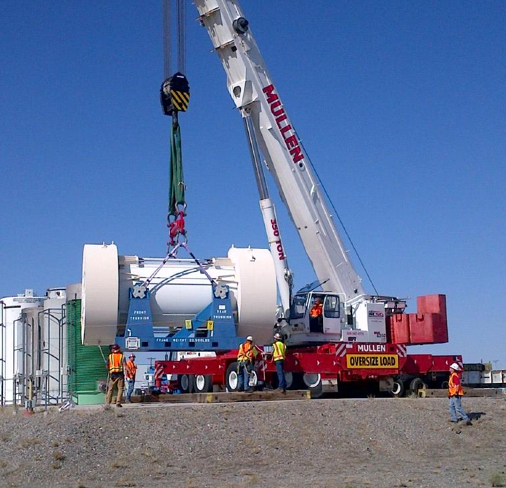
1982
Holifield Heavy Ion Research Facility
Holifield Heavy Ion Research Facility, a DOE user facility, opens featuring the Oak Ridge Isochronous Cyclotron that's reconfigured to serve as a booster accelerator coupled with a 25-million volt tandem electrostatic accelerator. The facility is rebranded as the Holifield Radioactive Ion Beam Facility in 1996 and eventually provides more than 70 ion species for researchers worldwide until it ceases operations in 2012. The American Physical Society designates the facility as a Historic Physics Site in 2016.
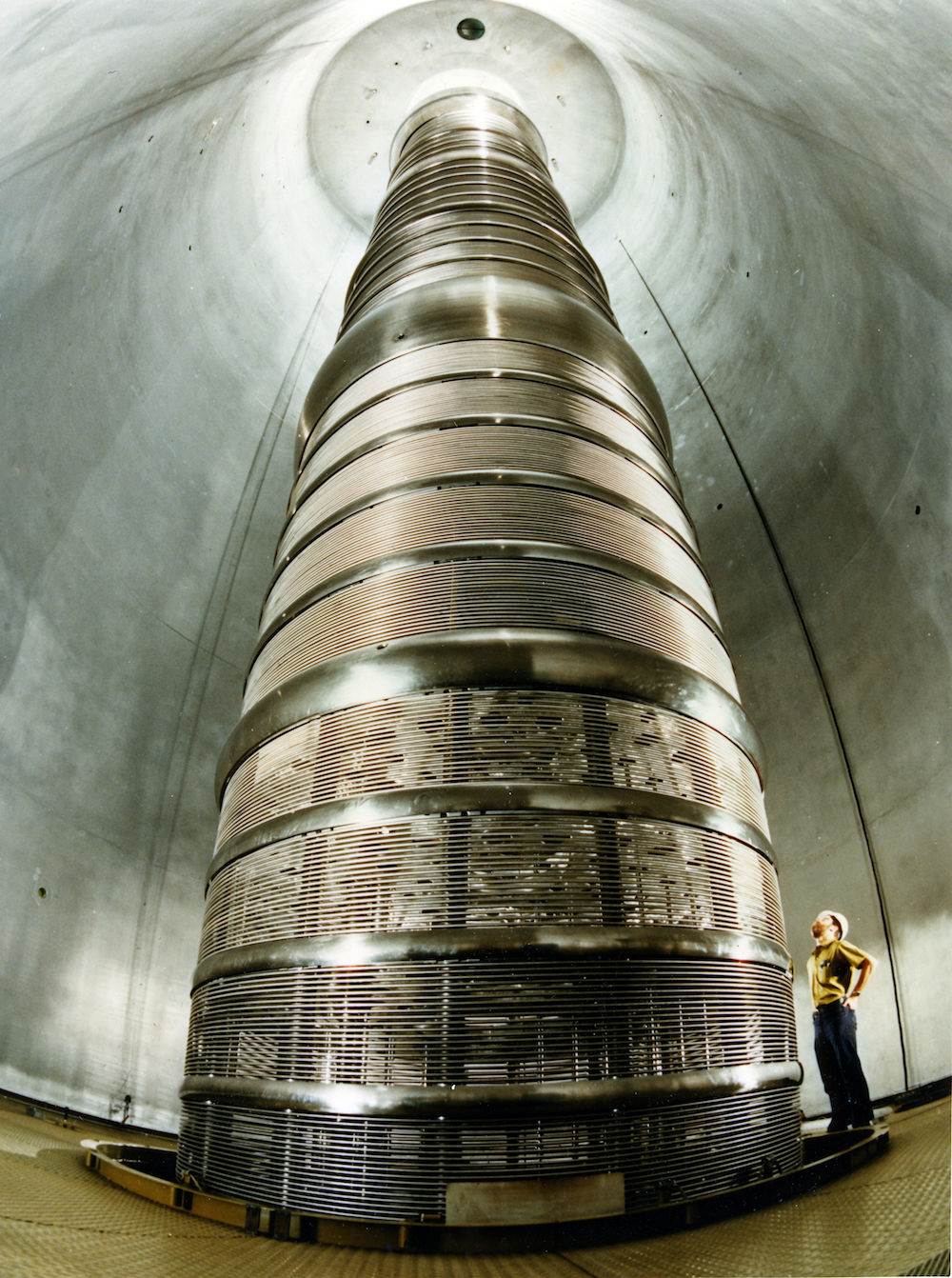
1982
Creep-strength steel
From the mid-1970s to early 1980s, ORNL works with Combustion Engineering (now Alston Power Inc.) to develop the first creep-strength enhanced ferritic (CSEF) steel, Grade 91. The steel debuts in 1982. Grade 91 and subsequent CSEF steels become a worldwide standard for achieving high efficiency and safe and reliable performance.
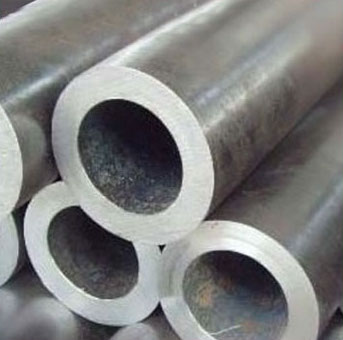
1983
Award-winning alloy
By adjusting the composition of nickel aluminide and adding small amounts of boron and manganese and large amounts of iron, ORNL metallurgists produce a new intermetallic ordered alloy that is stronger than conventional structural materials at elevated temperatures. An R&D 100 award winner in 1983, the alloy is also ductile enough to be used in automobile valves, turbine disks, and other components of high-temperature heat engines and power plants.
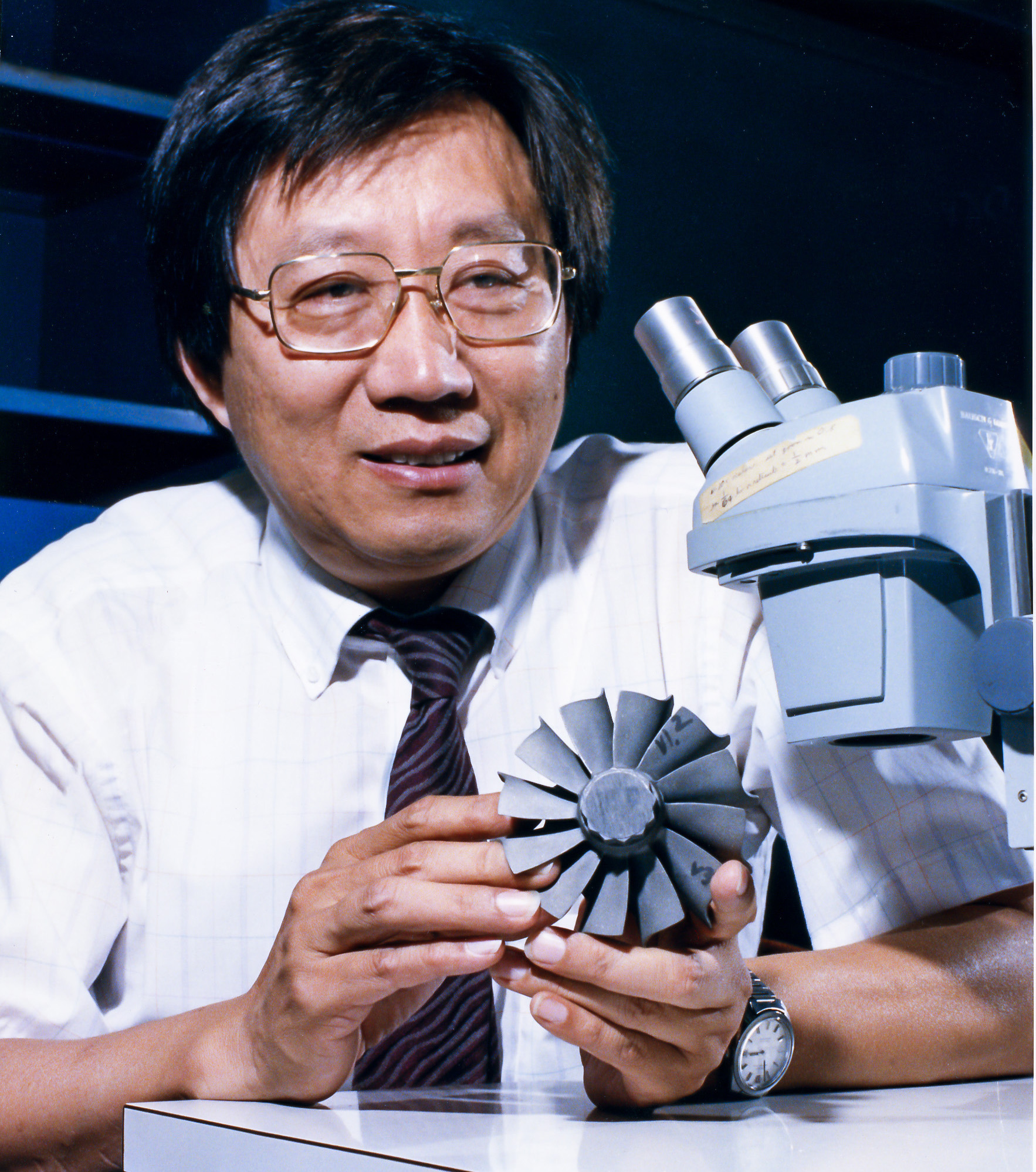
1986
Chernobyl accident support
ORNL takes a role in the investigation of the Chernobyl nuclear power plant accident in the Soviet Union by assembling a team from several Department of Energy laboratories to model the Chernobyl reactor systems to better understand the causes, course, and consequences of the accident.
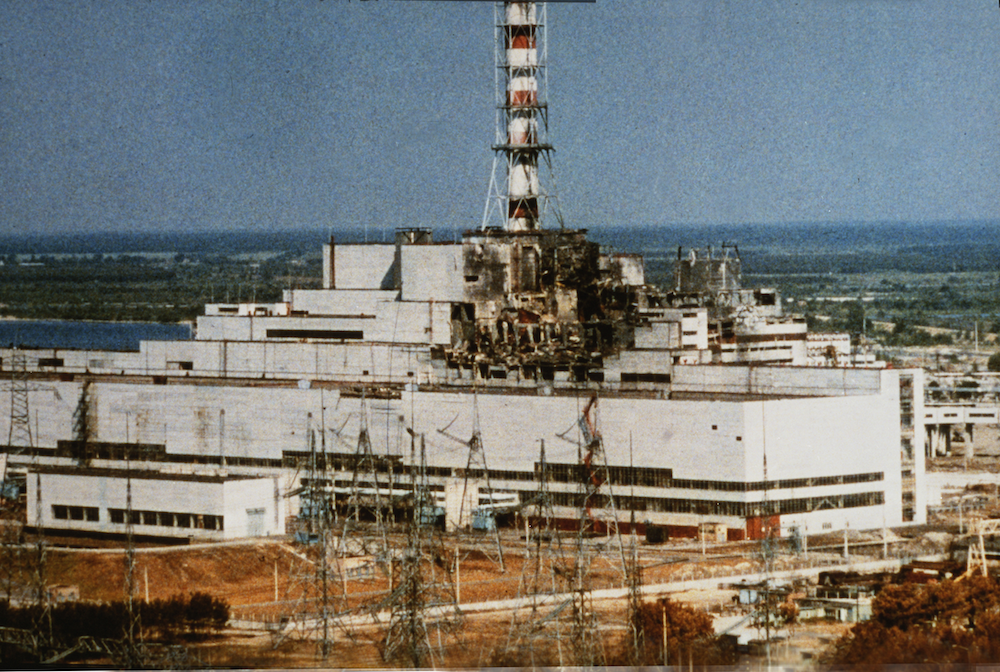
1989
Parallel Virtual Machine software
The first version of the Parallel Virtual Machine software is developed at ORNL, attracting more than 400,000 users in the mid-1990s to become the international de facto standard for clustering computers into a virtual supercomputer.
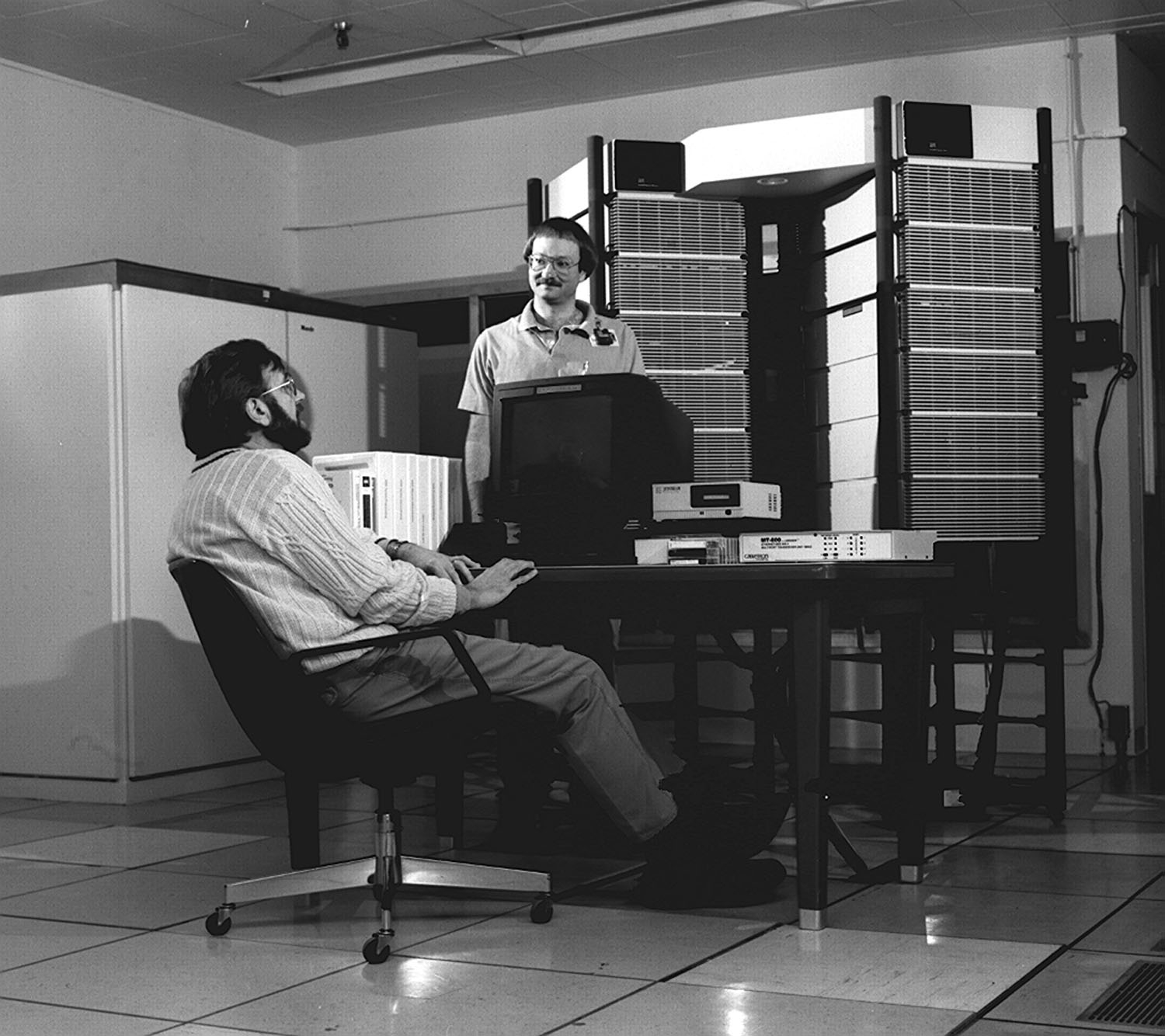
1990
Clean Air Act of 1990
Provisions of the Clean Air Act Amendments of 1990 that restrict industrial emissions of sulfur and nitrogen oxides reflect the findings of ORNL acid rain research for the National Acid Precipitation Assessment Program.
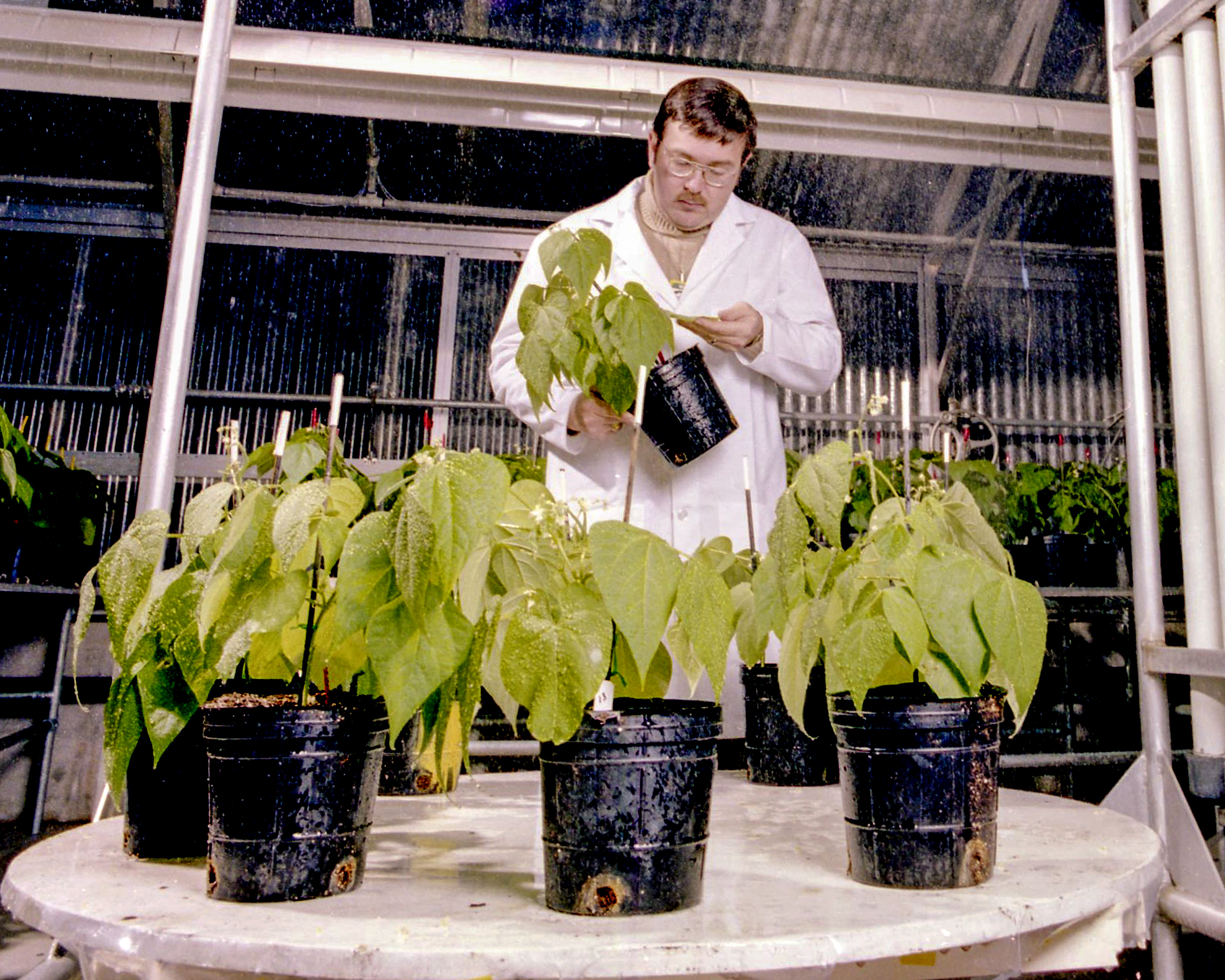
1991
Gulf War support
The US Transportation Command uses software models developed by ORNL's Center for Transportation Analysis to schedule deployment of troops and equipment to the Middle East for Operations Desert Shield and Desert Storm in the largest airlift operation in history.

1991
Investigating the death of a president
Researchers perform neutron activation analysis at the High Flux Isotope Reactor on samples of hair and nails from President Zachary Taylor's remains and, with the results, refute the theory that President Taylor died of arsenic poisoning in 1850.
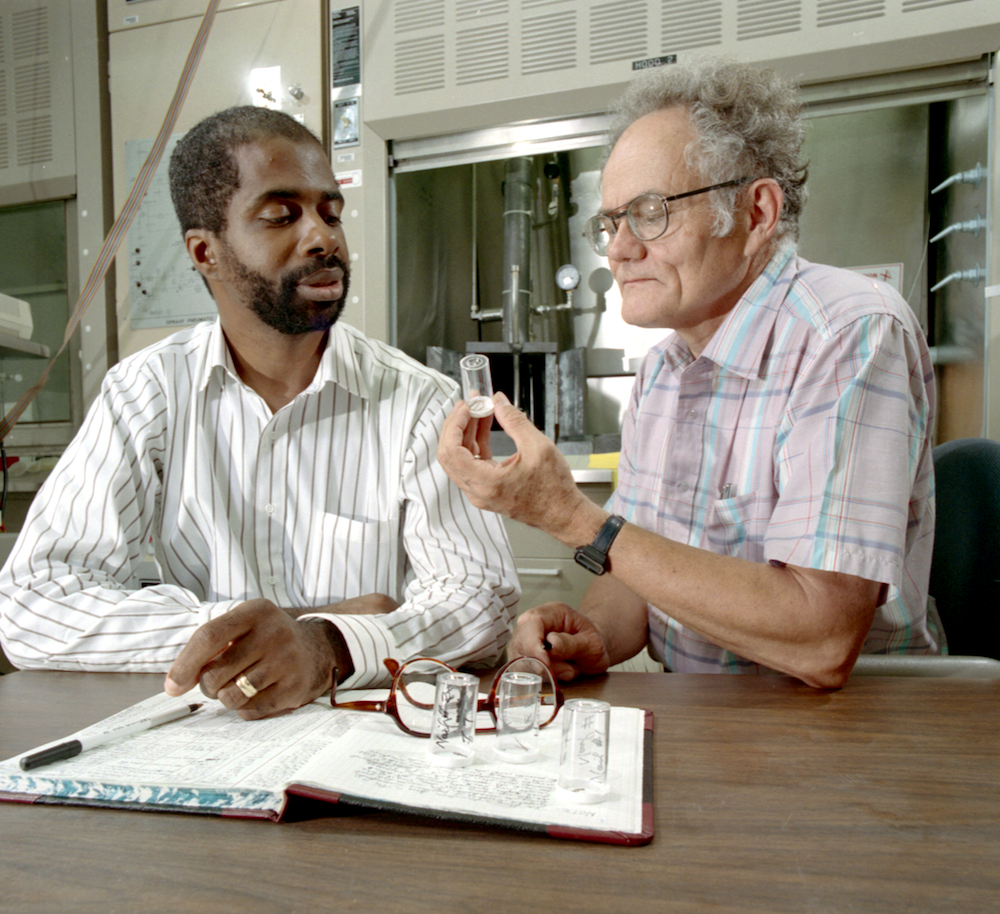
1992
Mouse agouti gene discovery
Researchers identify and clone the mouse agouti gene. The mutated gene is found to cause obesity, altered fur color, diabetes, and skin cancer in mice, and it has a human counterpart.
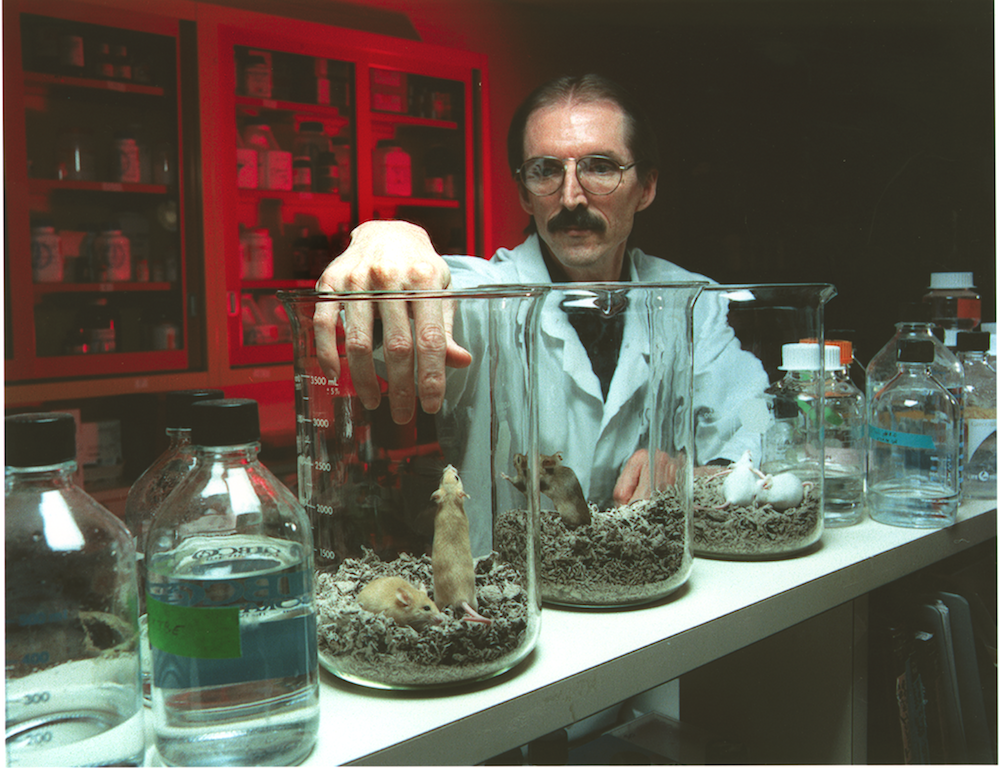
1993
Cancer and heart disease treatment
ORNL develops the rhenium-188 isotope generator to treat cancer-induced bone pain and arthritis and prevent the buildup of smooth muscle cells in coronary arteries after balloon angioplasty.
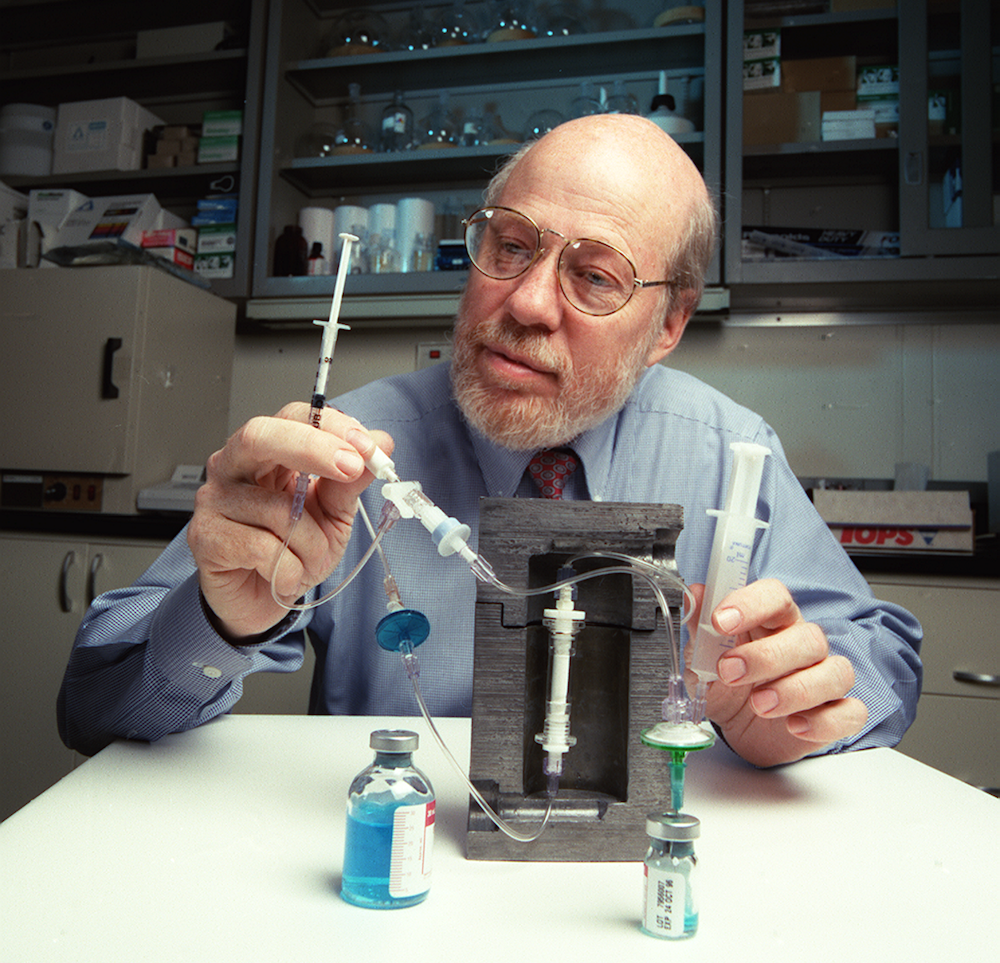
1994
Clifford Shull wins Nobel Prize
Clifford Shull wins half of the 1994 Nobel Prize in Physics for research he conducted with the late Ernest Wollan leading to neutron scattering technology that determines where atoms are in a crystal. Today, neutron scattering is used in reactors worldwide to probe the structure and dynamics of materials, leading to the development of improved materials and technologies.
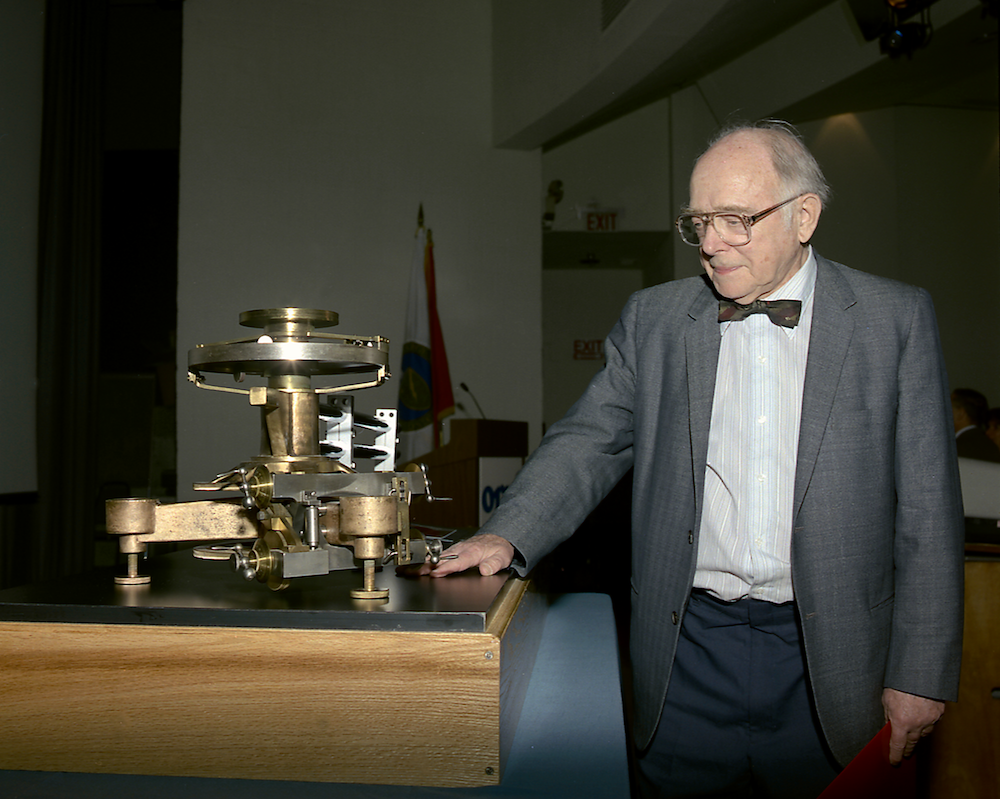
1994
Forensics discovery
Analytical chemist Michelle Buchanan works with law enforcement to understand that children's fingerprints contain more volatile chemicals than adults' and, therefore, disappear more quickly than the fingerprints of adults in crime scenes. The findings are significant revelations with both crime-solving and medical diagnostic applications.
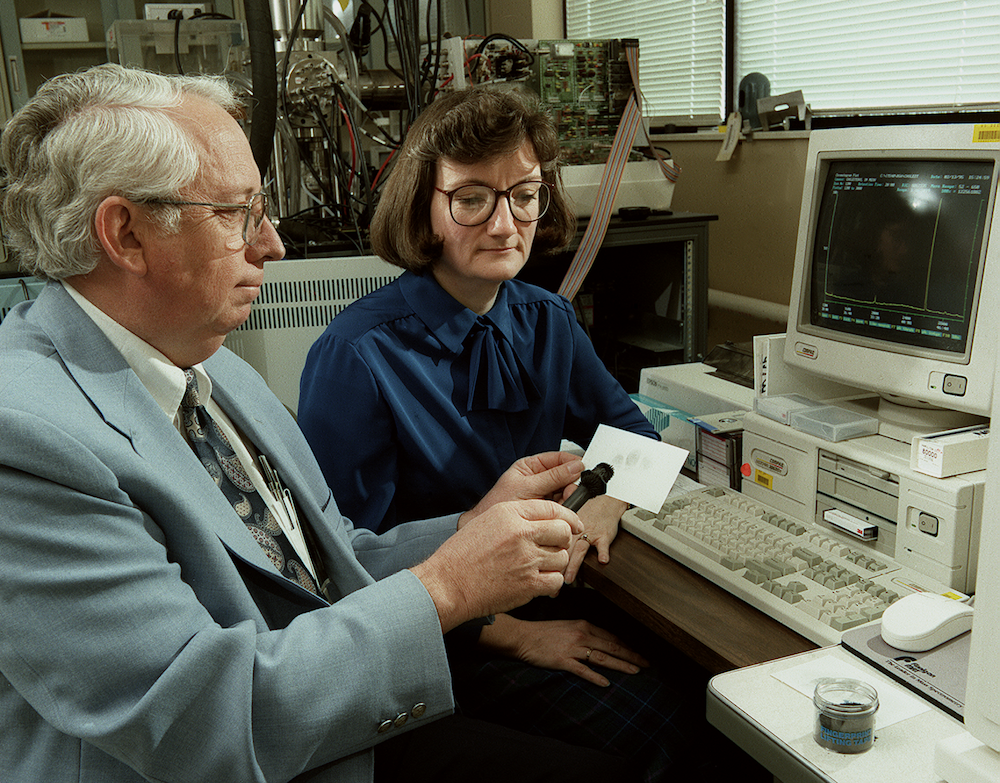
1994
Lab on a chip
The "lab on a chip" is invented and used to help diagnose diseases and provide a quick and cheap method for DNA sequencing.
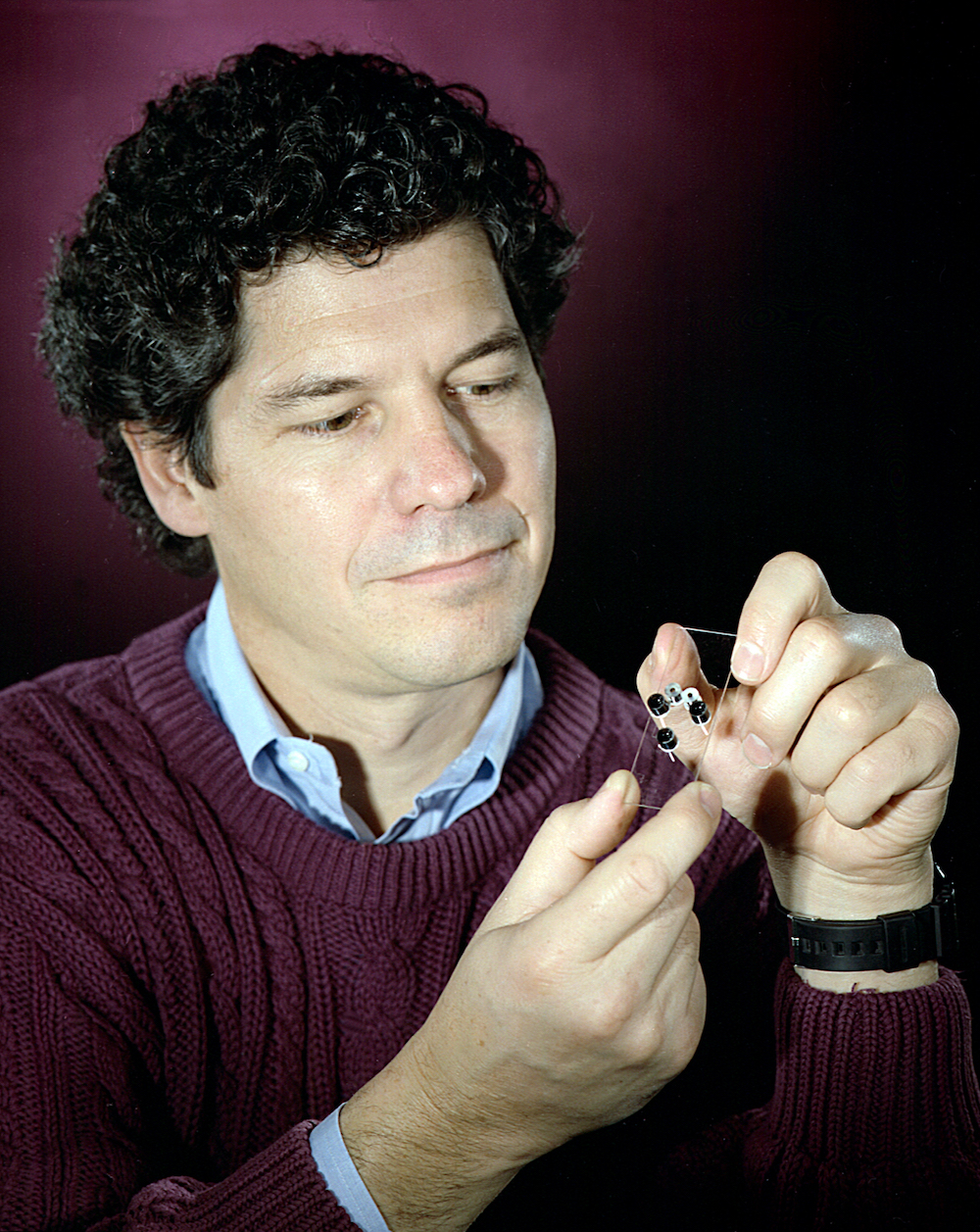
1995
Superconducting cables
ORNL researchers develop the rolling assisted, biaxially textured substrates (RABiTS) technology for high-temperature superconducting cables, which can conduct five times as much electric current as copper cable of the same size. This technology cuts electrical transmission losses in half from 8 percent to 4 percent.
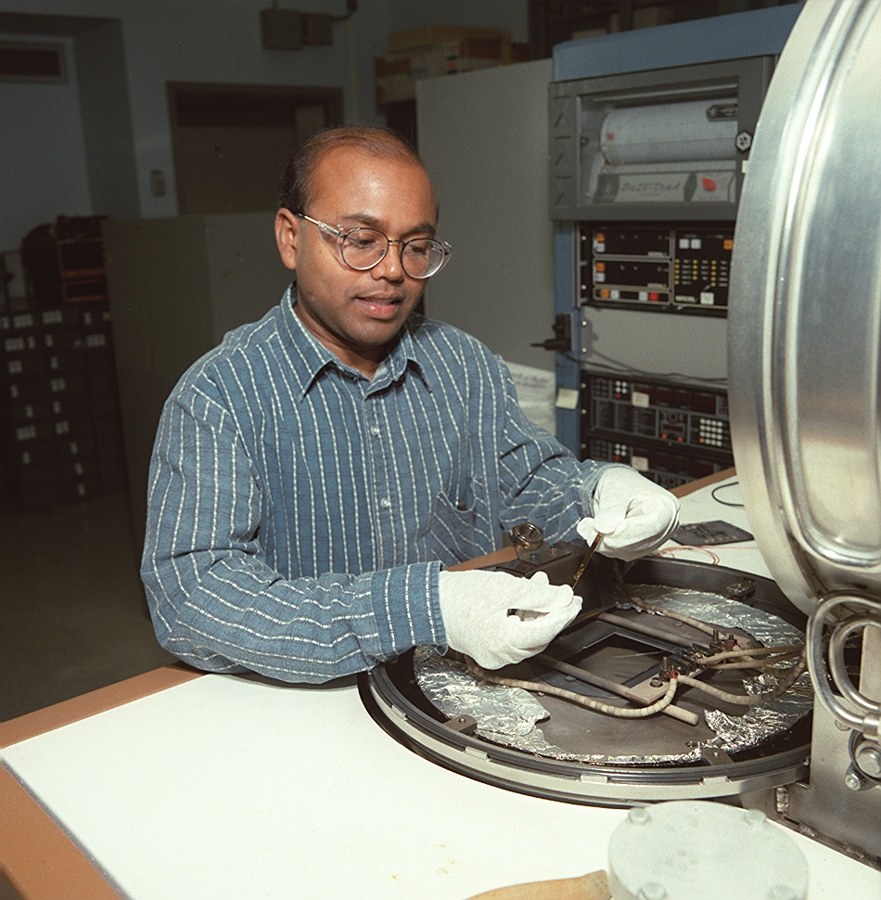
1995
Intel Paragon, world's fastest supercomputer
The Intel Paragon supercomputer, the world's fastest at the time, begins operations at ORNL. The Paragon is the laboratory's first parallel computer, which is a new type of computer that puts many processors together to solve scientific problems faster.
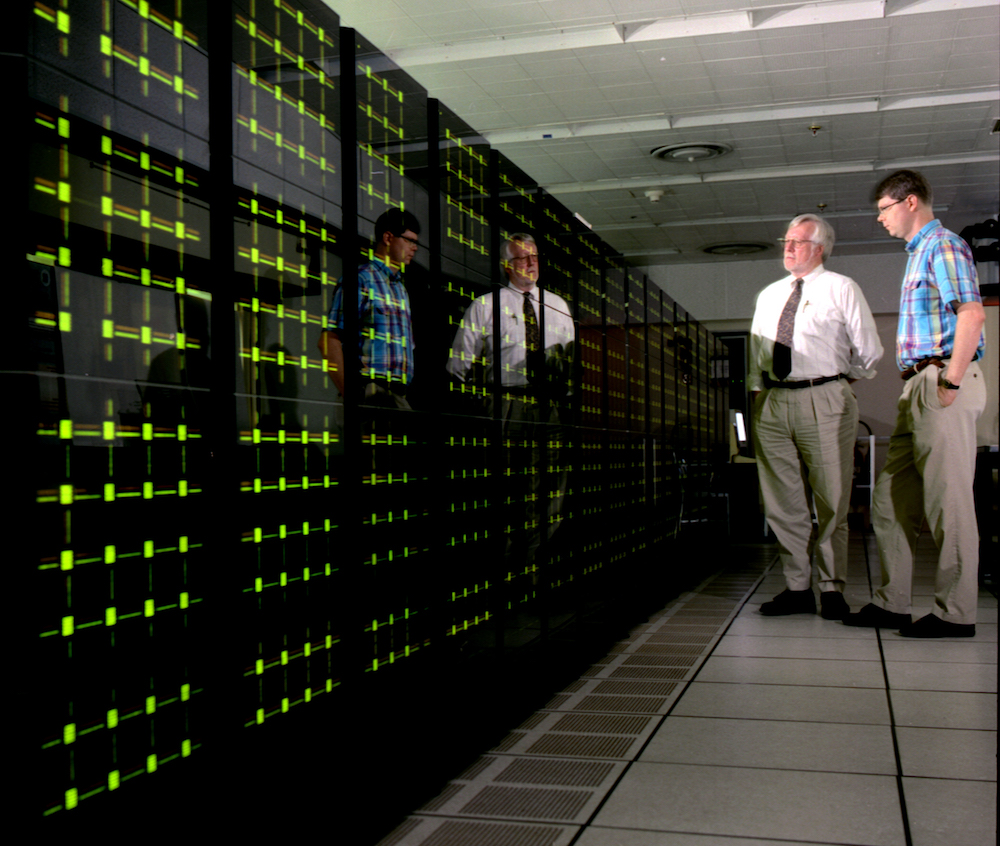
1997
Vehicle crash modeling
Thomas Zacharia and Srdjan Simunovic lead a computational crash modeling project that is a stimulus to growing ORNL's capabilities in high-performance computing. In the study, researchers develop a simulation that tests the safety of new design concepts and material strength for the National Highway Traffic Safety Administration.
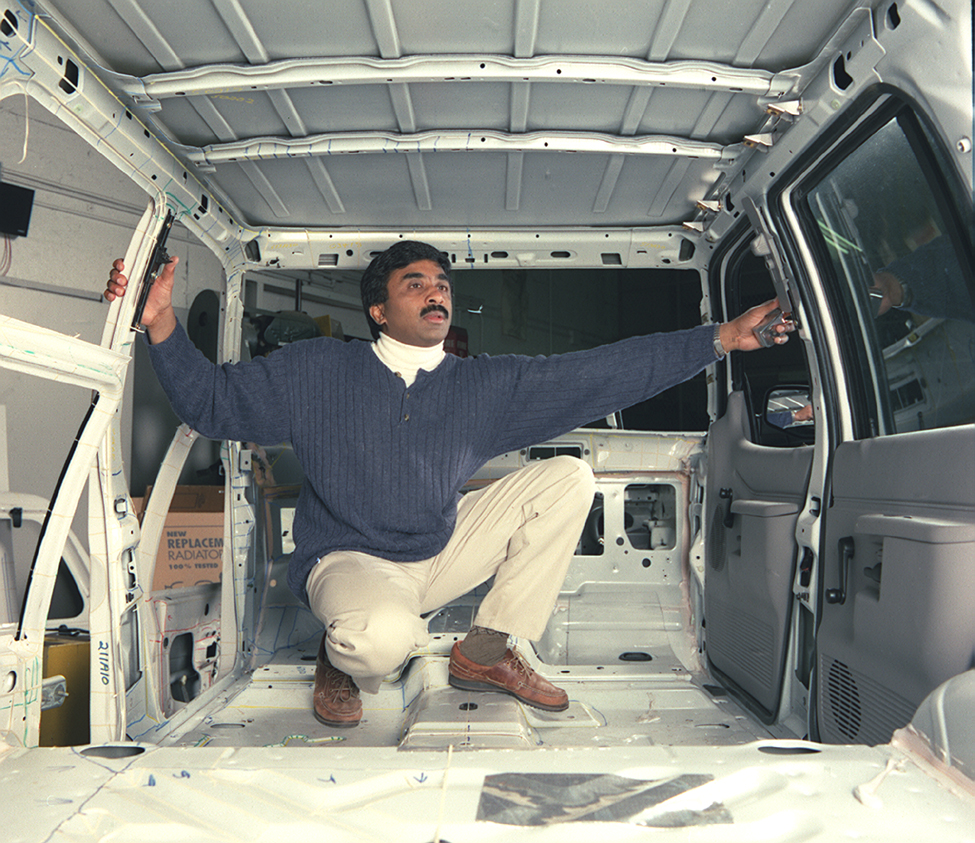
1997
Actinium-225
ORNL sends its first shipment of actinium-225, a promising medical isotope used in targeted alpha therapy for treating cancers, to the National Institutes of Health. ORNL remains a major supplier of Ac-225.
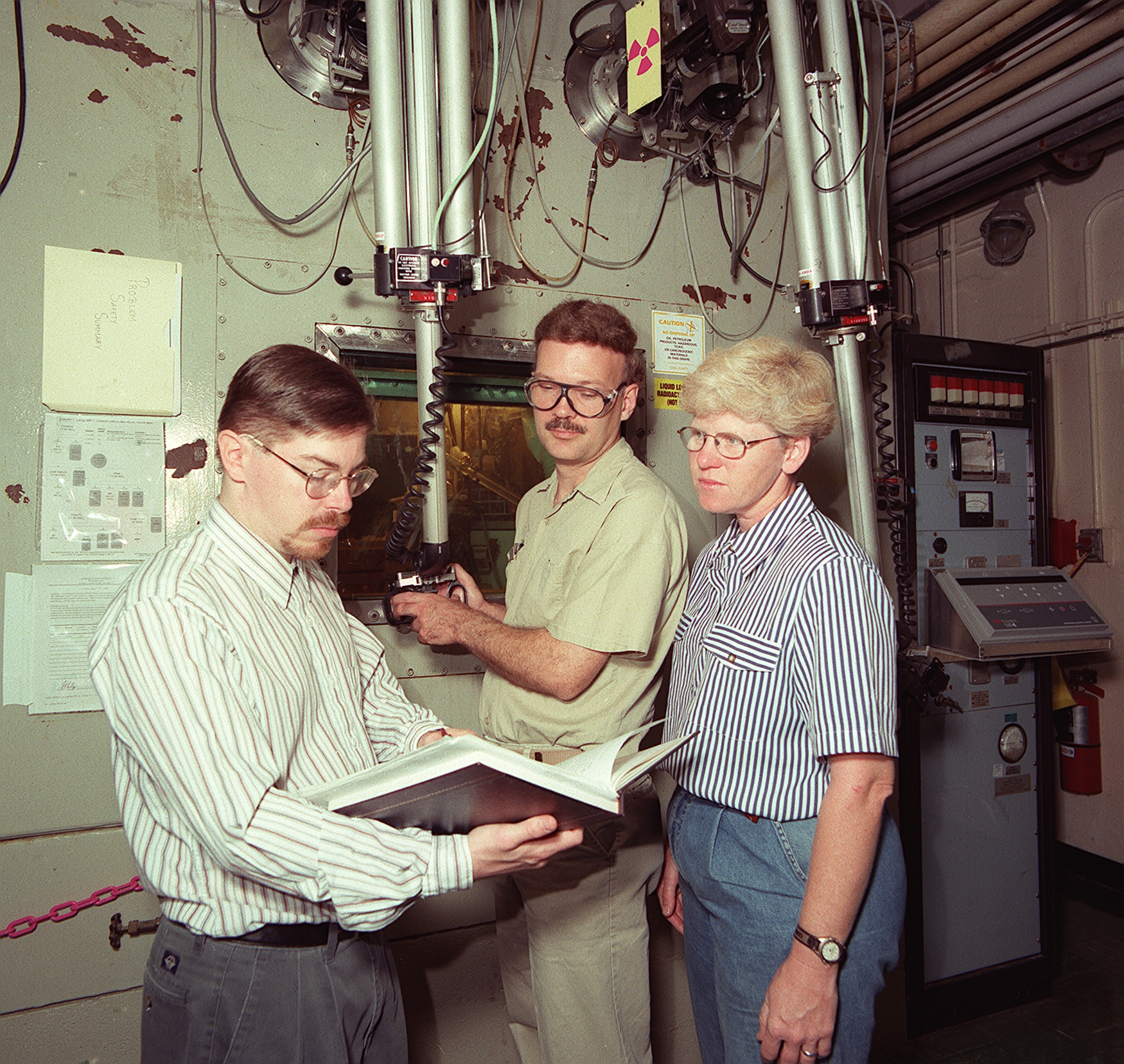
1998
MicroCAT scanner
ORNL researchers develop the MicroCAT scanner, an X-ray computed tomography system for mapping internal defects and organ changes in experimental mice.
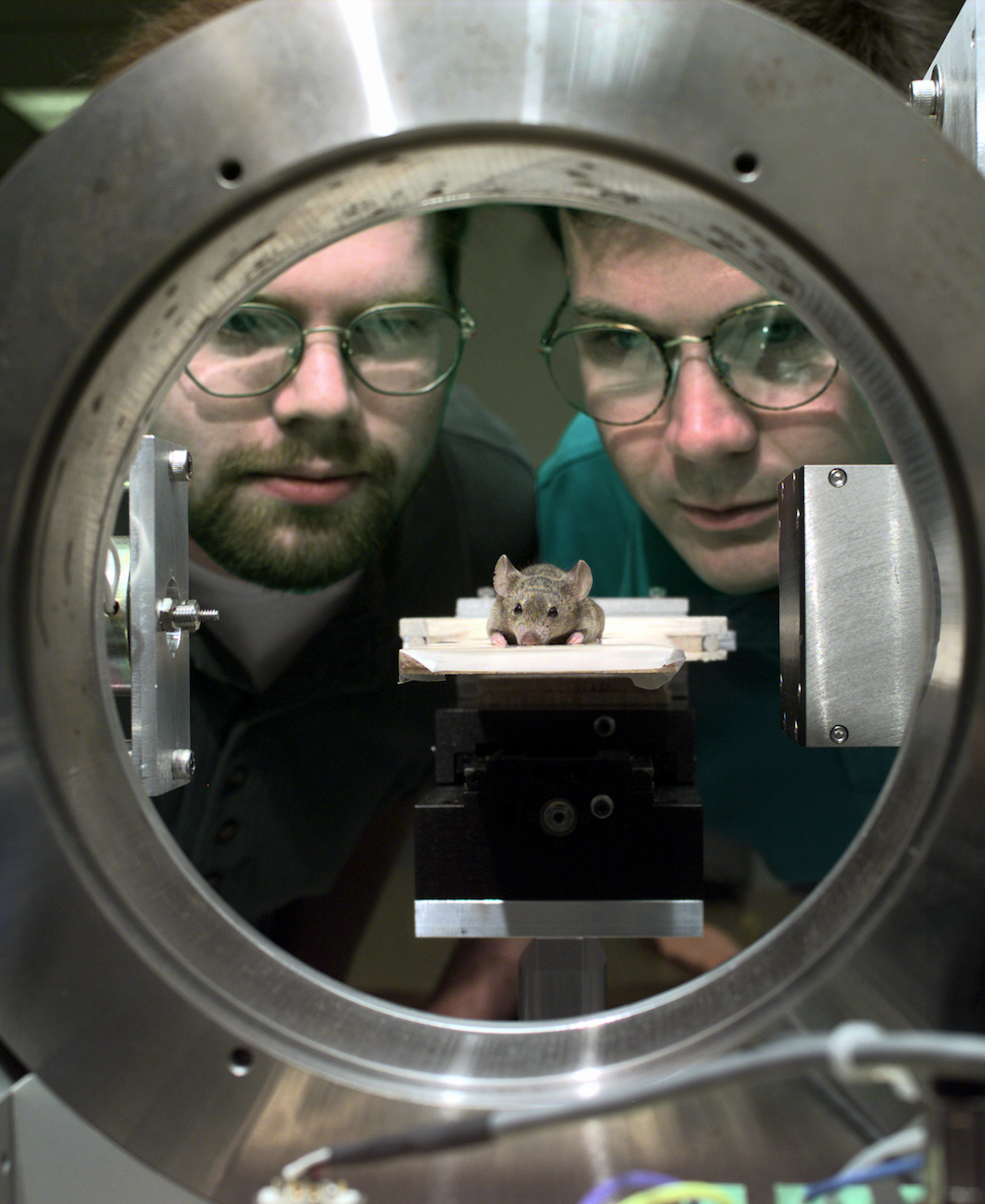
1999
Whole-building energy performance
The Environmental Protection Agency releases its first Energy Star whole-building energy performance rating tool based on the benchmarking methodology pioneered at ORNL.
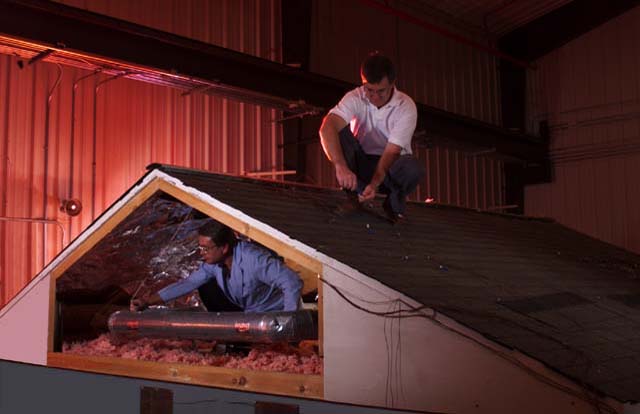
1999
Consumer information and savings
ORNL and DOE introduce fueleconomy.gov, offering consumers accurate fuel economy estimates for vehicles, fuel-saving tips, easy-to-use tools, and more. ORNL manages the site for DOE, and it remains in the top 1 percent of all federal government websites. Garnering 400 million user sessions by 2017, the site has saved consumers an estimated 1 billion gallons of petroleum since it was established.

1999
Monitoring nuclear threats
The Highly Enriched Uranium Purchase Agreement of 1993 between the US and Russia requires Russian facilities to supply low-enriched uranium to the US from down-blended weapons-grade uranium. ORNL develops a fissile mass flow monitor that can continuously monitor the flow of fission fragments in the fuel flow to confirm the transparency of the Russian processing plants.
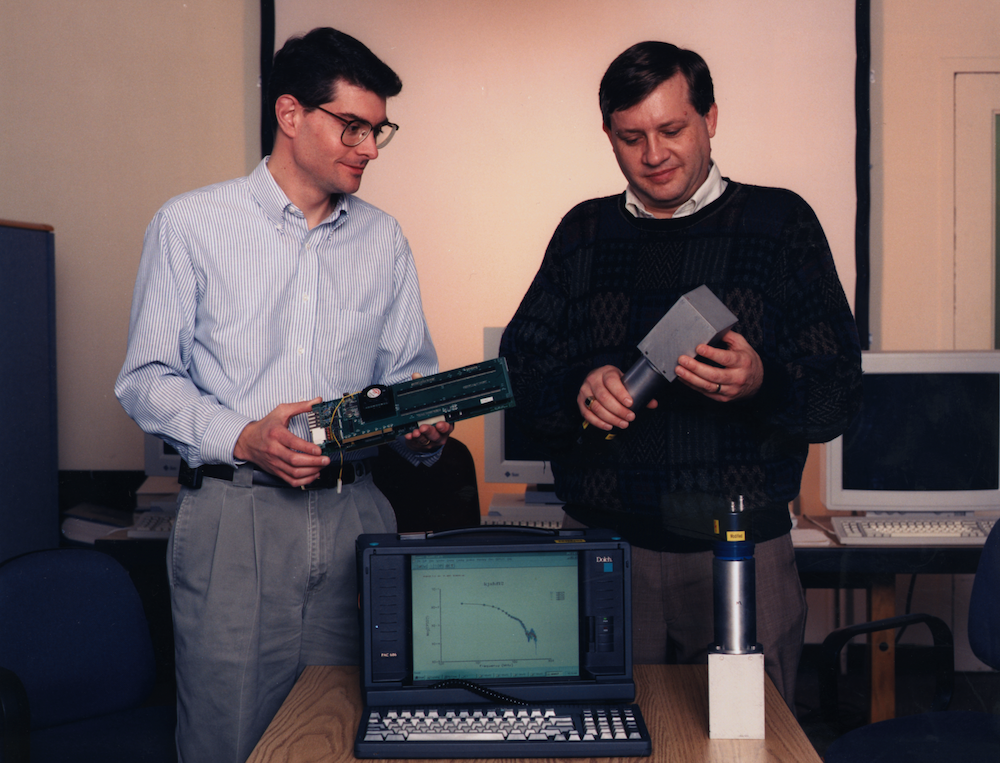
2000 - 2018
Global Leader
In the 21st century, ORNL continues to solve global challenges in energy and security. The laboratory is home to top-tier resources in the world for computing, neutron sciences, additive manufacturing, advanced materials, and clean energy technologies. Scientists travel from all over the globe to conduct research here, and ORNL builds strong relationships with industry and academia to support a new generation of scientists and engineers and advance the development of new technologies.
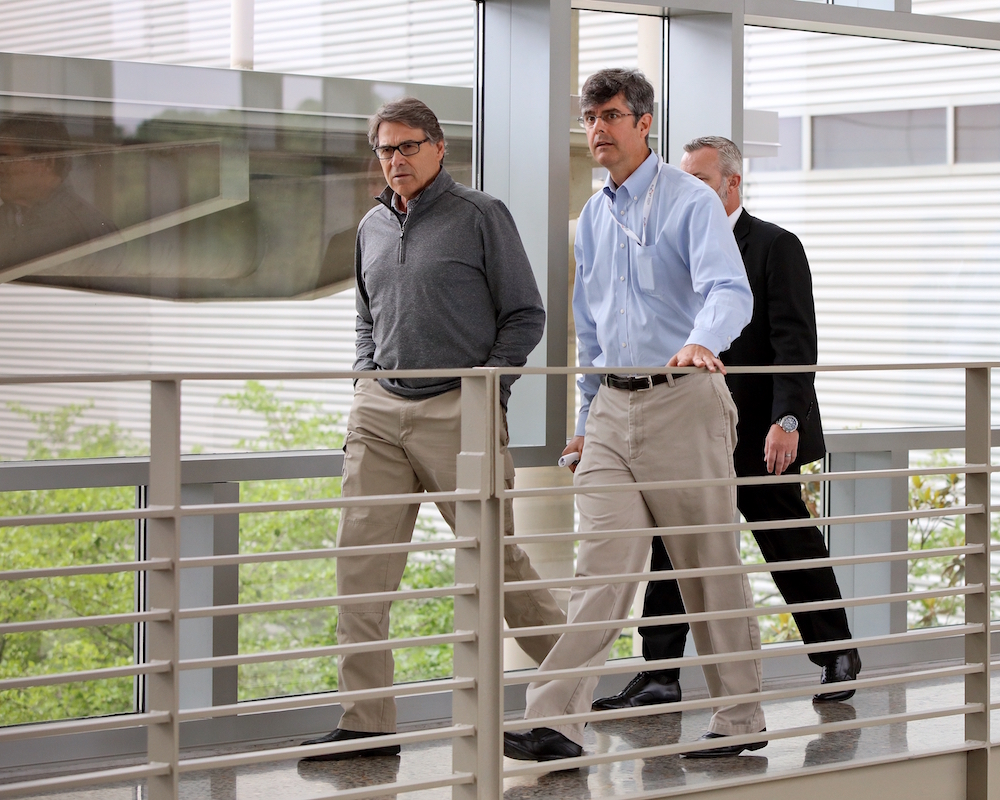
2000
National Transportation Research Center
A joint effort involving DOE, Development Corporation of Knox County, ORNL, and the University of Tennessee, the National Transportation Research Center opens, providing access to unique facilities for scientists conducting research and development for the transportation industry and related fields.

2000
Breaking the teraflop barrier
The expansion of ORNL’s IBM RS/6000 SP supercomputer pushes it past the 1 trillion calculations per second (1 teraflop) mark. Eagle and the Compaq AlphaServer SC system Falcon give ORNL more than 1.5 teraflops combined computing speed.
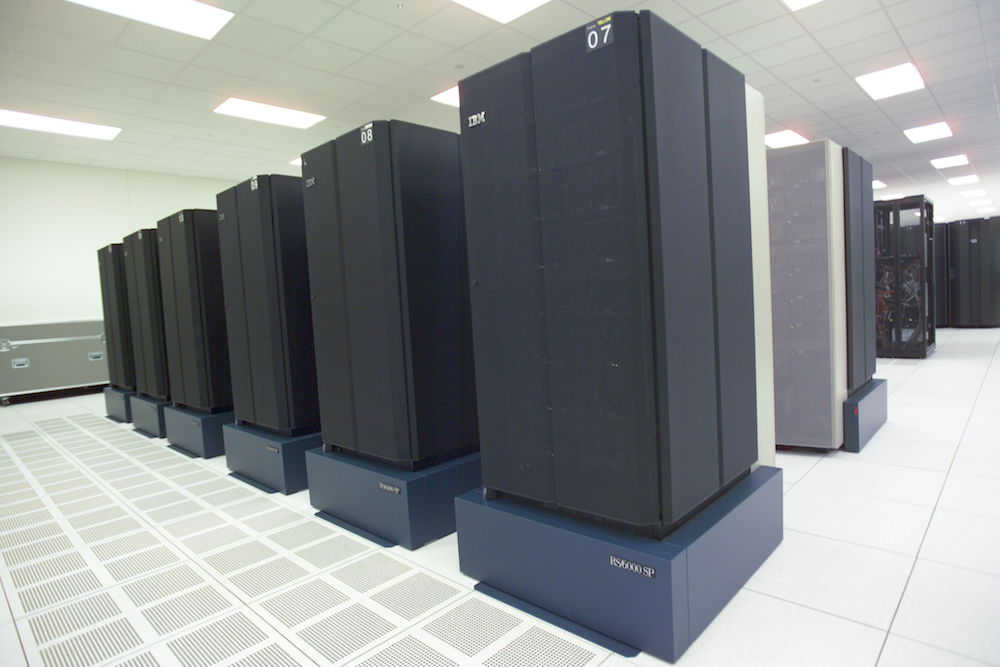
2000
Clean and efficient diesel
ORNL coleads research to determine the effects of diesel fuel sulfur on emissions and emissions control technology. The Environmental Protection Agency cites the research in a 2000 ruling that lowers diesel fuel sulfur content to a maximum of 15 ppm. This research affects every gallon of highway diesel fuel now sold in the US, and enables cleaner and more efficient diesel engines for cars and trucks.
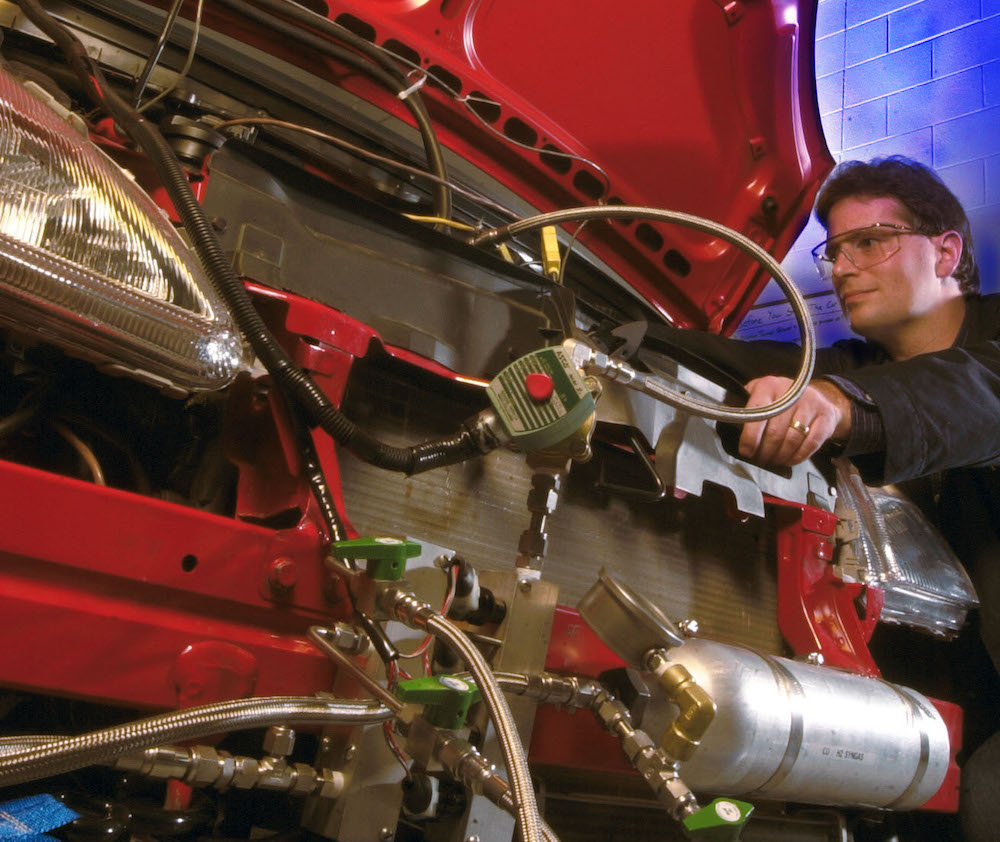
2001
Human gene-finding tool
The GRAIL gene-finding tool is used in Science and Nature's landmark papers on the human genome in 2001. Frank Larimer, Jay Snoddy, and Ed Uberbacher are listed as coauthors on the lead paper. The GRAIL tool, developed by Uberbacher and Richard Mural, is used for the work and is mentioned on Science’s human genome program timeline.
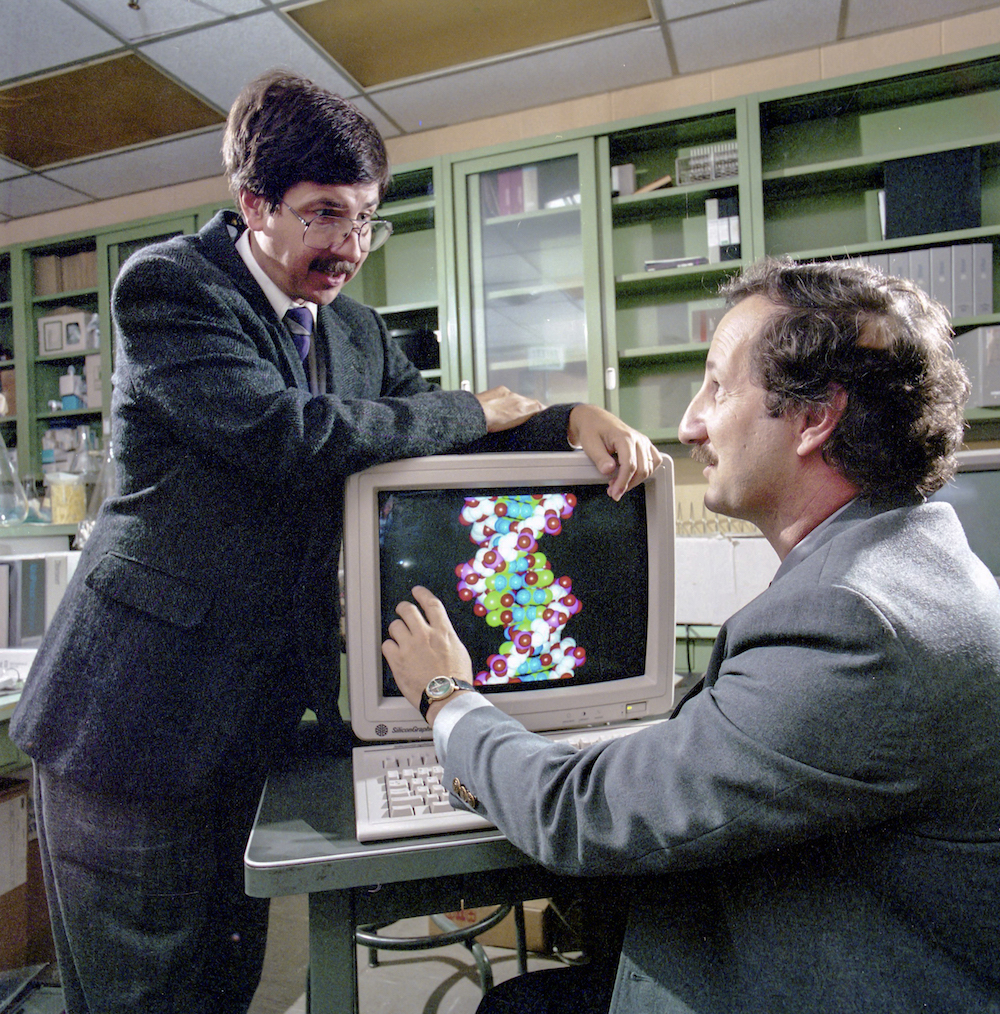
2002
Energy-efficient Habitat for Humanity houses
An effort to construct up to 20 local Habitat for Humanity houses with state-of-the-art energy efficient building technologies begins at Lenoir City's Harmony Heights subdivision. The houses will showcase different technologies and provide living laboratories for developing integrated building systems that lead toward net-zero energy houses of all types.
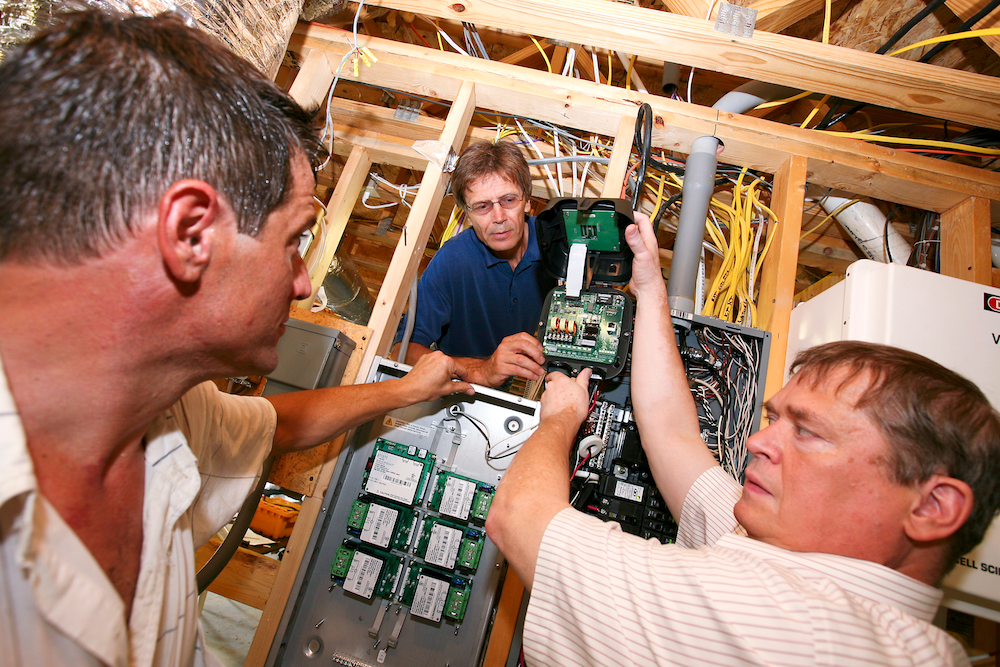
2003
Understanding supernovae
ORNL researchers use the laboratory's Phoenix supercomputer to study core-collapse supernovae and explore the standing accretion shock instability (SASI) mechanism that triggers the explosion and fusion chain reaction. The SASI simulation greatly improves upon previous one-dimensional supernovae models and simulates the "sloshing" of stellar material in exploding stars in three dimensions.
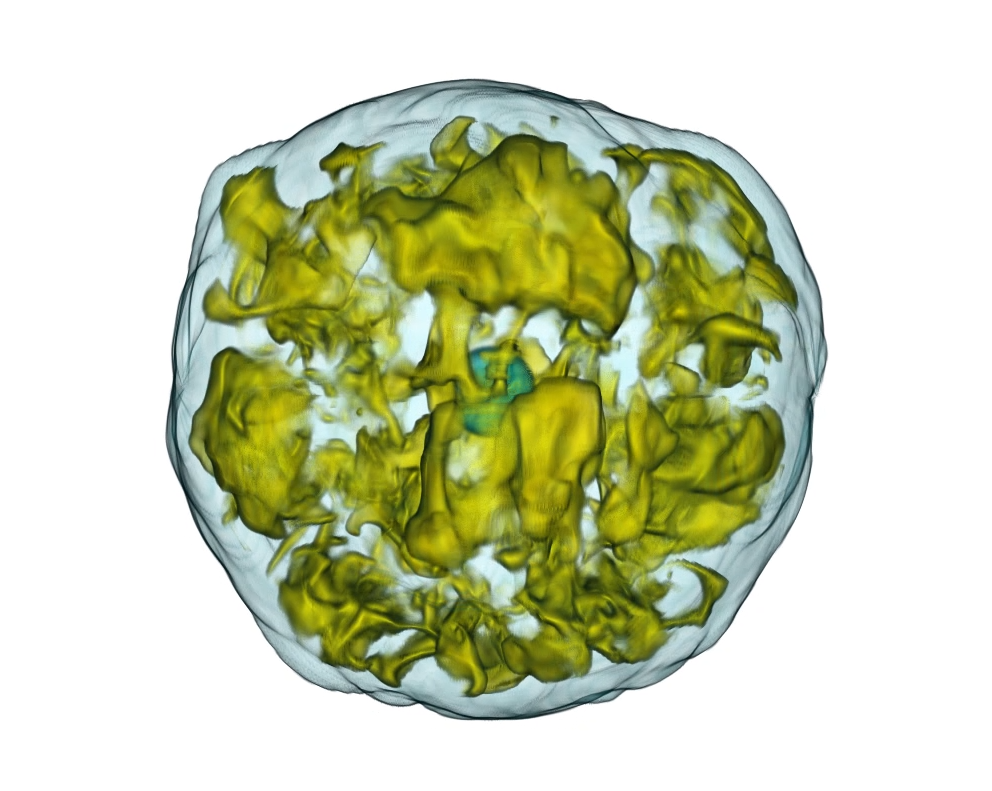
2004
Oak Ridge Leadership Computing Facility
DOE’s High-End Computing Revitalization Act of 2004 authorizes America’s Leadership Computing Facilities. The Oak Ridge Leadership Computing Facility (OLCF) is the first, established at ORNL with the mission of building a supercomputer 100 times more powerful than leading systems. DOE announces in May 2004 that the OLCF will lead the project to build the world’s most powerful supercomputer.
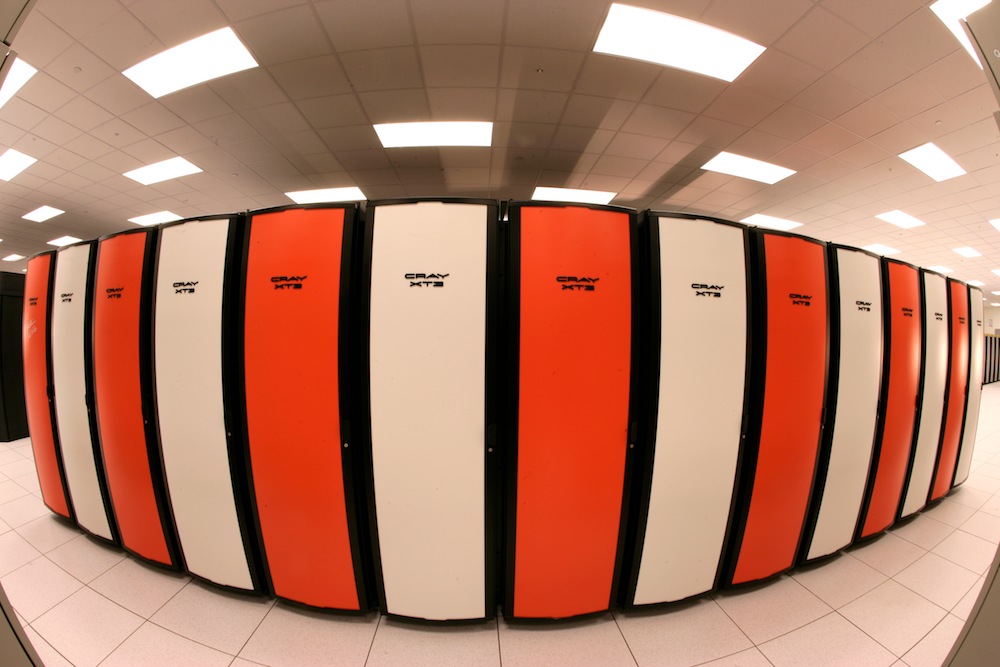
2004
Nanoscale access to living cells
Researchers develop a nanoscale technology for investigating biomolecular processes in single living cells. The new technology enables researchers to monitor and study cellular signaling networks, including the first observation of programmed cell death in a single living cell.
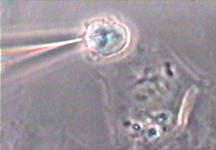
2004
George W. Bush
President George W. Bush visits ORNL on July 12, 2004, and delivers a homeland security address in Wigner Auditorium.

2004
NASA's Cassini spacecraft
Powered by radioisotope heat generators equipped with ORNL cladding technology, NASA's Cassini spacecraft arrives in Saturn's orbit in July 2004. Cassini operates perfectly up to its programmed crash into Saturn in September 2017.

2004
Sequencing of the Populus genome
ORNL researchers and collaborators at the Joint Genome Institute and academic institutions around the world complete sequencing of the Populus genome in 2004. Completion of the sequencing and assembly of the poplar genome, is significant because it will allow scientists to lay out a molecular roadmap that shows how trees grow.
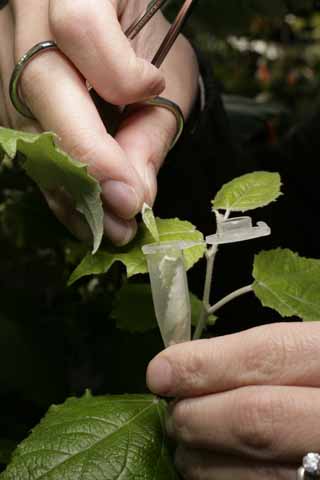
2004
Indian Ocean tsunami relief
LandScan, an ORNL-developed global population database that shows geographical distribution of population at 1-kilometer resolution, is used by relief workers following the Indian Ocean tsunami on December 26, 2004. The system allows them to easily and quickly determine the locations of potential victims who would otherwise be cut off from communication.
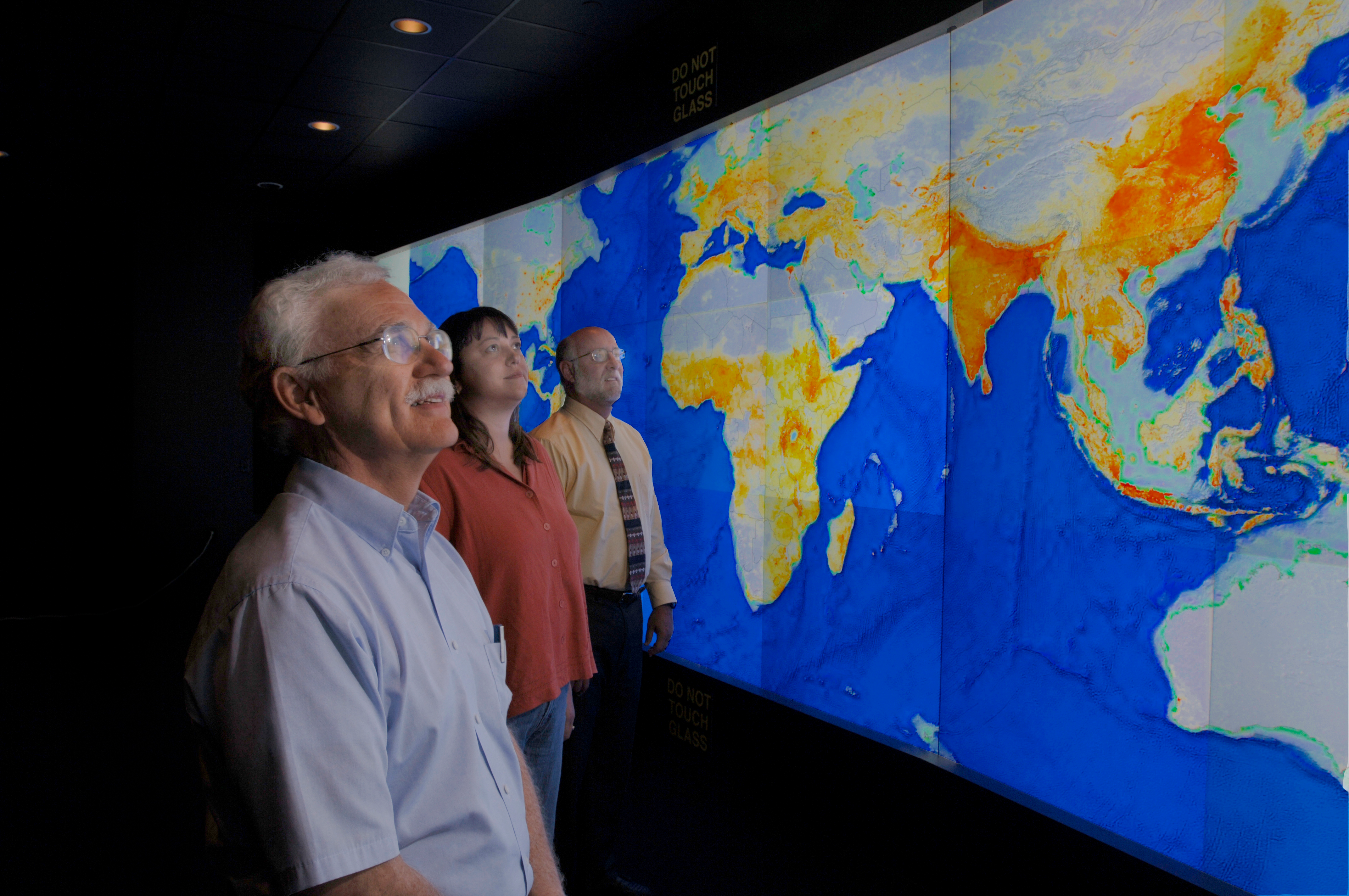
2004
World records in microscopy
The journal Science reports that ORNL uses an aberration-corrected Z-contrast scanning transmission electron microscope to push back the barrier of how small we can see to a record of atom scale 0.6 angstrom. The record beats ORNL's previous world record of 0.7 angstrom and heralds a giant leap forward in nanoscience that enables a new understanding of the properties and behaviors of materials.

2005
PocoFoam for NASA satellite
NASA satellite XSS-11 launches on April 11, 2005, featuring a radiator made of ORNL-developed PocoFoam. The carbon-based material was discovered by ORNL researchers and licensed for development. PocoFoam has superior thermal transfer properties and is lightweight, making it ideal for space applications.
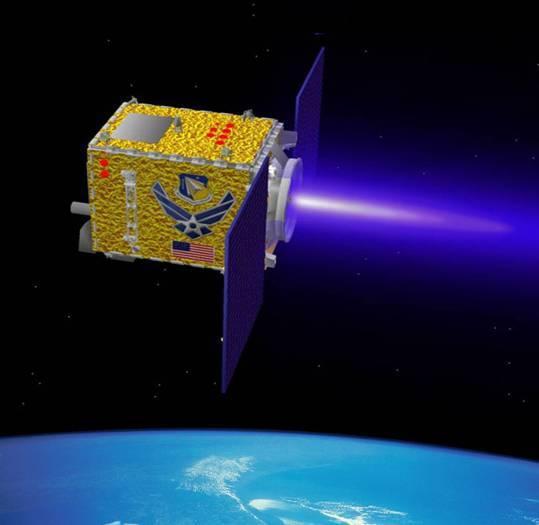
2005
Billion-Ton Report
In April 2005, ORNL and DOE publish the Billion-Ton Report, confirming that America has the potential to sustainably produce at least 1 billion dry tons of nonfood biomass resources annually by 2040. Updates are published in 2011 and 2016.
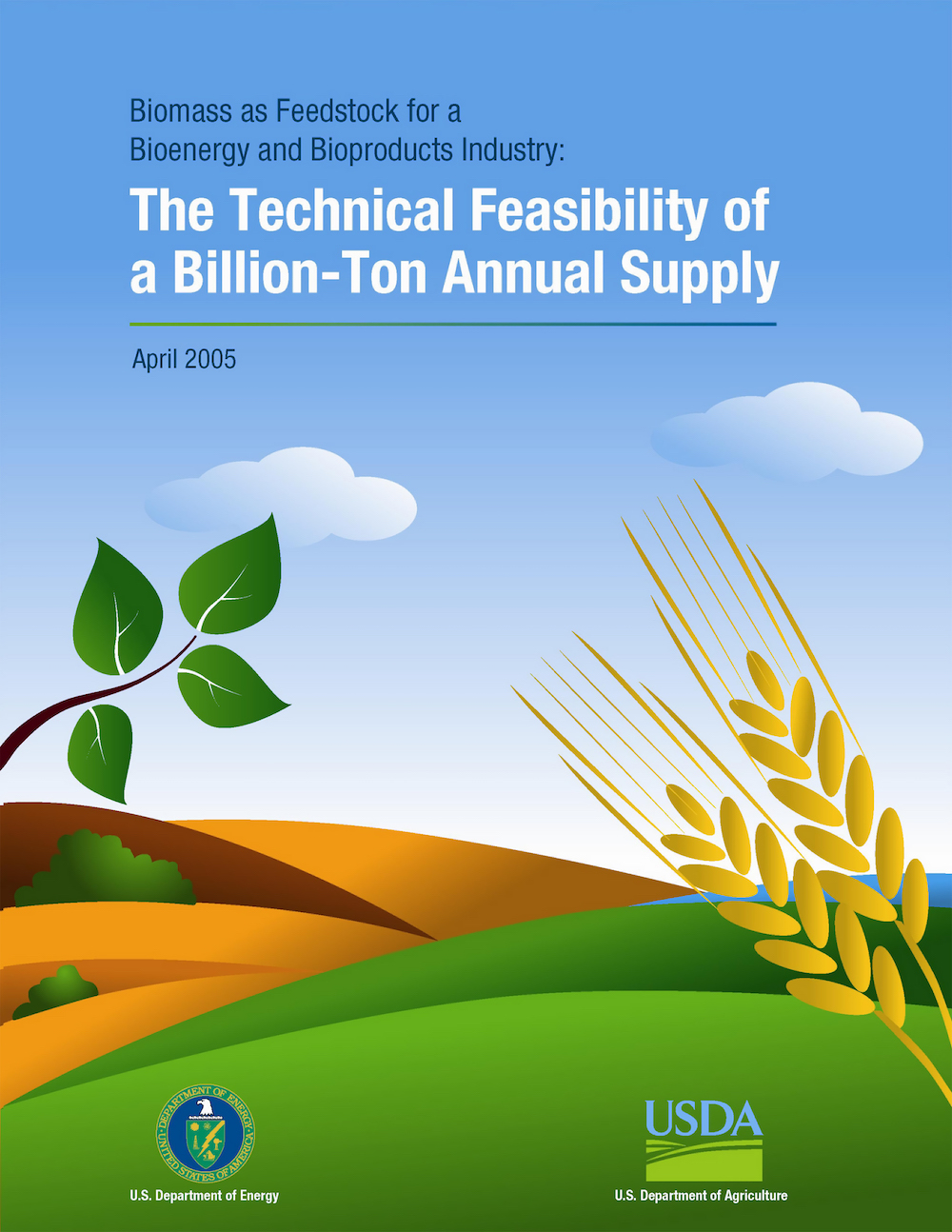
2006
Spallation Neutron Source
The Spallation Neutron Source, a DOE user facility, becomes operational on April 28, 2006, and sends first proton beams to the target, officially becoming a neutron source on time, on budget, on scope, and on target.
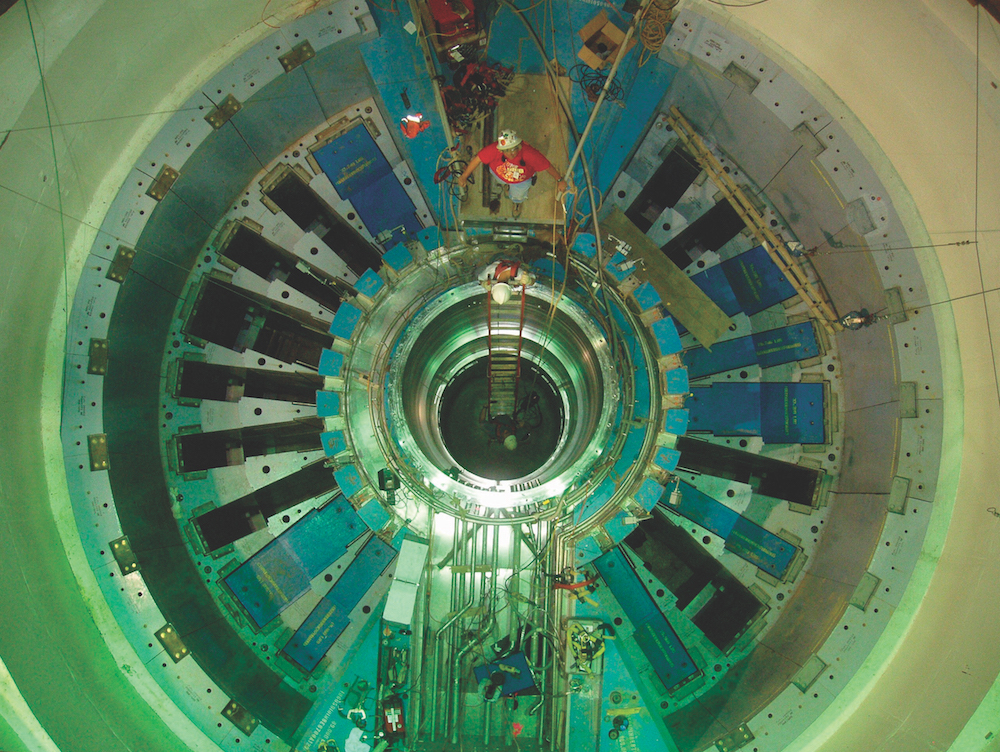
2006
Center for Nanophase Materials Sciences
The Center for Nanophase Materials Sciences, a DOE Nanoscale Science Research Center, provides state-of-the-art tools for imaging, modeling and simulation, characterization, synthesis, and fabrication for nanoscience projects.
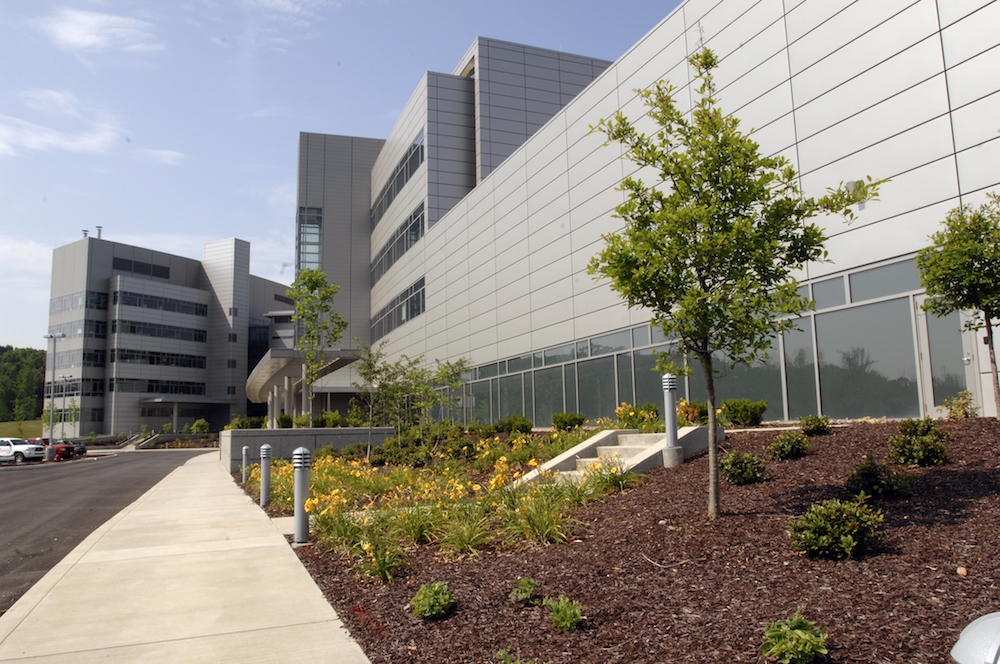
2006
US ITER Project Office
The US ITER Project Office opens at ORNL and is responsible for project management of US activities to support construction of the international fusion research facility.
2006
Atomic force microscopy development
ORNL researchers invent a new method of band excitation atomic force microscopy, dramatically enhancing the accuracy and speed of atomic force microscopy.
2007
Oak Ridge Electron Linear Accelerator
The 38-year-old Oak Ridge Electron Linear Accelerator is recognized as a Nuclear Historic Landmark for its contributions to more than 550 papers and reports over hundreds of thousands of hours of operation.
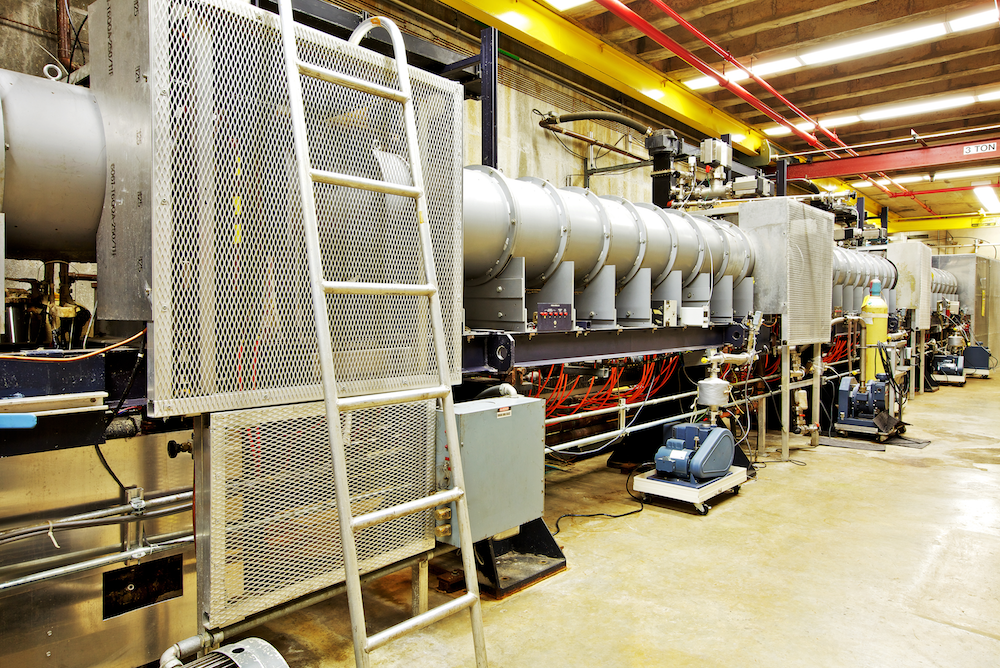
2007
Tackling emissions
ORNL and Cummins, Inc., develop the spatially resolved capillary inlet mass spectrometer (SpaciMS). The diagnostic tool is used to characterize exhaust constituents in vehicle catalysts and helps accelerate light-truck diesel development and deployment in a leading consumer pickup truck that meets 2010 emissions standards in 2007. SpaciMS continues to be applied in today’s engine technologies.
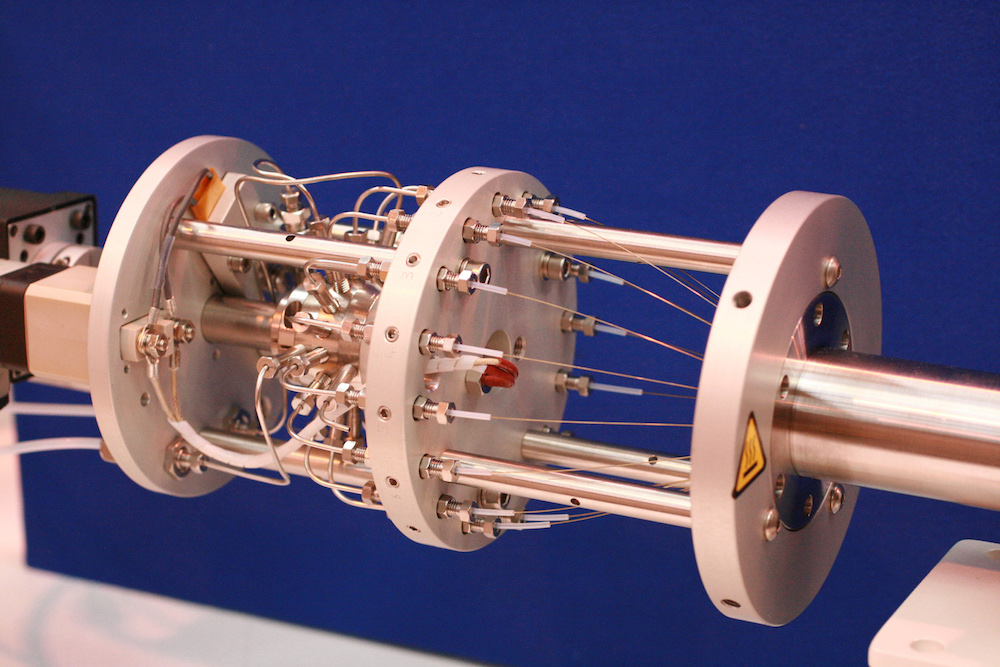
2007
National Institute for Computational Sciences
The University of Tennessee and ORNL partner to form the National Institute for Computational Sciences (NICS), which provides researchers from around the world with high-performance computing resources.
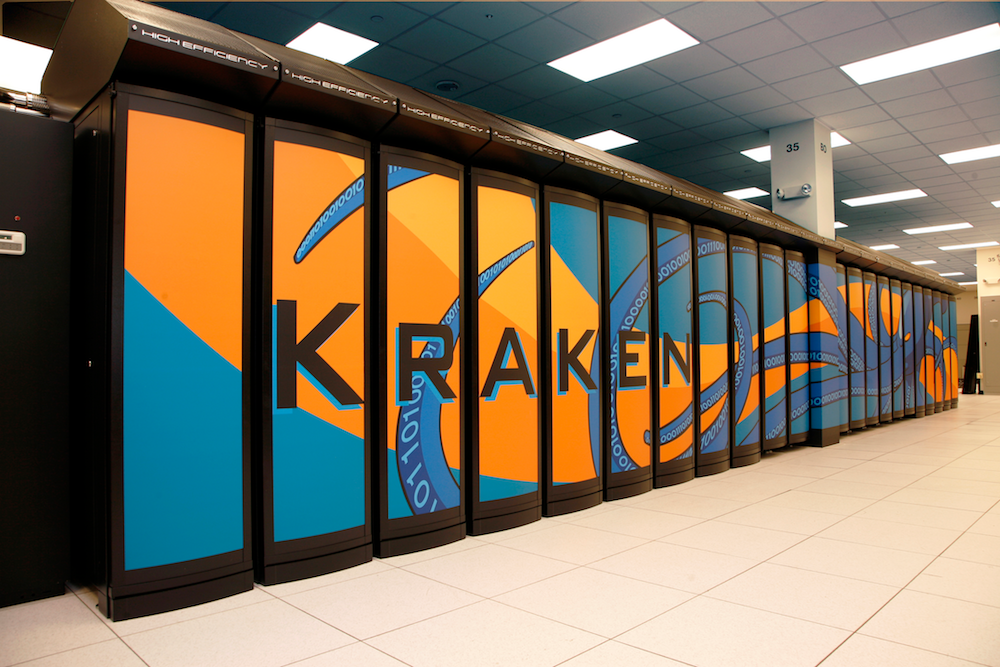
2007
CF8C-Plus steel
CF8C-Plus steel, developed through a cooperative research and development agreement between ORNL and Caterpillar, is commercialized by Caterpillar in 2007 for regeneration systems for diesel particulate filters, and 550 tons is used in more than 35,000 heavy-duty highway diesel engines.
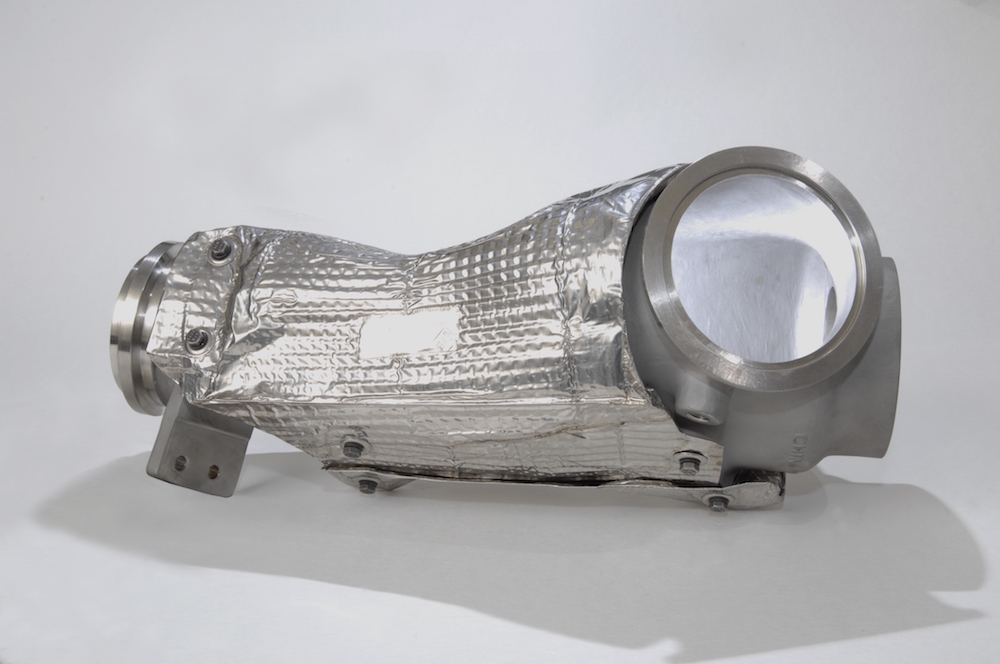
2008
Guinness World Record
The Spallation Neutron Source (SNS) makes the Guinness Book of World Records as the world's most powerful pulsed neutron source. The SNS ramps up beam power to more than 300 kilowatts, producing 4.8 x 10e16 neutrons per second.

2008
Removing Iraq's radioactive materials
ORNL’s Mobile Uranium Facility team (informally dubbed the Uranium National Guard) deploys to Iraq a second time to assist the US military in removing radioactive materials.
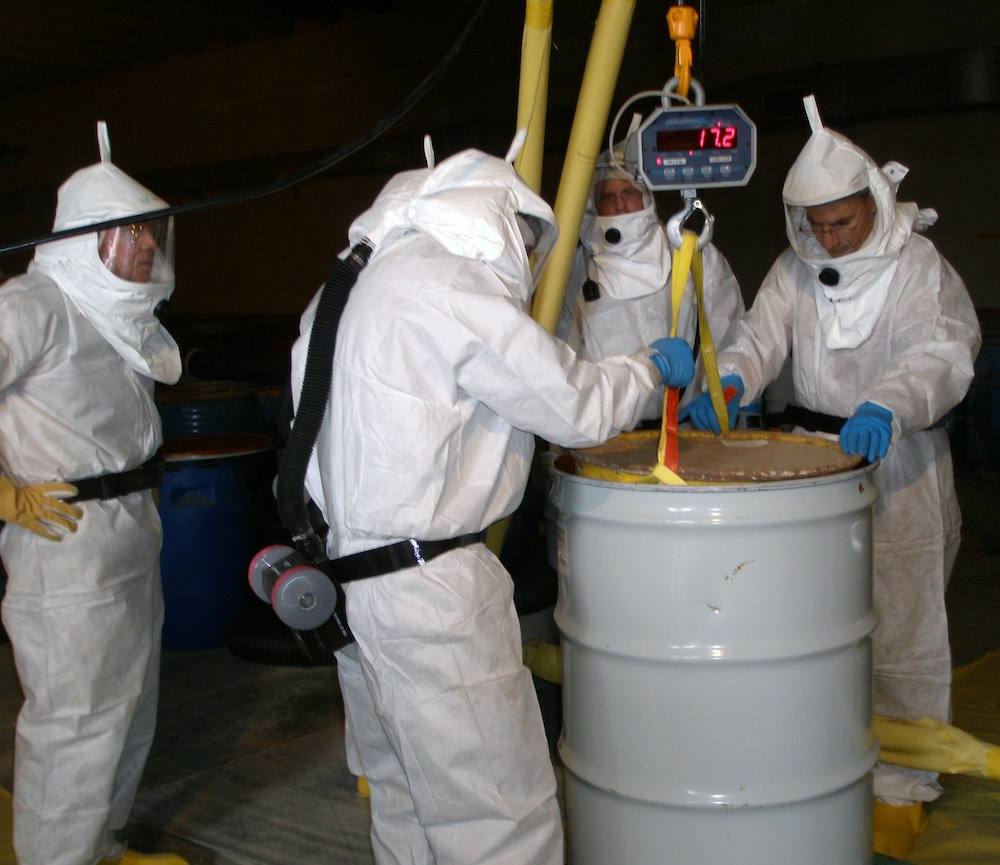
2009
Tracking neurons to predict and prevent disease
Researchers at ORNL and St. Jude Children's Research Hospital study how developing nerve cells may hold a key to predicting and preventing cancer, Alzheimer's, Parkinson's disease, etc.
2009
Climate Change Science Institute
The Climate Change Science Institute is formed to integrate climate science activities across ORNL. Their findings are being used to improve the predictive capacity of Earth system models.
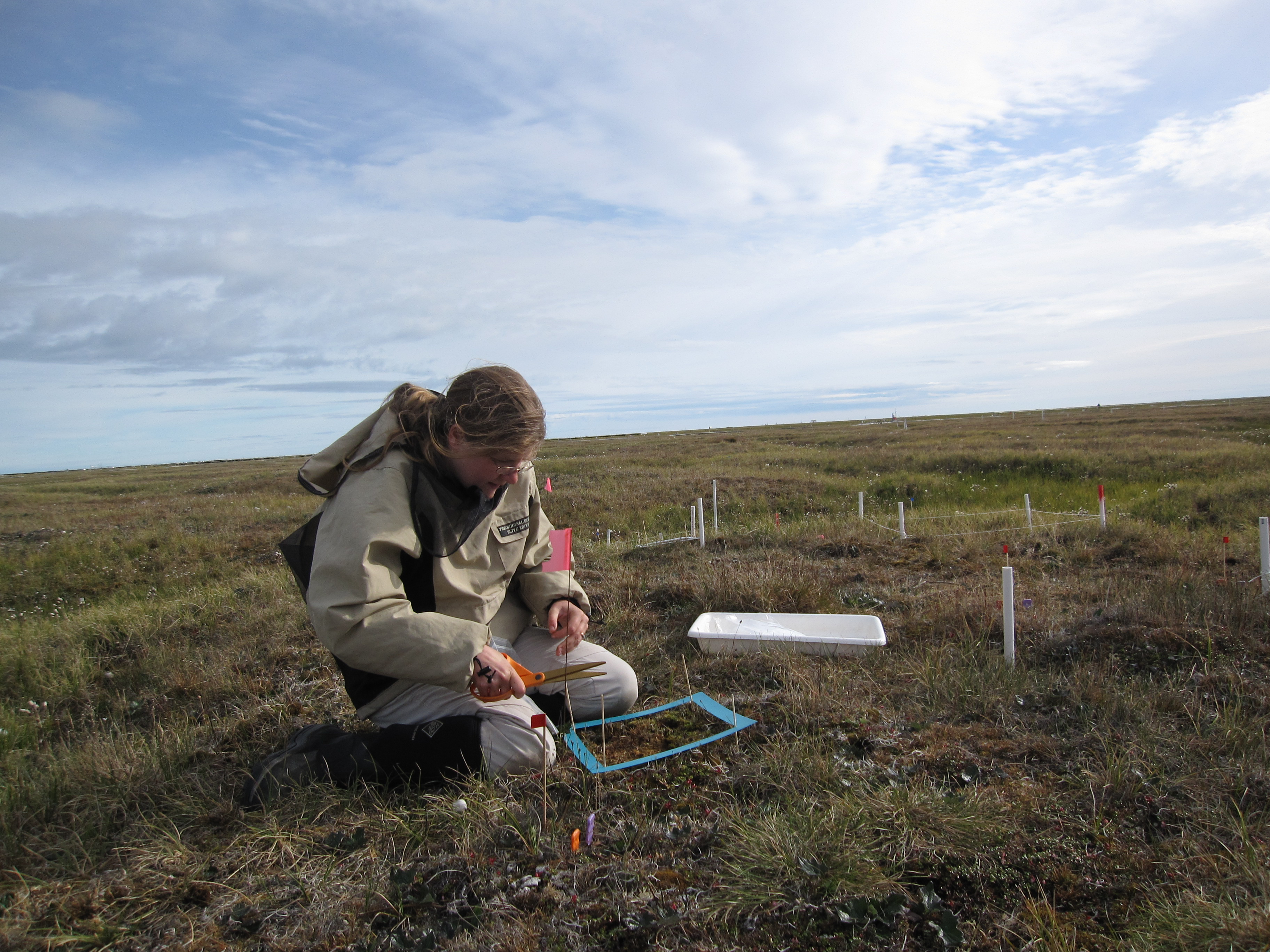
2009
Jaguar, world's most powerful supercomputer
Installed in 2008, the Jaguar supercomputer is named the world's most powerful computer (now at a peak performance of 1.759 petaflops). Supercomputer Kraken is named third most powerful in the TOP500 ranking.
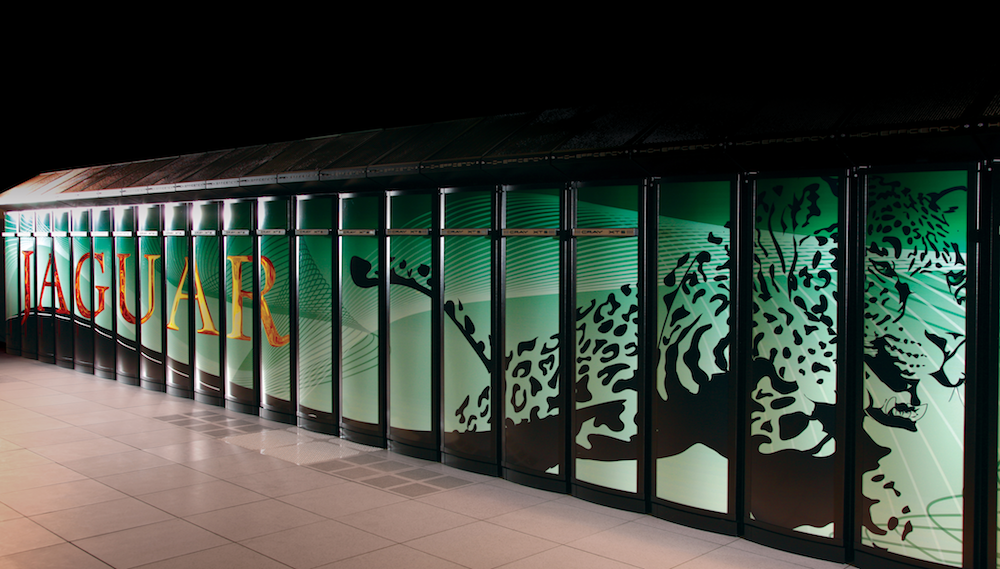
2009
Ethanol blends ruling
The Intermediate Ethanol Blends Test Program, a DOE-industry collaborative study co-led by ORNL, is referenced in a 2010 EPA ruling to allow 15% ethanol-blend gasoline (E15) in 2001 model cars and subsequent models. The 3-year study evaluates the effects of E15 and E20 fuels on the emissions and performance of vehicles and non-road engines, as well as infrastructure materials.
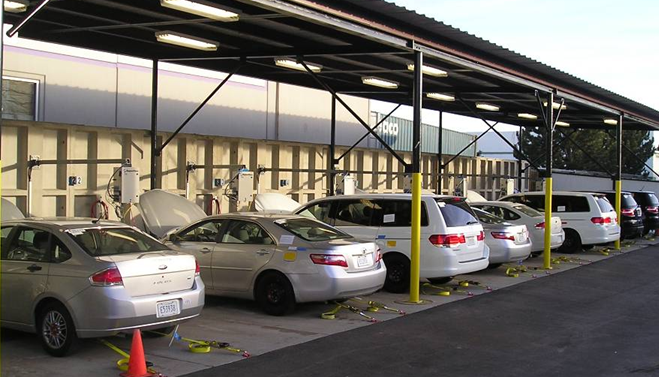
2010
First images of individual light atoms
Using the latest in aberration-corrected electron microscopy, ORNL researchers and colleagues obtain the first images that distinguish individual light atoms such as boron, carbon, nitrogen, and oxygen. The ORNL images are obtained with a Z-contrast scanning transmission electron microscope. Watch an ORNL researcher explain the first images that distinguish individual light atoms.
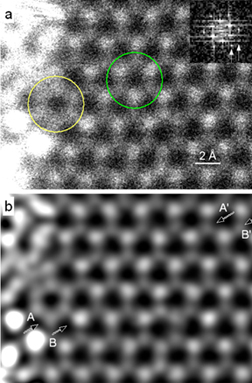
2010
Consortium for the Advanced Simulation of Light Water Reactors
ORNL hosts the DOE Consortium for the Advanced Simulation of Light Water Reactors (CASL) for developing advanced computing capabilities that serve as a virtual version of existing nuclear reactors. CASL provides modeling and simulation technology that can address light water reactor operational and safety performance.
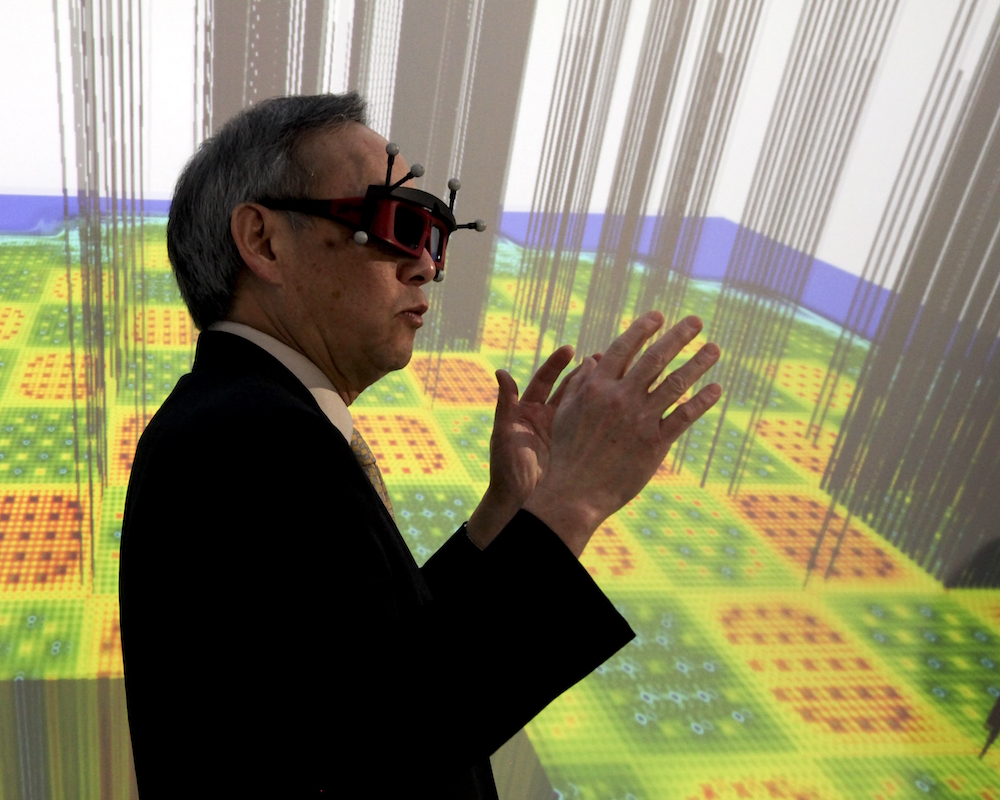
2010
Carbon graphite foam licensed
Carbon graphite foam technology is licensed to LED North America as a technology to help cool LED lamps, such as those used in streetlights and parking garages. In 2014, the University of Tennessee introduces the technology in Thompson-Boling Arena's lighting system.
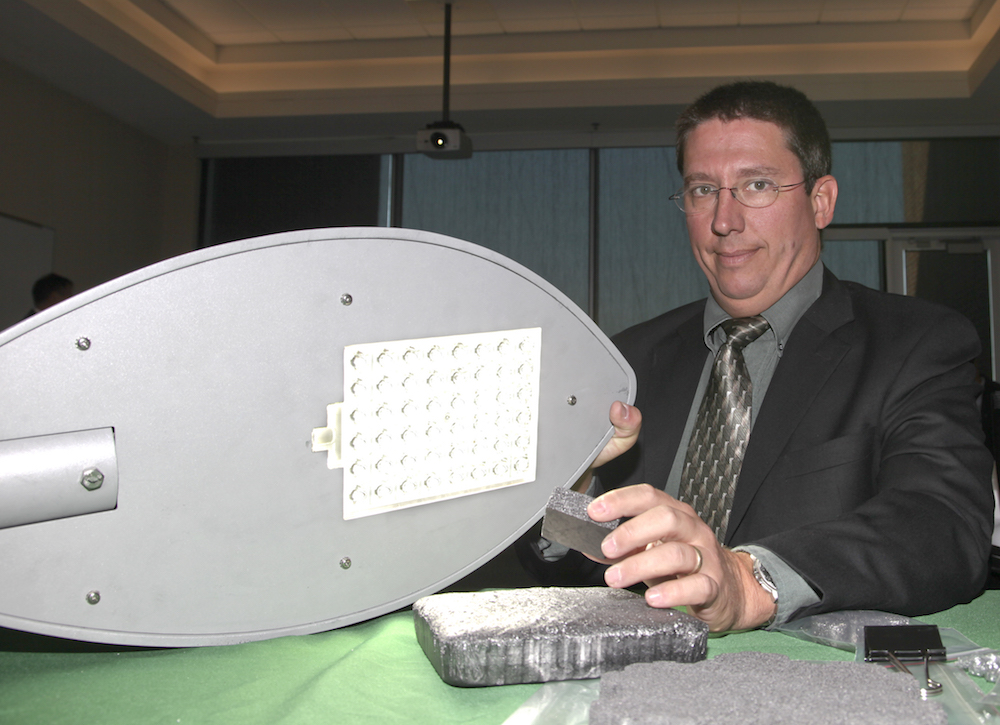
2010
Rooftop savings calculator
ORNL introduces an industry-consensus web-based calculator in 2010 that today has evolved into the Roof Savings Calculator to help residential and commercial building owners and contractors determine the energy savings performance and value of roof and attic technologies for new construction or retrofit applications.
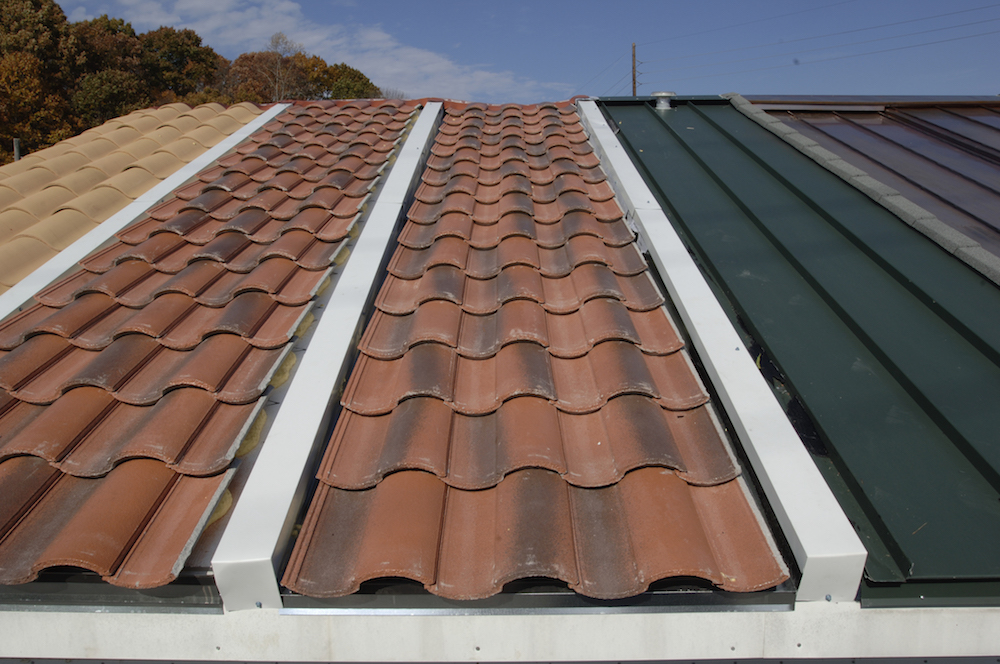
2011
Understanding Huntington’s disease
Researchers at ORNL and the University of Tennessee Medical Center use neutrons to successfully characterize, for the first time, the earliest structural formation of the disease type of the protein that causes Huntington's disease, the incurable, hereditary neurological disorder that affects one in 10,000 Americans. Watch a video about ORNL research into the molecular roots of Huntington's disease.
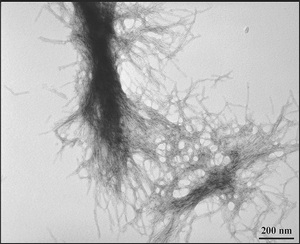
2012
Mars Curiosity
The Mars Curiosity rover, equipped with ORNL-developed iridium alloy cladding, arrives on Mars on August 6, 2012. The cladding is central to the radioisotope generator that powers the rover.

2012
Manufacturing Demonstration Facility
The Manufacturing Demonstration Facility opens in January as a DOE user facility, having established 26 memorandums of understanding with industrial partners including materials suppliers, equipment suppliers, and end users of additive manufacturing and carbon fiber technologies.

2012
Arctic and tropics experiments
ORNL launches the first Next-Generation Ecosystem Experiment (NGEE) in the Arctic region. The NGEE Arctic Phase 1 begins in 2012, and Phase 2 begins in 2015. Eventually, ORNL researchers help lead Phase 1 of the NGEE Tropics team. NGEE is a 10-year project to improve current Earth system models that simulate land surface and subsurface processes and their interactions in a warming climate.
Read more about NGEE-Arctic and NGEE-Tropics.

2012
Titan, world's most powerful supercomputer
The Titan supercomputer replaces the Jaguar supercomputer at ORNL. For a time, it ranks first on the TOP500 as the world's fastest supercomputer and consistently ranks as America's fastest supercomputer. Titan features a unique hybrid architecture with central processing units, or CPUs, and graphics processing units, or GPUs.
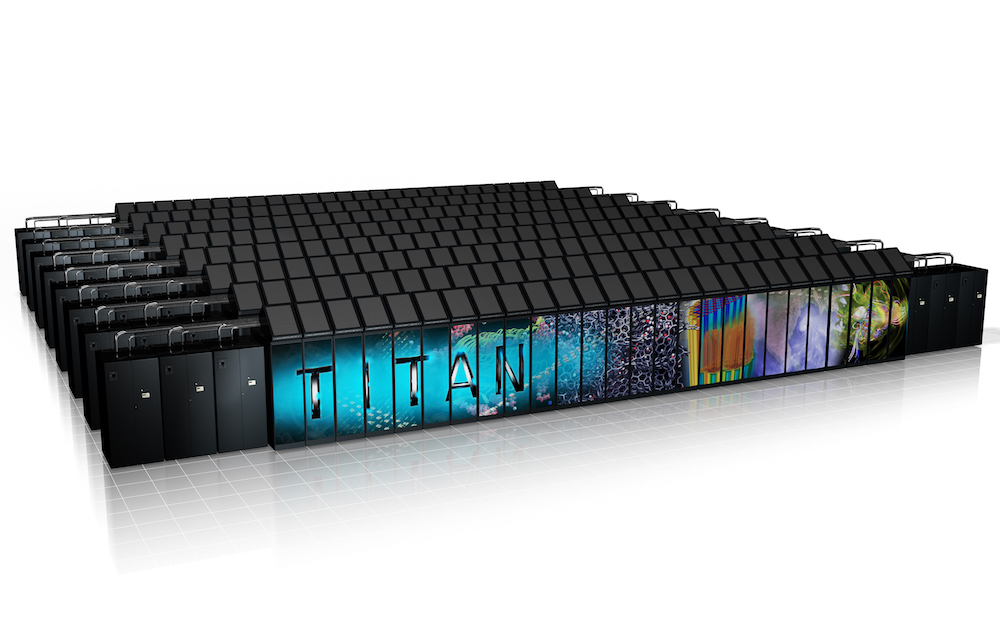
2013
Carbon Fiber Technology Facility
On March 26, 2013, ORNL dedicates the Carbon Fiber Technology Facility with Governor Bill Haslam. The 42,000 sq. ft. facility contains a 390 ft. long processing line capable of producing up to 25 tons per year and offers a highly flexible, highly instrumented line for demonstrating advanced technology scalability and producing market-development volumes of prototypical carbon fibers and precursors.
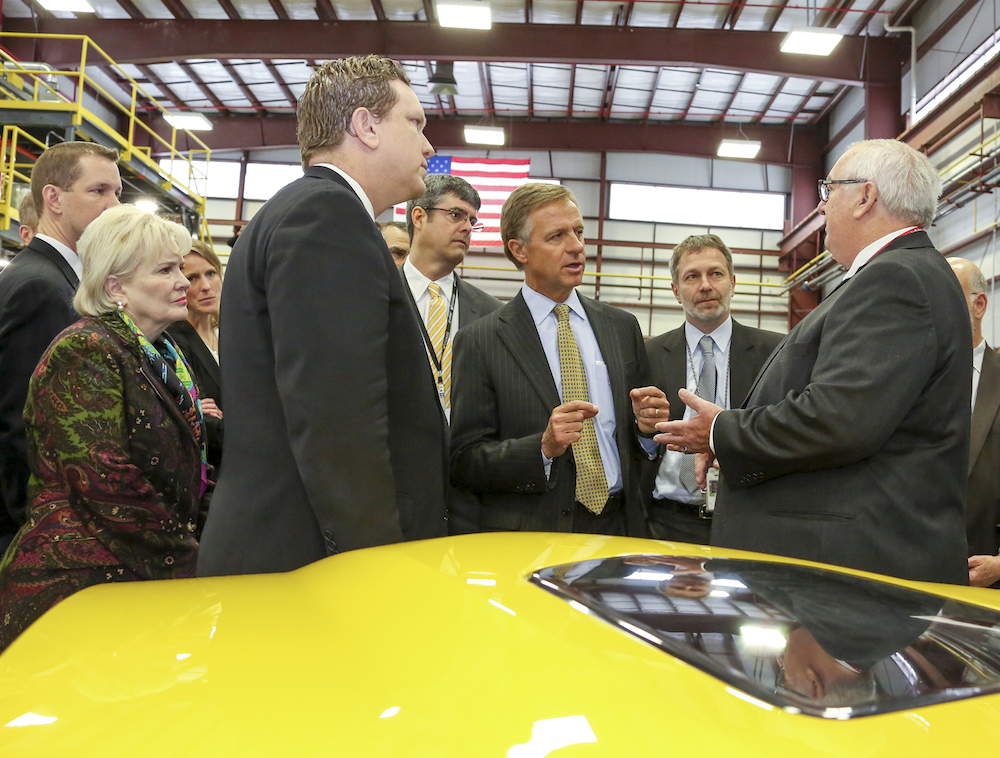
2013
Critical Materials Institute
ORNL begins to play a key role in conducting the Critical Material Institute's mission to eliminate materials criticality as an impediment to the commercialization of clean energy technologies.
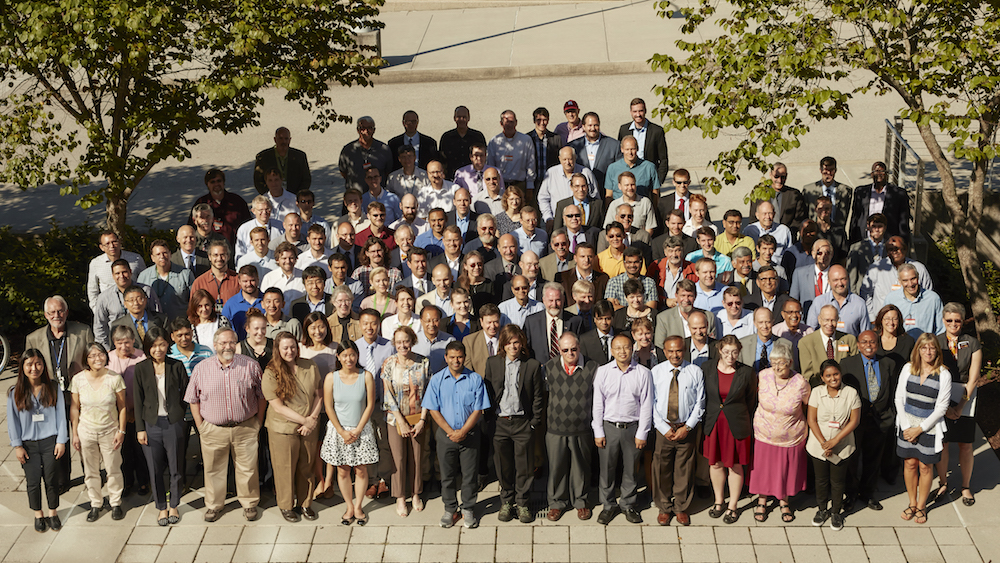
2013
Solving Mercury mysteries
Liyuan Liang leads a team of researchers who identify two genes required for transforming inorganic mercury into organic methylmercury, which is far more toxic, solving a puzzle that has stumped scientists for decades. The two genes, hgcA and hgcB, are present in all known mercury-methylating bacteria but can be deleted, limiting the mercury conversion process.
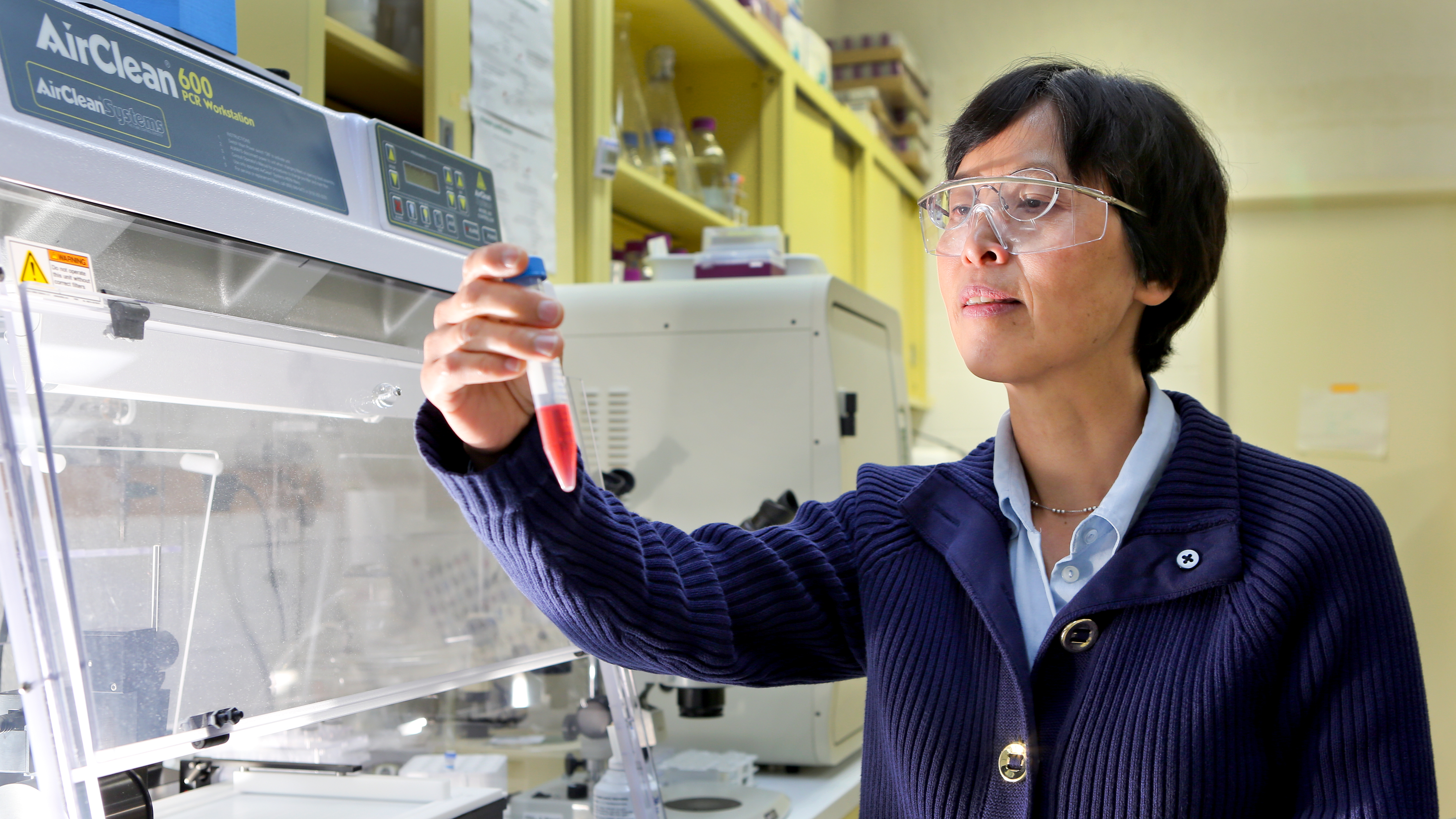
2014
Additive manufacturing
ORNL's partnership with Cincinnati Incorporated accelerates the commercialization of new additive manufacturing technologies that can print polymer parts faster and cheaper than existing technologies can print such parts. In September, after a grueling 6 day week that included nearly round-the-clock work, Local Motors, along with ORNL, Cincinnati Incorporated, and the Association for Manufacturing Technology, unveil the world's first 3D-printed, drivable vehicle during the International Manufacturing Technology Show.
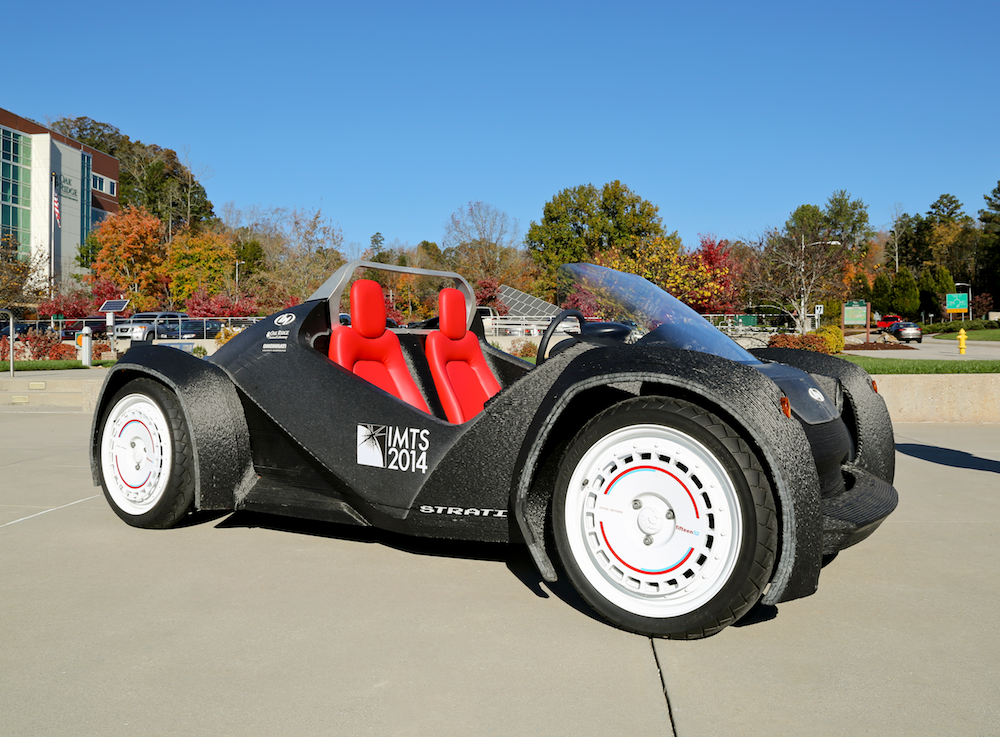
2014
Polio and the Gates Foundation
ORNL's Urban Dynamics Institute works with the Bill & Melinda Gates Foundation to aid polio vaccination efforts in developing countries. Teams at the institute apply big data analysis to population dynamics in Nigeria to help polio vaccination crews better estimate the amount of vaccine needed and to target areas of priority, saving time and money in eradicating the disease.
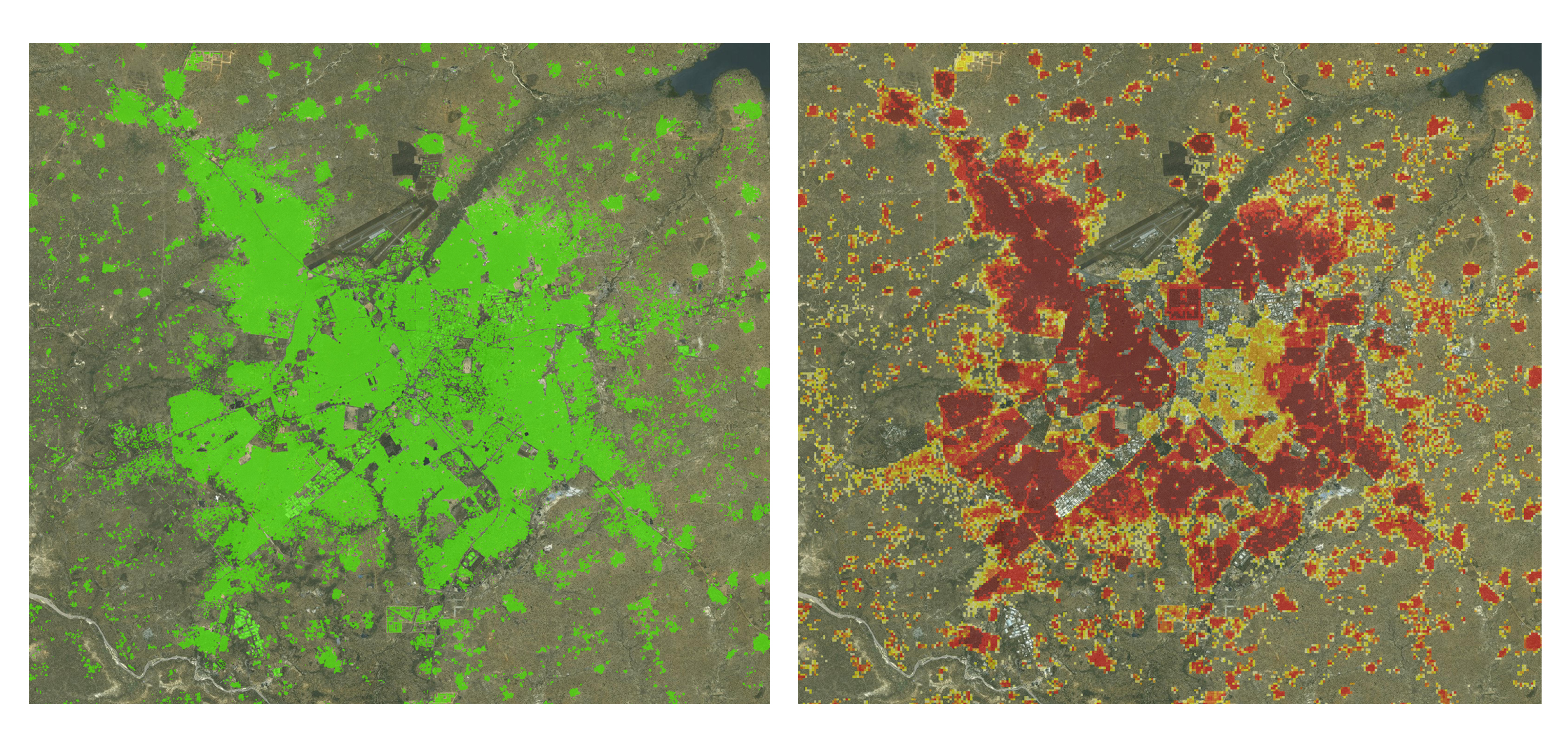
2014
Scanning probe microscopy development
ORNL researchers develop the General-Mode, or G-Mode, a method to capture the full scanning probe response that increases the speed of scanning probe microscopy a thousandfold and wins an R&D 100 Award for the project.
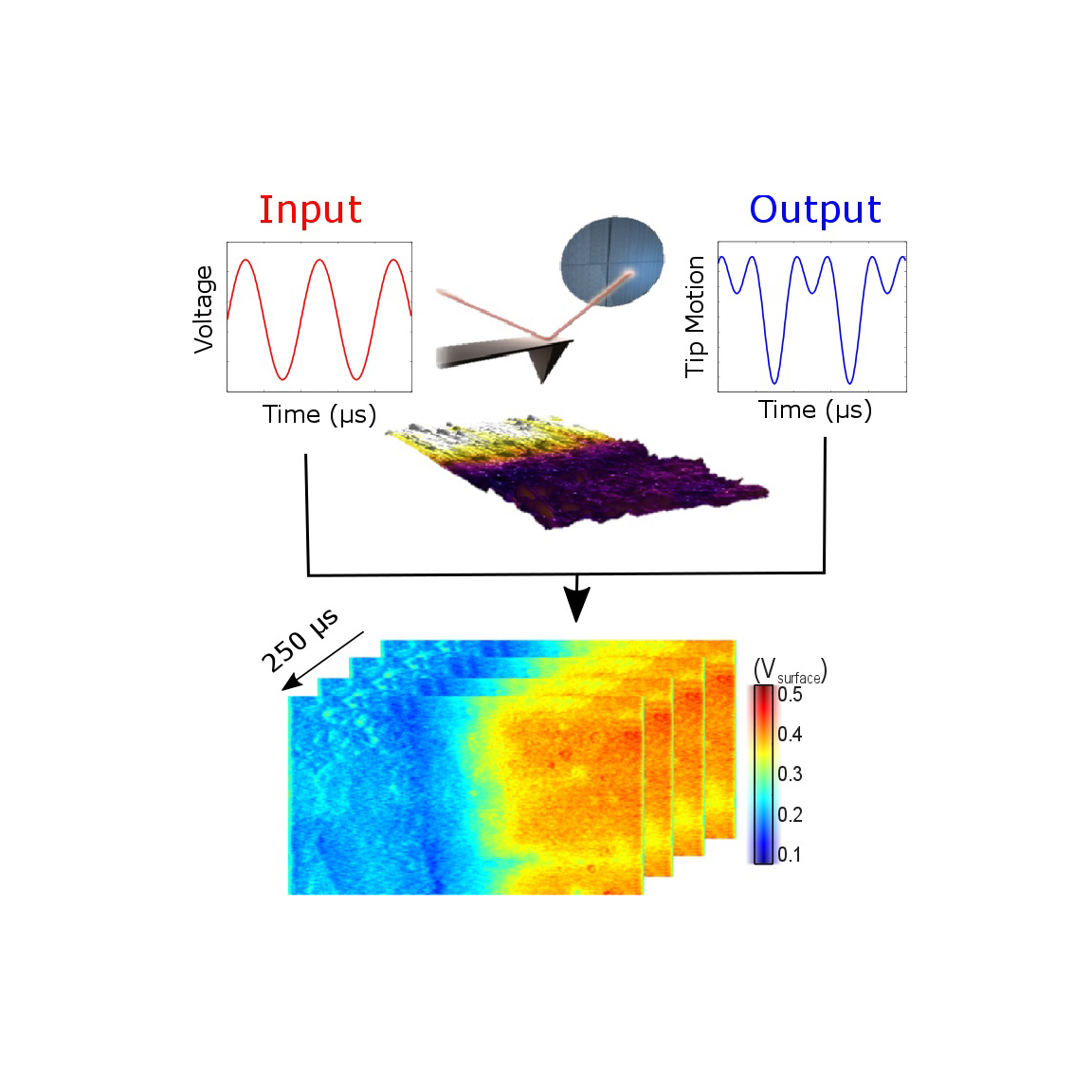
2014
Salt waste cleanup
The Caustic Side Solvent Extraction (CSSX) process receives the 2014 DOE Secretary’s Achievement Award for Salt Waste Disposal Technology Team. BoBCalix was incorporated into the CSSX process in the early 2000s and utilized in a $1 billion salt waste processing facility built at the Savannah River Site to clean up millions of gallons of DOE’s most dangerous, Cold War-era waste. This process is expected to save billions of dollars in cleaning up waste over its lifetime.
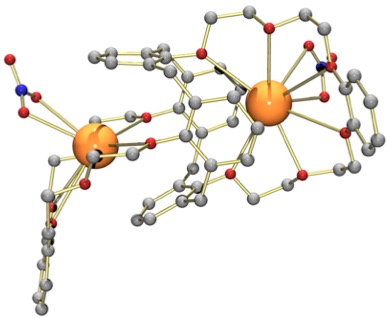
2015
Barack Obama and Joe Biden
President Barack Obama and Vice President Joe Biden travel to East Tennessee in January and view the 3D-printed Shelby Cobra on display for the first time during the announcement of the Institute for Advanced Composites Manufacturing Innovation.
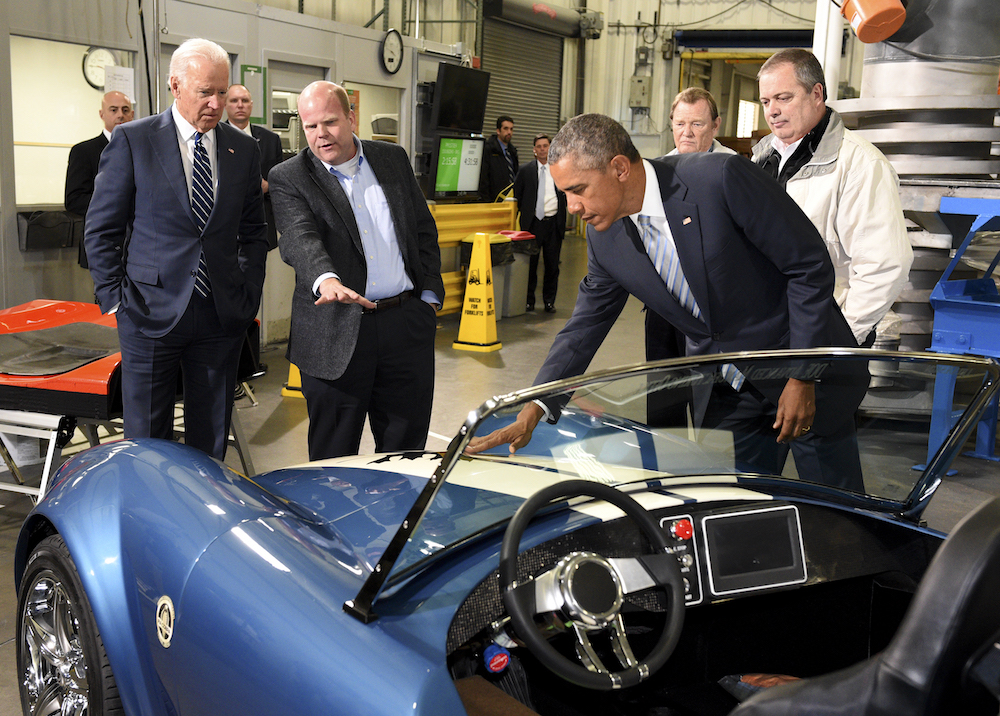
2015
SPRUCE ecosystem experiment
The Spruce and Peatland Responses Under Changing Environments (SPRUCE) ecosystem experiment begins in northern Minnesota with significant ORNL contributions. The experiment is designed to assess the response of northern peatland ecosystems to increases in temperature and exposures to elevated atmospheric carbon dioxide concentrations by monitoring organic and biogeochemical processes in a mossy, sphagnum bog forest in the USDA Forest Service Marcell Experimental Forest.
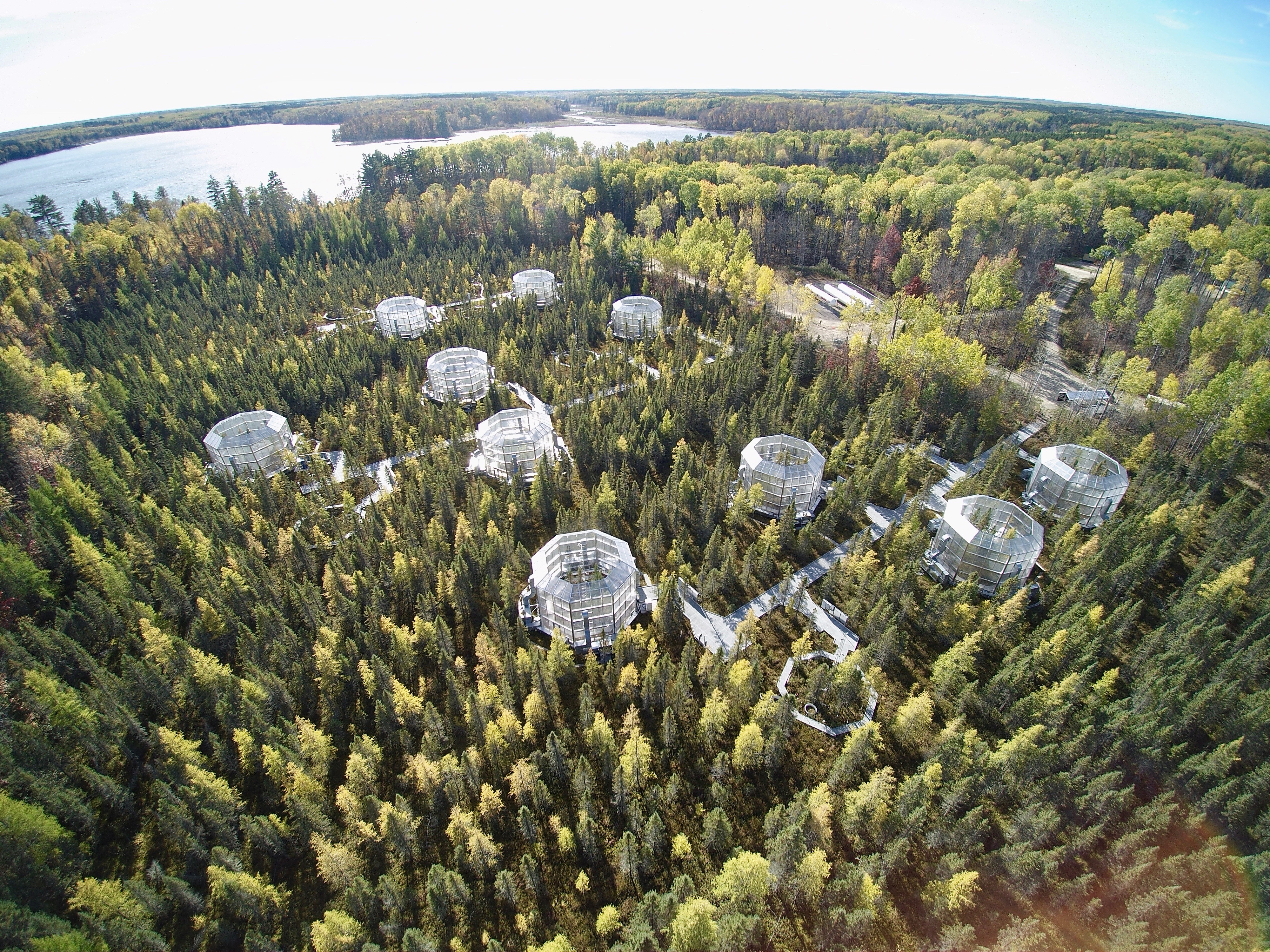
2015
Integrated energy demonstration
An ORNL team works with industry partners to manufacture and connect a natural-gas-powered hybrid electric vehicle with a solar-powered building to create an integrated energy system. Within the Additive Manufacturing Integrated Energy (AMIE) demonstration, power can flow in either direction between the vehicle and building through a lab-developed wireless technology. Power is stored in a battery energy storage unit connected to the building. Watch a video that shows how electrical energy flows through the components of AMIE.
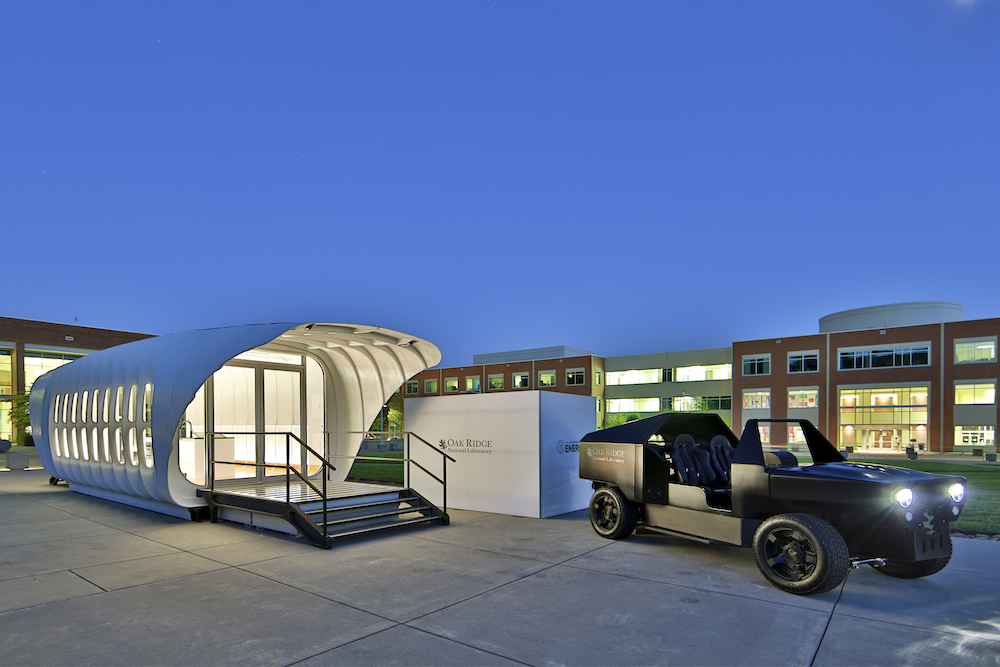
2015
Plutonium-238 production resumes
With the production of 50 grams of plutonium-238, researchers at ORNL restore a US capability dormant for nearly 30 years and set the course to provide power for NASA and other missions.
2015
Monitoring Iran's nuclear activity
The International Atomic Energy Agency begins using ORNL technology in the Online Enrichment Monitor (OLEM) to survey Iran's nuclear activity as part of the Joint Comprehensive Plan of Action international treaty.
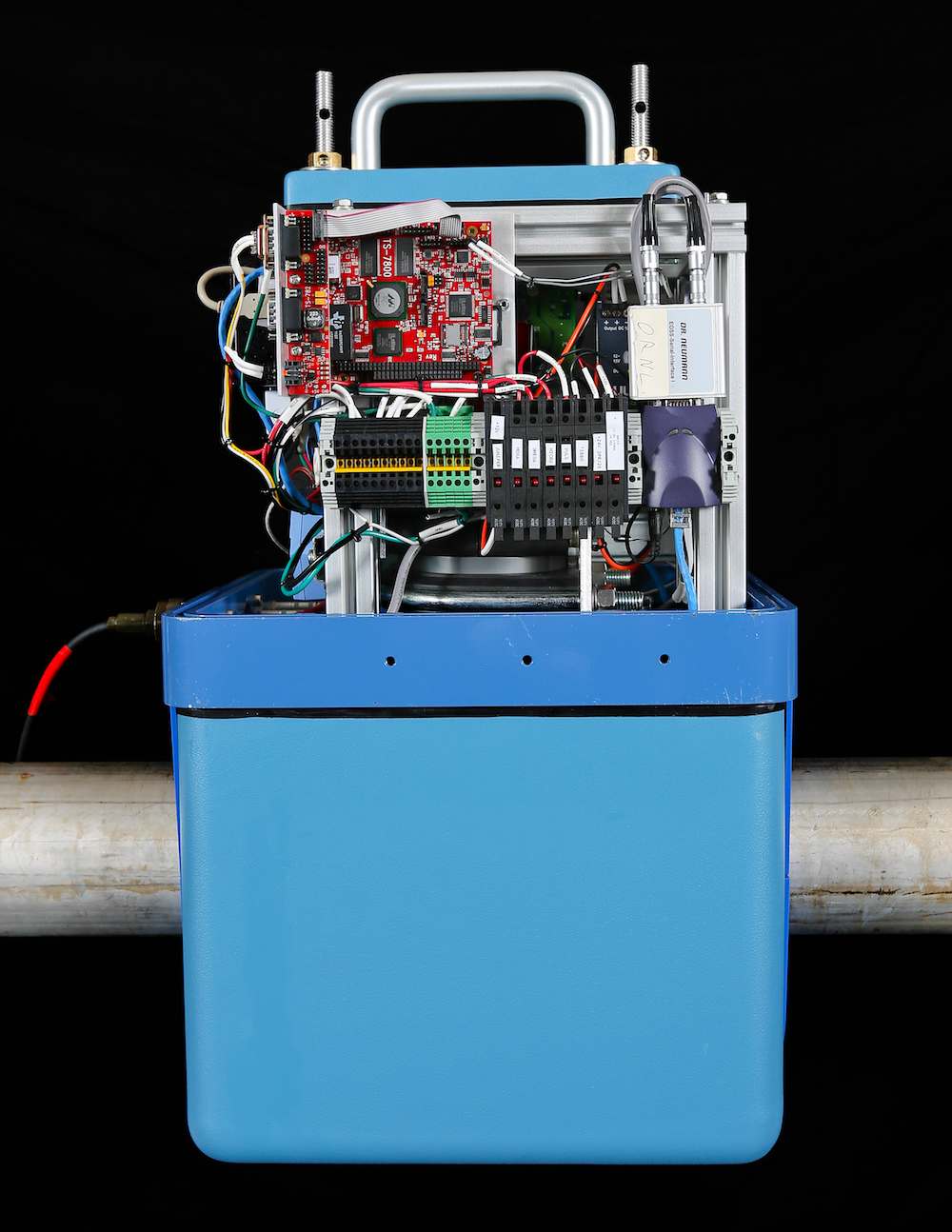
2016
New state of water molecule
ORNL researchers use neutron scattering and computational modeling to reveal a unique and unexpected behavior of water molecules under extreme confinement that is unmatched by any known gas, liquid, or solid states.
2016
Guinness World Record
A 3D-printed trim-and-drill tool developed by researchers at ORNL receives the title of largest solid 3D-printed item by Guinness World Records. The trim tool is printed in only 30 hours using carbon fiber and ABS thermoplastic composite materials for The Boeing Company for use in the construction of the Boeing 777X passenger jet. It measures 17.5 ft long, 5.5 ft wide, and 1.5 ft tall; it weighs approximately 1,650 lb.
2016
Converting carbon dioxide into ethanol
Researchers develop an electrochemical process that uses tiny spikes of carbon and copper to turn carbon dioxide, a greenhouse gas, into ethanol.
2016
Efficient aircraft engines
The DOE Continuous Fiber Ceramic Composite program led by ORNL partnered with General Electric from 1991 to 2001 to develop high-temperature, lightweight ceramic matrix composites (CMCs). In 2016, LEAP, a new aircraft engine, becomes the first widely deployed CMC-containing product and demonstrates superior fuel efficiency. The LEAP engine generates more than $150 billion in preorders in its first year on the market.
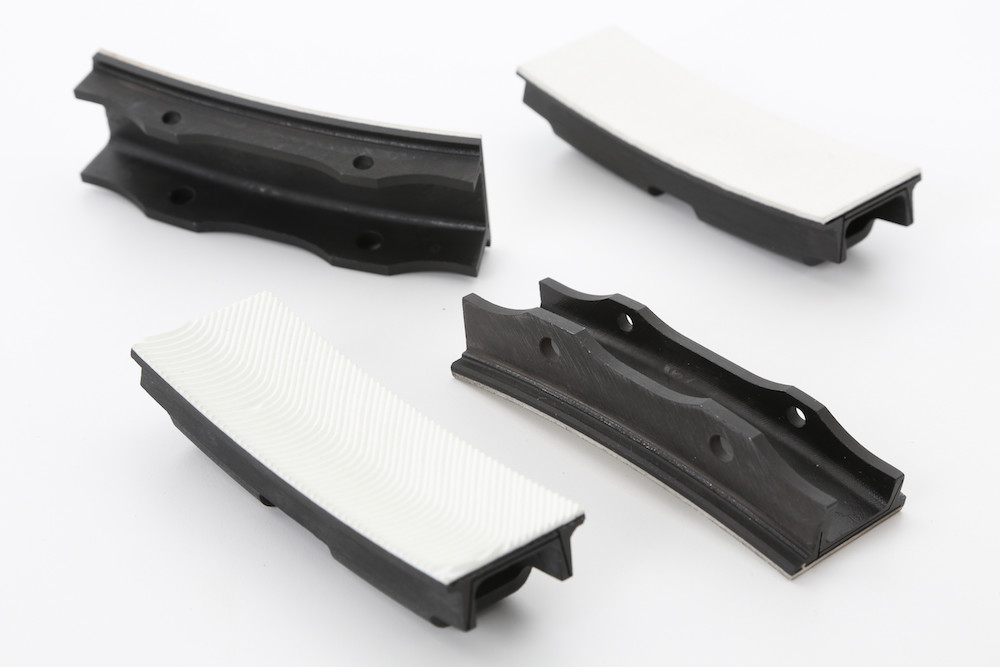
2016
Emissions and fuel efficiency standards
The Environmental Protection Agency and the National Highway Traffic Safety Administration cite work done in ORNL's Vehicle Systems Integration Laboratory in a ruling setting emissions and fuel efficiency standards for medium- and heavy-duty trucks.
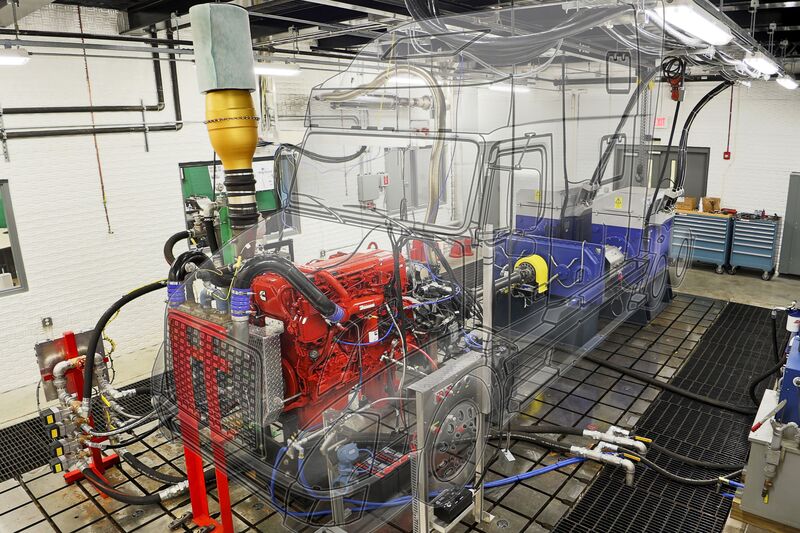
2016
Exascale Computing Project
A multilaboratory partnership working to develop an exascale system 50 times more powerful than current computers, the Exascale Computing Project establishes its Project Office at ORNL.

2016
First high-power wireless charging for vehicles
In March 2016, ORNL demonstrates the world's first high-power (20 kilowatt) wireless charging system for passenger vehicles. The ORNL system achieves 90 percent efficiency at three times the rate of plug-in systems commonly used for electric vehicles.
2016
Superhydrophobic material for electronic devices
A team of ORNL researchers develops a superhydrophobic glass coating capable of repelling water, dust, dirt, oils, and other contaminants. The coating is made by depositing a thin film on a glass surface and etching a 3D network similar to microscopic coral that enables water-repellent and antireflective properties. In September 2016, Samsung Electronics exclusively licenses the technology to improve the performance of the glass displays on its smartphones, tablets, and other electronic devices.
2016
Element 117 named tennessine
In November, the International Union for Pure and Applied Chemistry (IUPAC) formally verifies element 117 as one of four new elements. Element 117 is a collaboration between ORNL, the University of Tennessee, Knoxville; Vanderbilt University; and the Joint Institute for Nuclear Research in Russia. IUPAC officially names element 117 "tennessine" in recognition of Tennessee's significant contributions to the discovery of the element.
2017
Breaking the data transfer efficiency record
A team of ORNL researchers use super-dense coding, a process by which the properties of particles like photons, protons, and electrons are used to store as much information as possible, to set a new information transfer record of 1.67 bits per qubit.
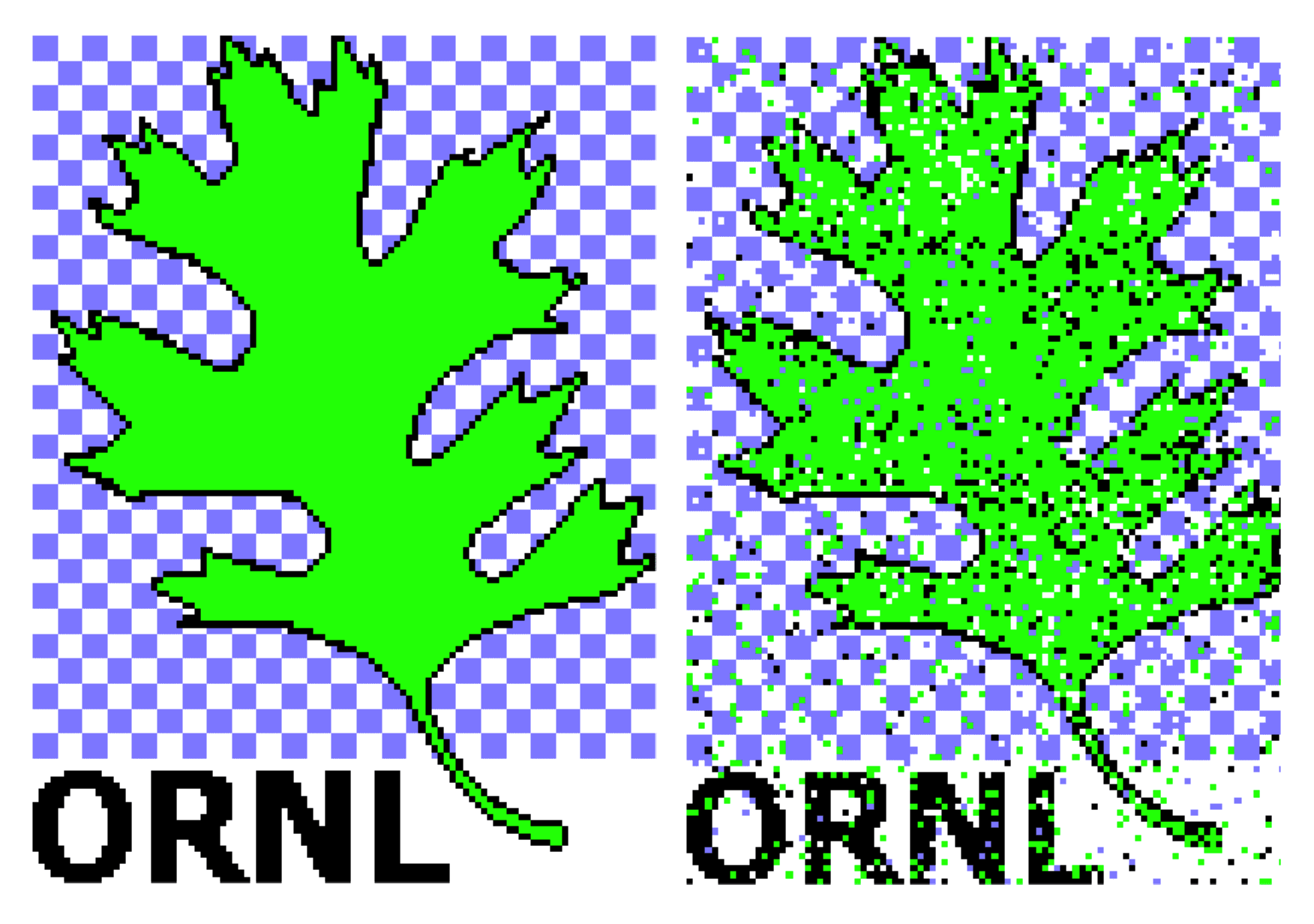
2017
Partnering for America's veterans
In July 2017, ORNL announces it will partner with the US Department of Veterans Affairs for the MVP-CHAMPION project to examine the genetic causes of disease. The project will improve the health outcomes of veterans and the general population through the use of big data and high-performance computing.
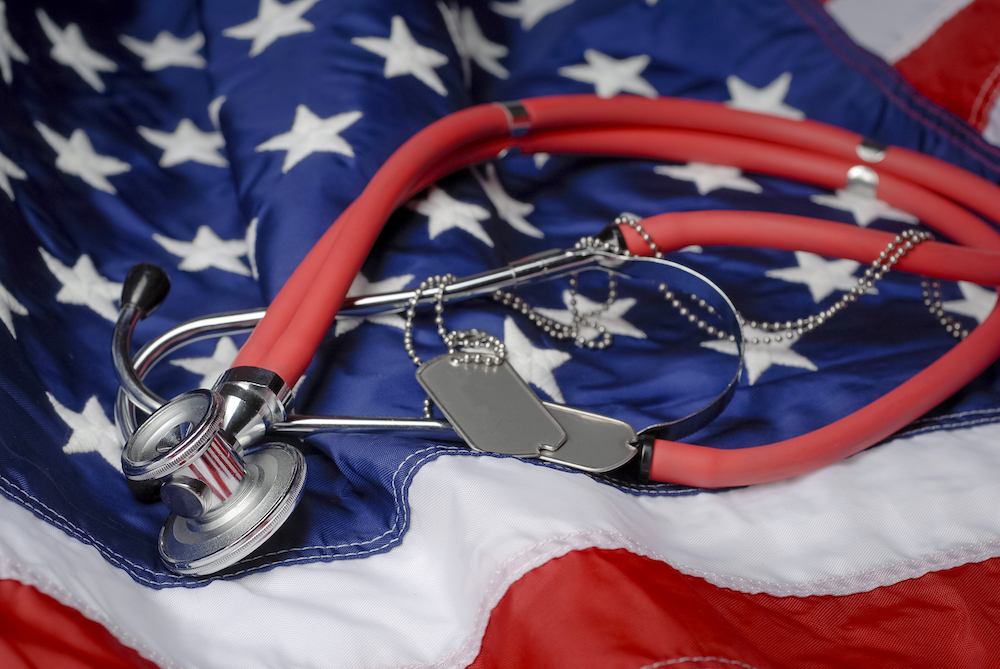
2017
Center for Bioenergy Innovation
In July 2017, DOE funds the Center for BioEnergy Innovation at ORNL to accelerate biofuels and bioproducts research. The new center is one of four started by DOE and follows the success of the ORNL BioEnergy Science Center and others in demonstrating new technology for more efficient and less costly biofuels production.
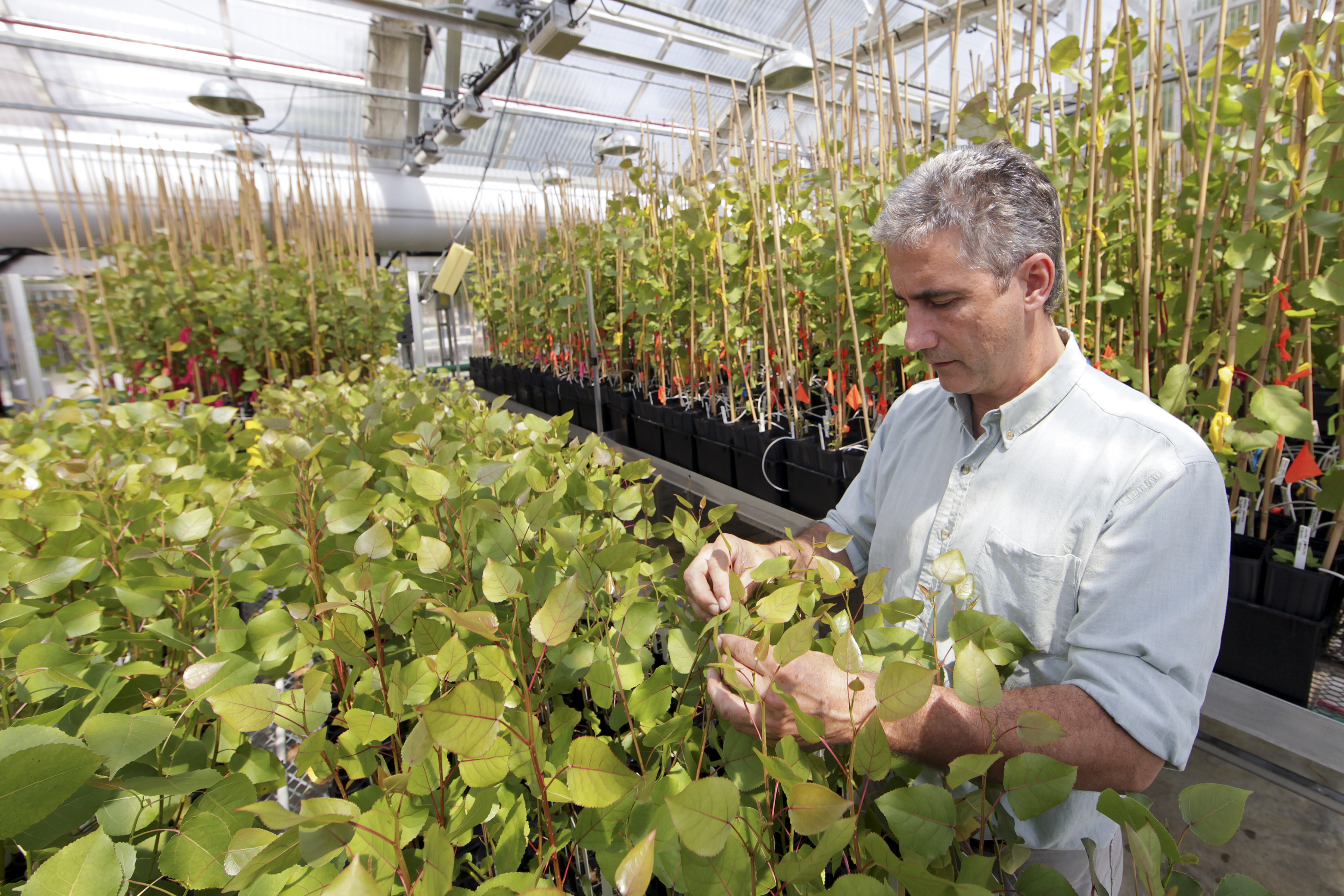
2017
Halfway to first plasma
ITER is halfway to its initial operation goal of “first plasma” in 2025. America is a participant in the multinational project, with US efforts headquartered at ORNL as a DOE Office of Science Program. First plasma will be the first stage of operation for ITER as a functional machine.
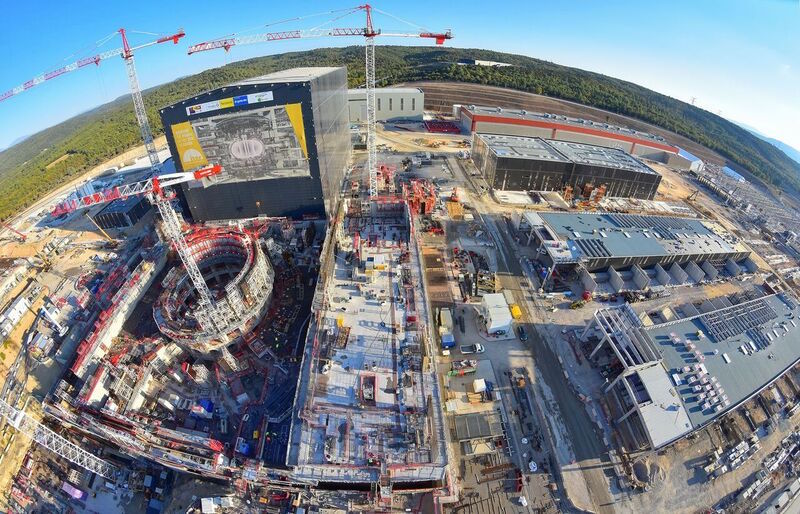
2018
Summit Supercomputer
ORNL launches Summit, the next leap in leadership-class computing systems for open science. Compared with Titan, the lab's current supercomputer, Summit moves data 5 to 10 times faster, stores 8 times more data, and performs many more calculations simultaneously. Researchers who have been using supercomputers will be able to add much more complexity to their codes, which will produce models and simulations with much greater resolution and higher fidelity for improved research output.
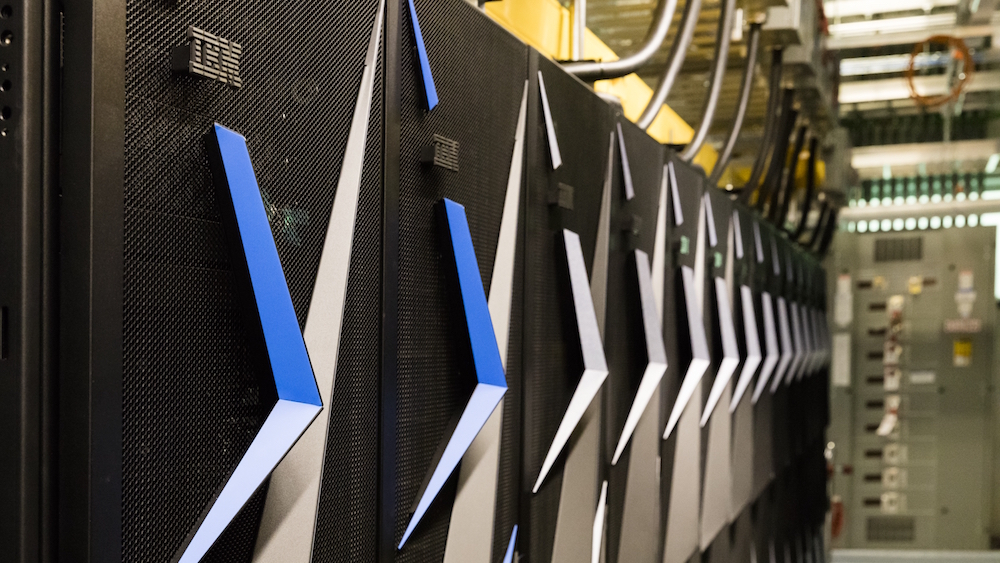
2018
Future of Neutrons
ORNL is planning several upgrades to the High Flux Isotope Reactor (HFIR) and the Spallation Neutron Source (SNS) over the coming years to ensure that the US will remain a world leader in neutron research. These upgrades include expanding the research capabilities and capacities of HFIR and SNS, doubling the power available for neutron production at SNS through the Proton Power Upgrade, and building a new fourth generation neutron source at SNS, the Second Target Station.
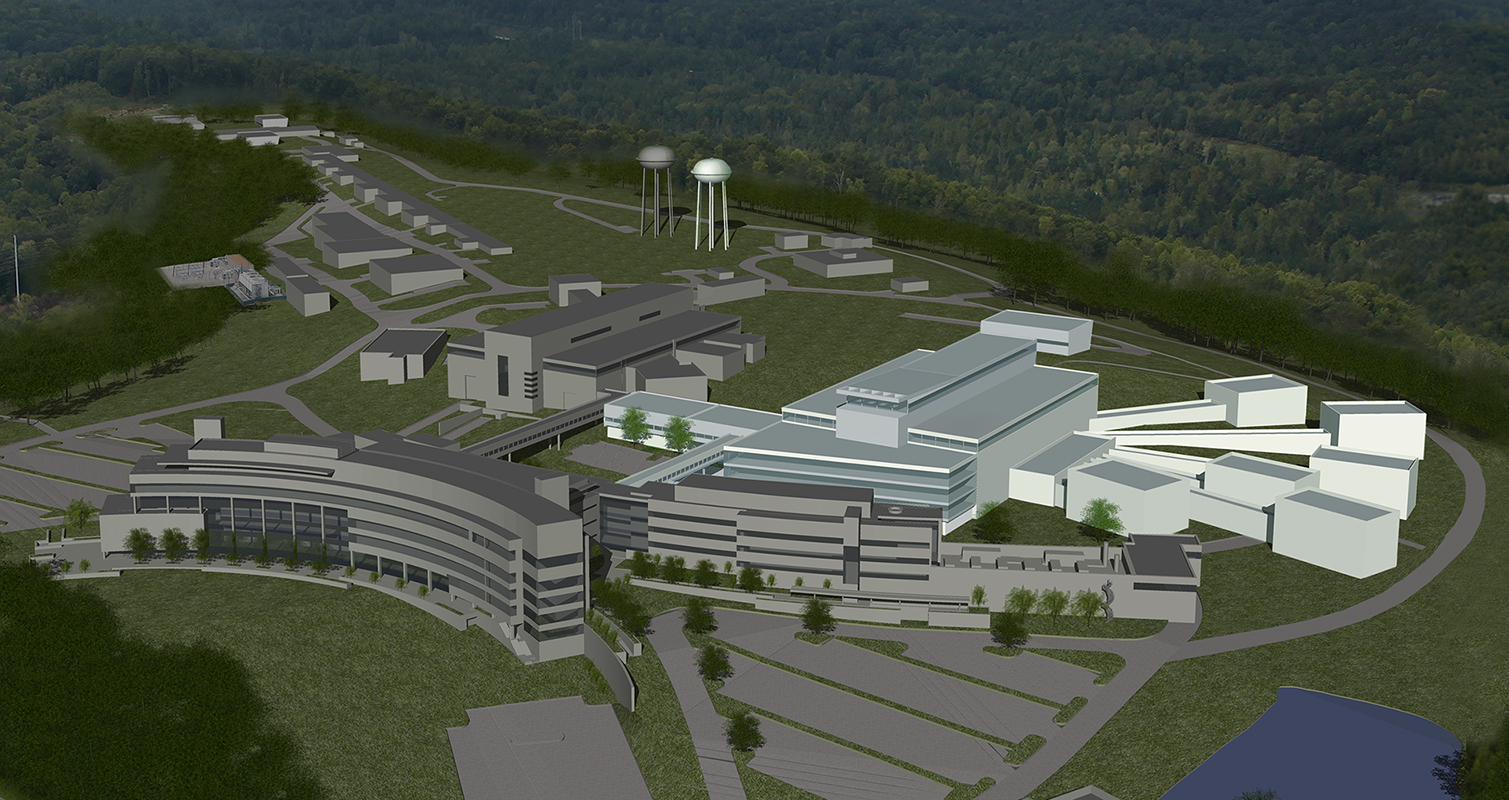
2018
Actinium-227
ORNL starts producing actinium-227 to meet the high demand for Xofigo®, a highly effective drug used in the treatment of prostate cancer. The work is part of a 10-year agreement between the DOE Isotope Program and Bayer.
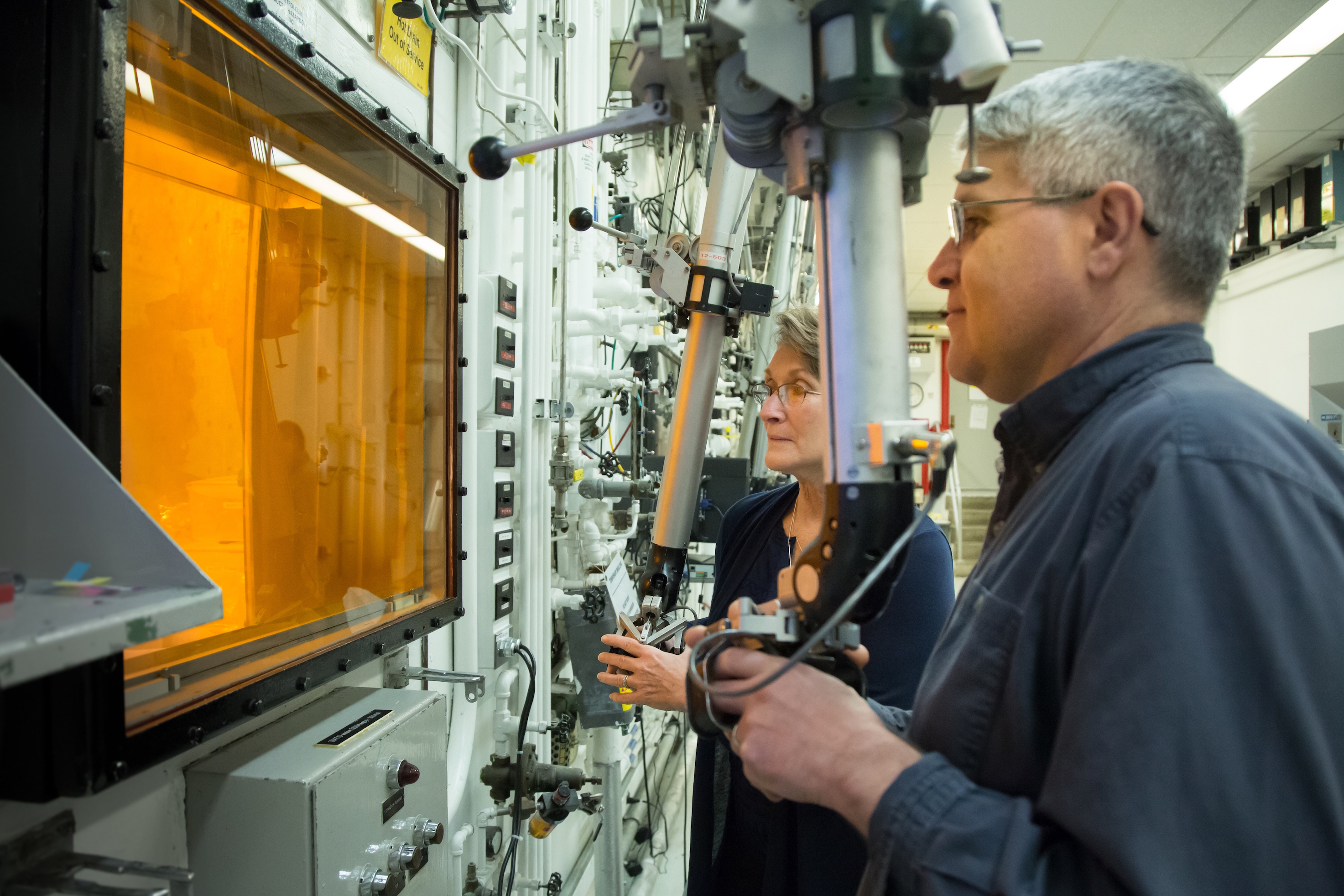
2020
COVID-19 Response
In the race to identify solutions to the COVID -19 pandemic, ORNL researchers join the fight by applying expertise in computational science, advanced manufacturing, data science, and neutrons science.
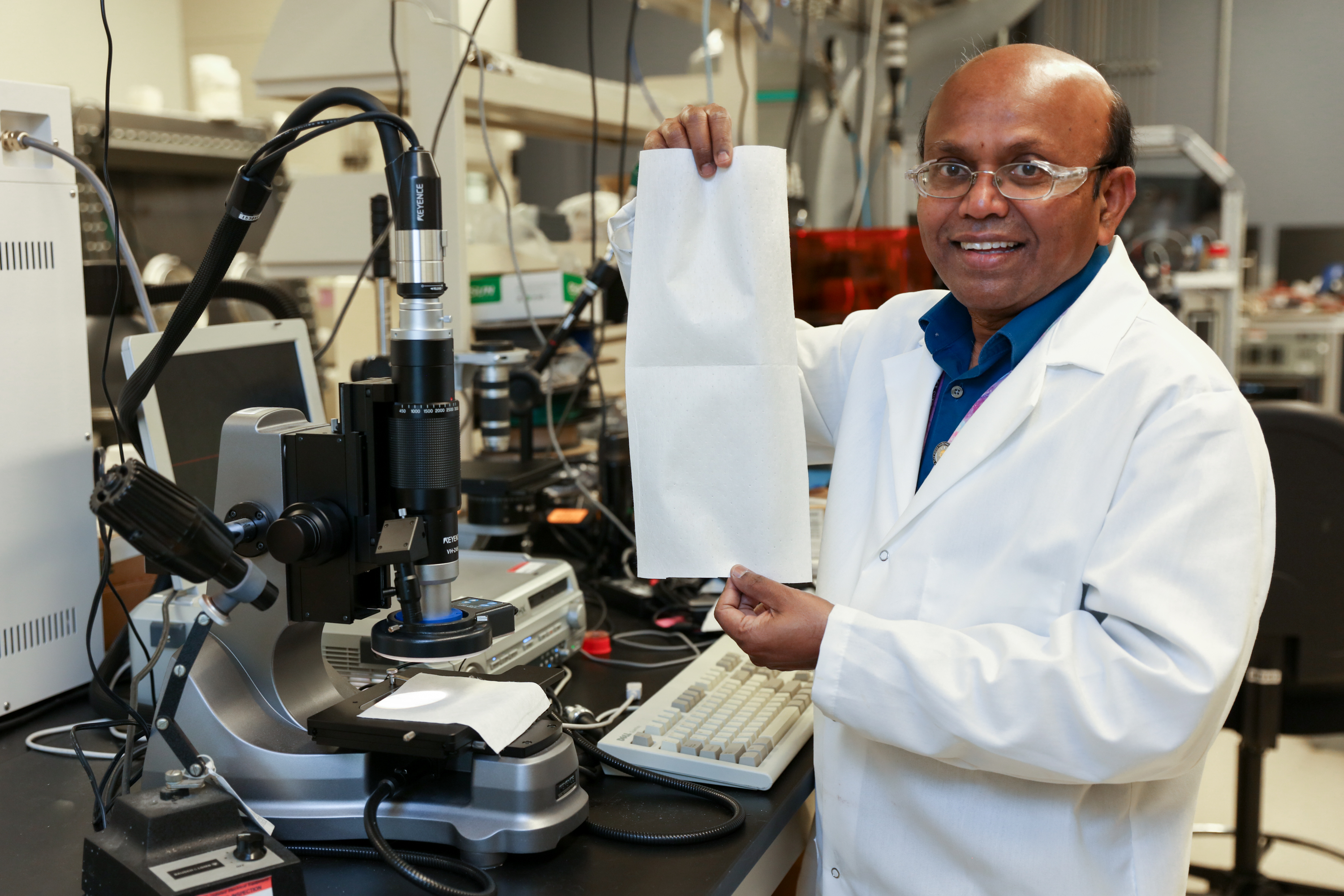
2020
Powering Mars Exploration
The Perseverance rover begins its journey to Mars, where it will use ORNL-produced plutonium- 238 to power its instrumentation systems while ORNL-developed iridium cladding and carbon-bonded carbon fiber protect the plutonium fuel.
2022
Breaking exascale
The Frontier supercomputer debuts as the worlds fastest. It is the first to achieve a level of computing performance known as exascale, a threshold of a quintillion calculations per second.

